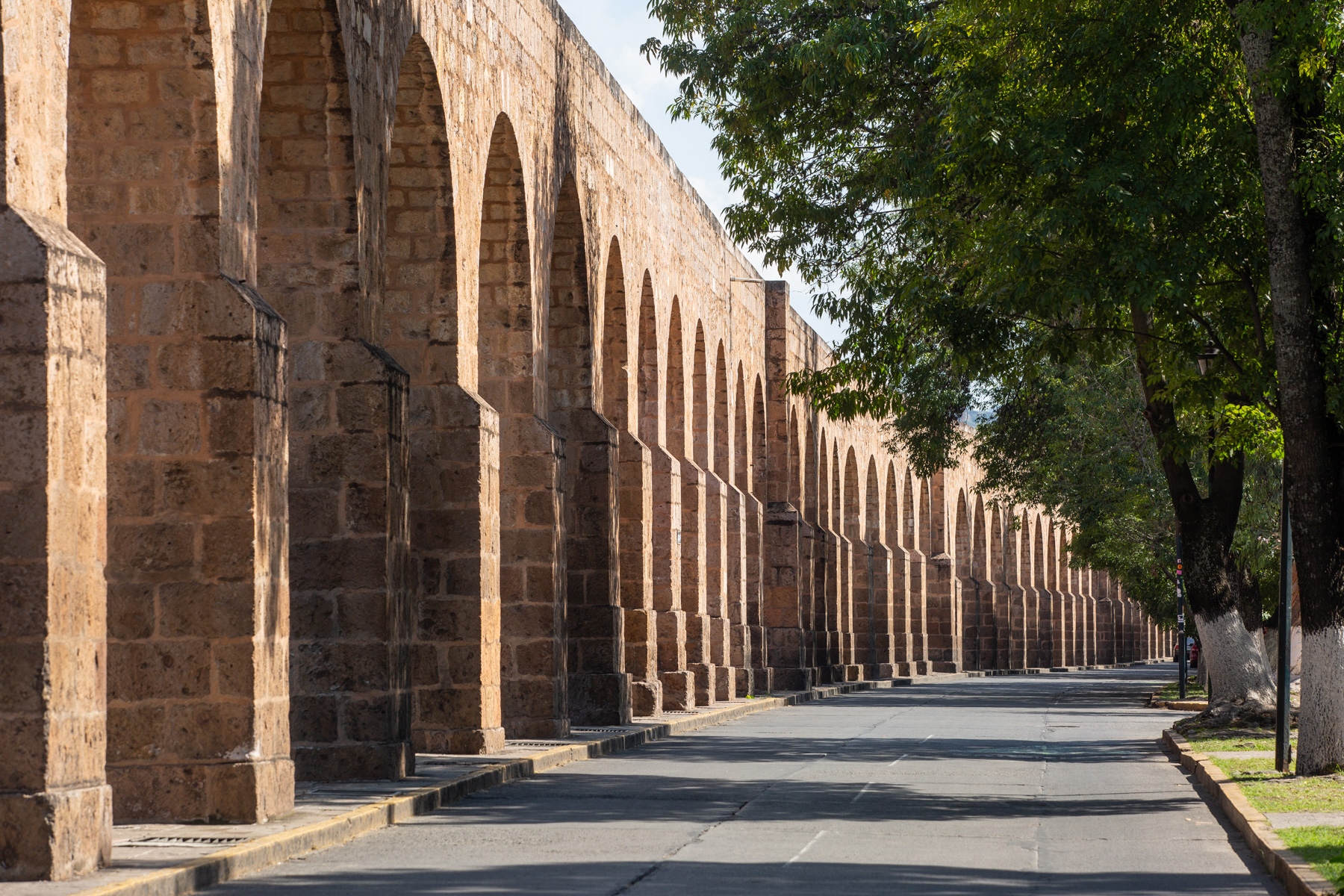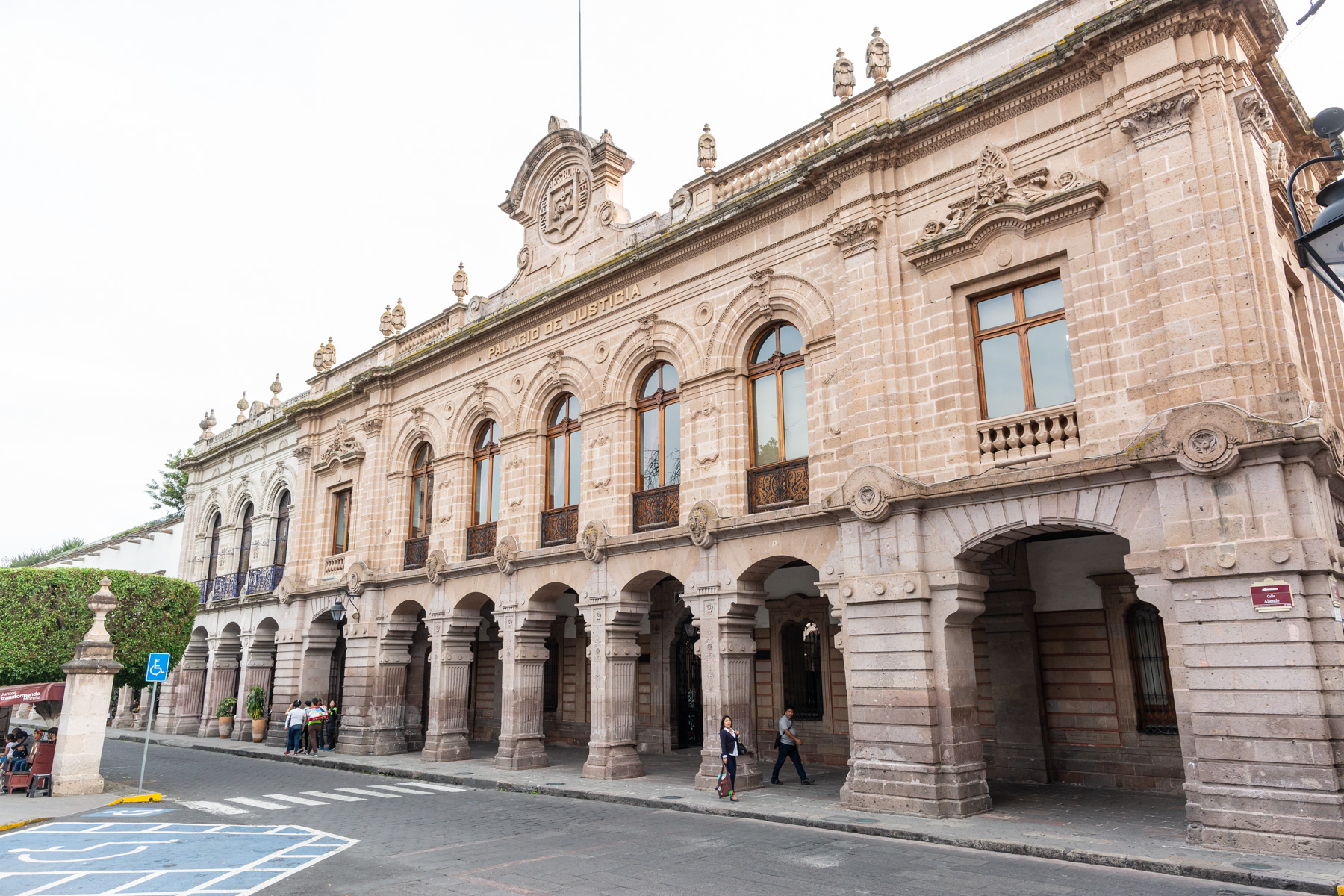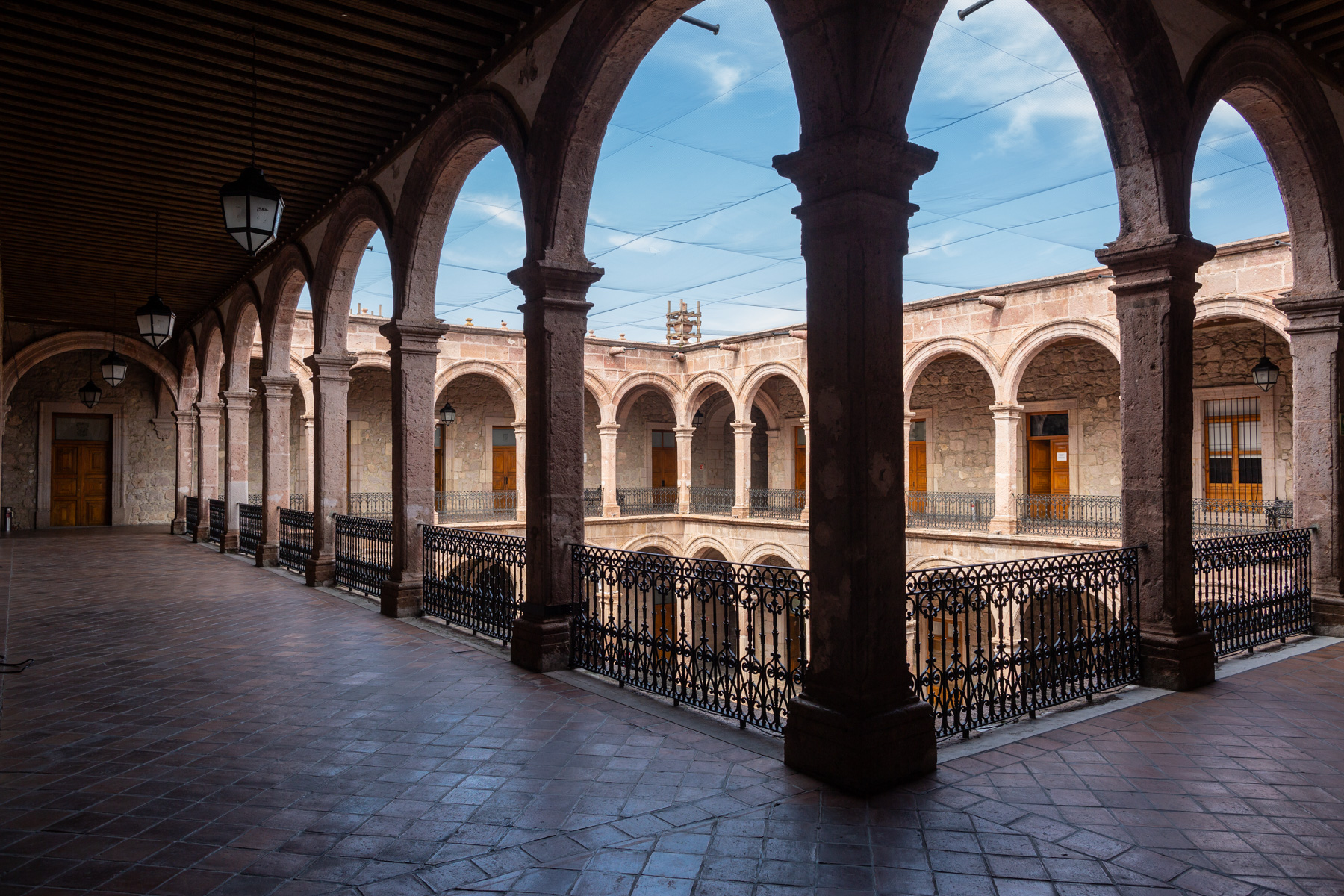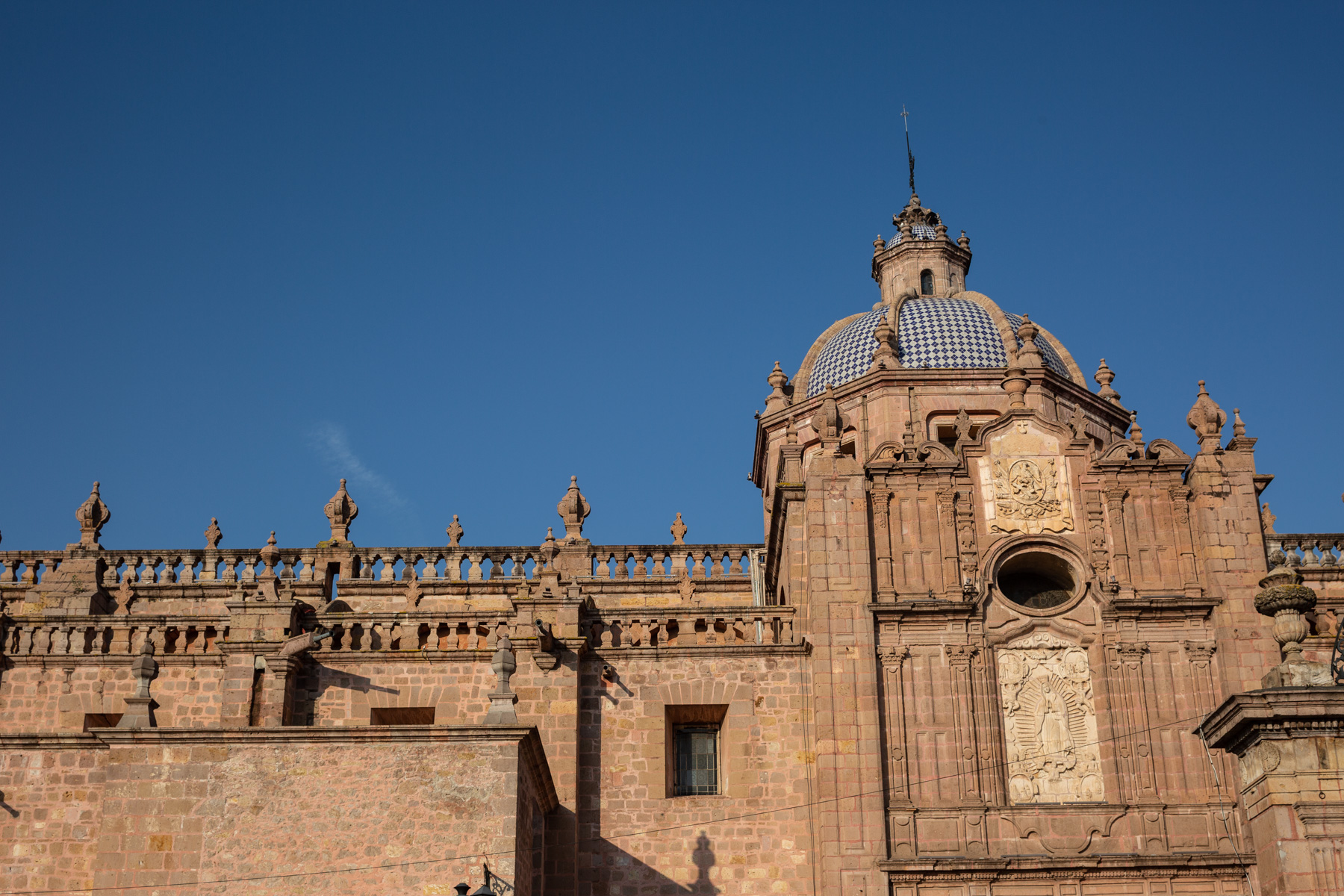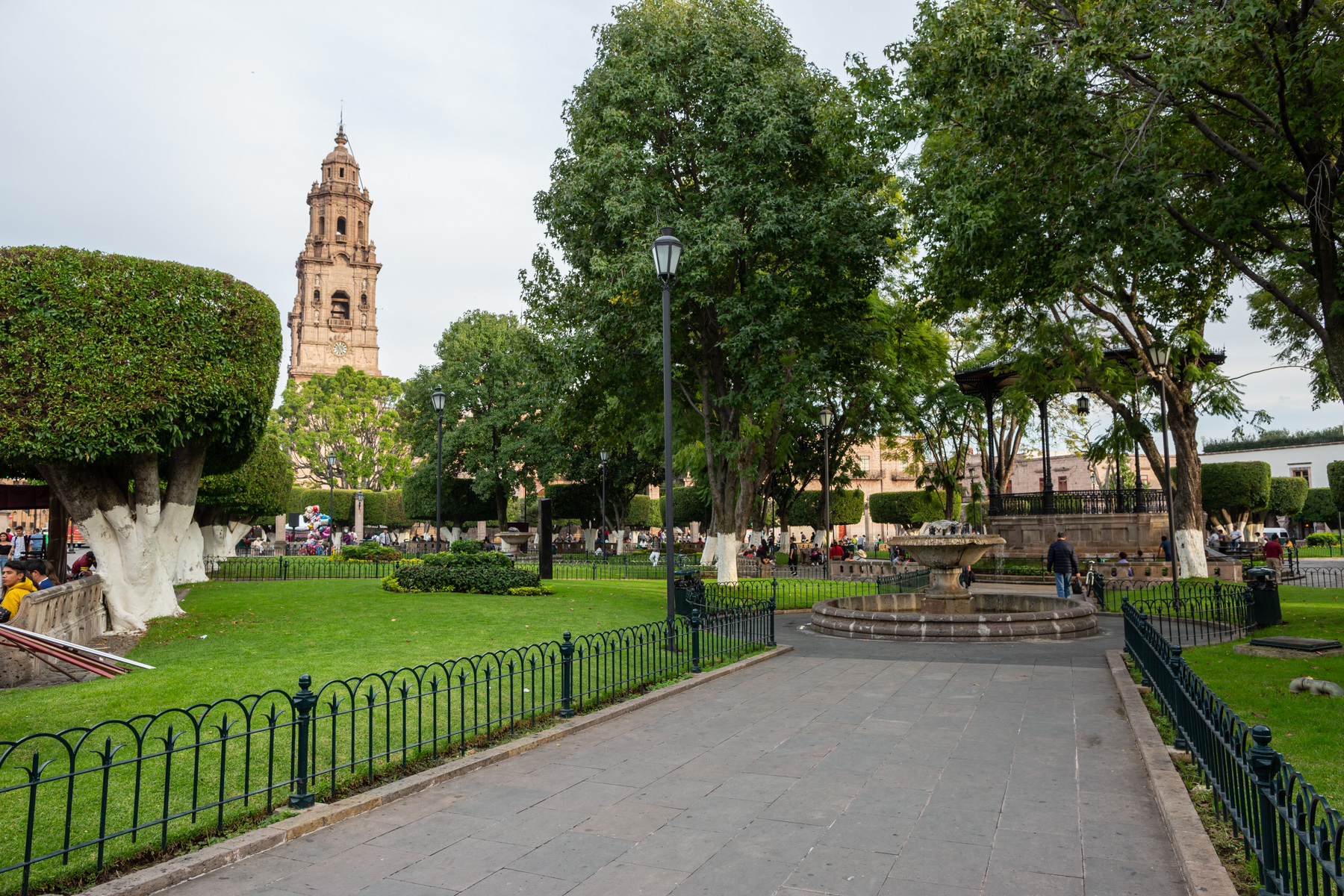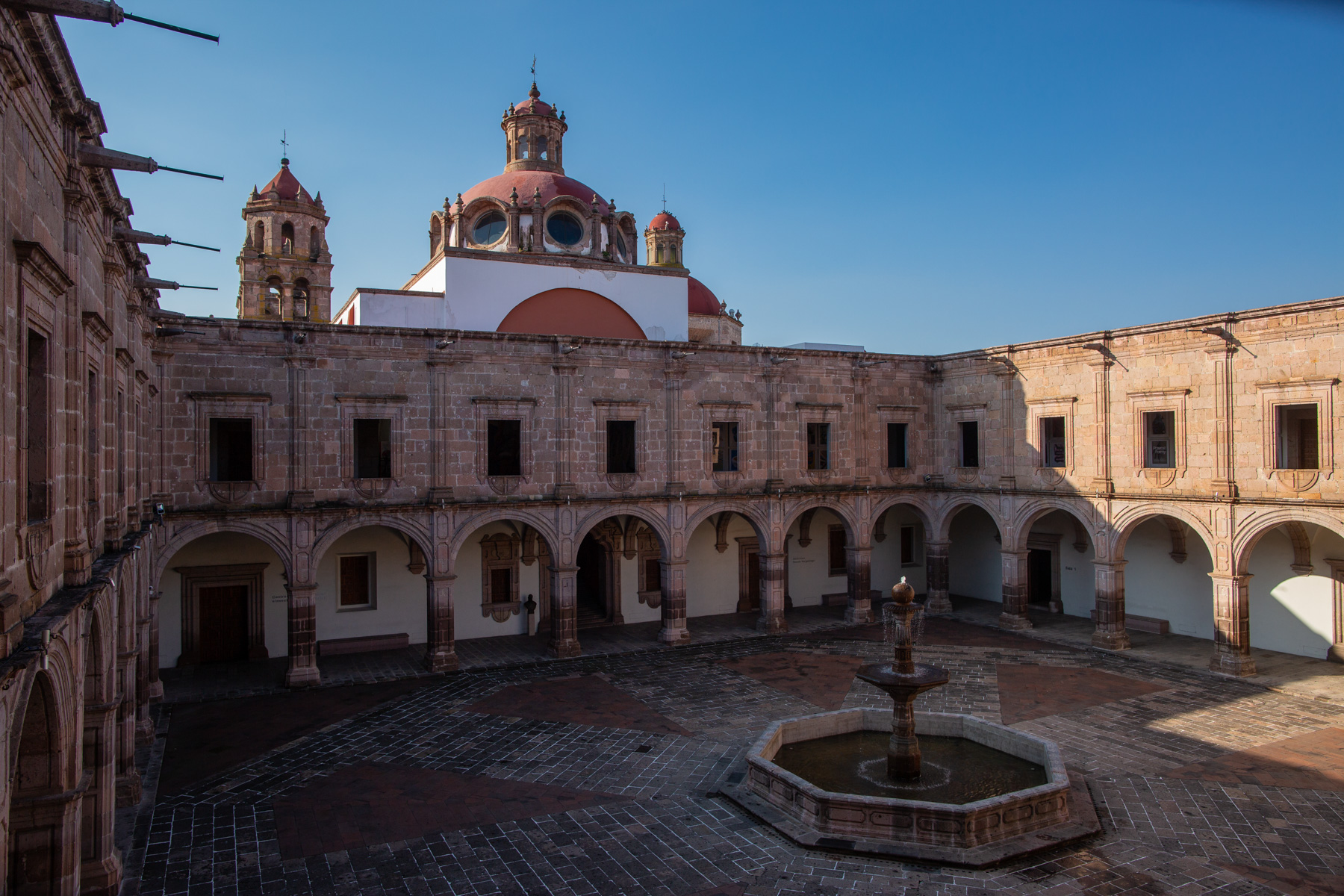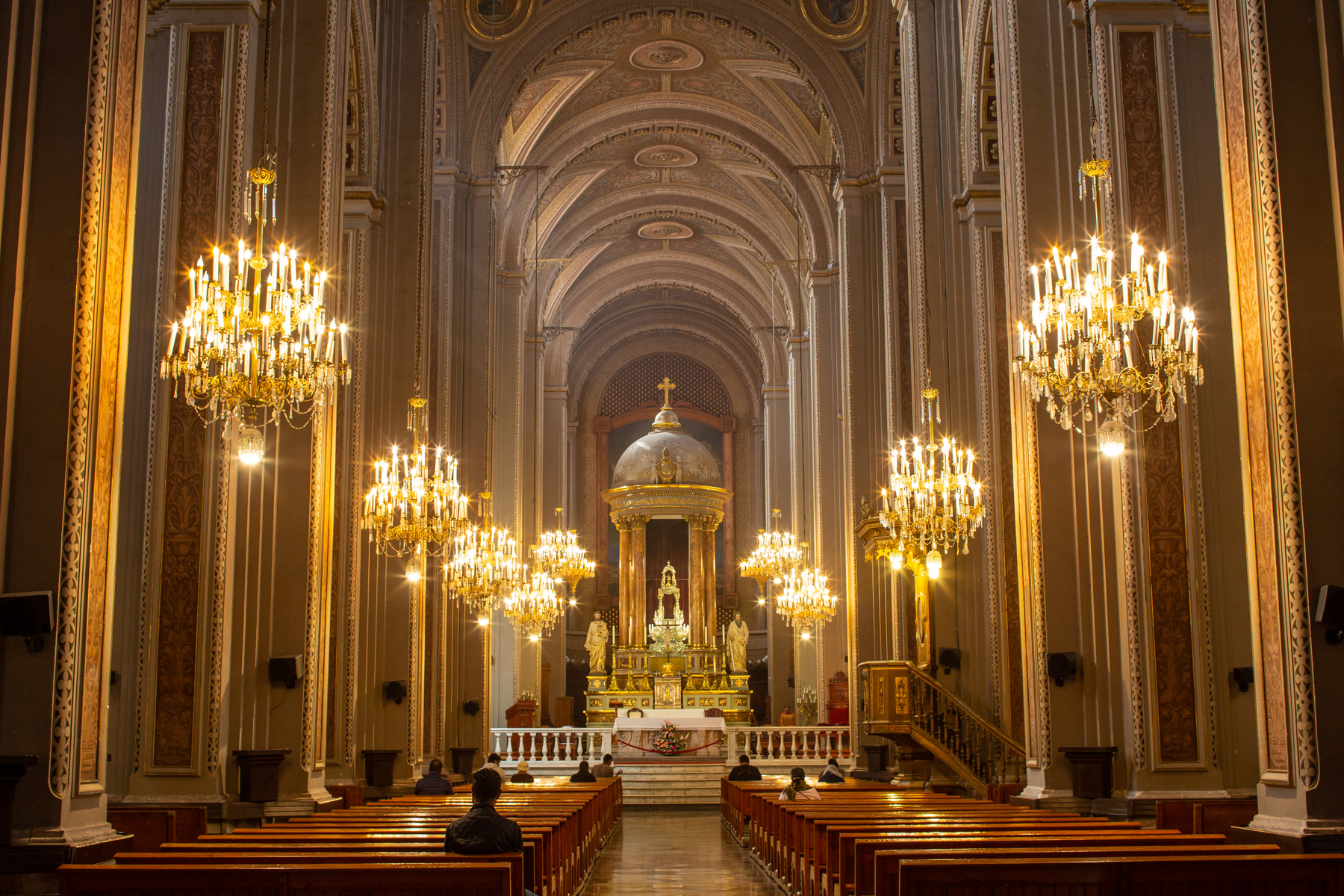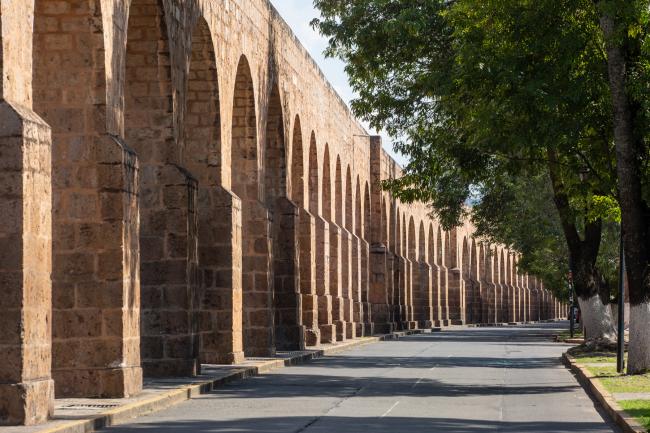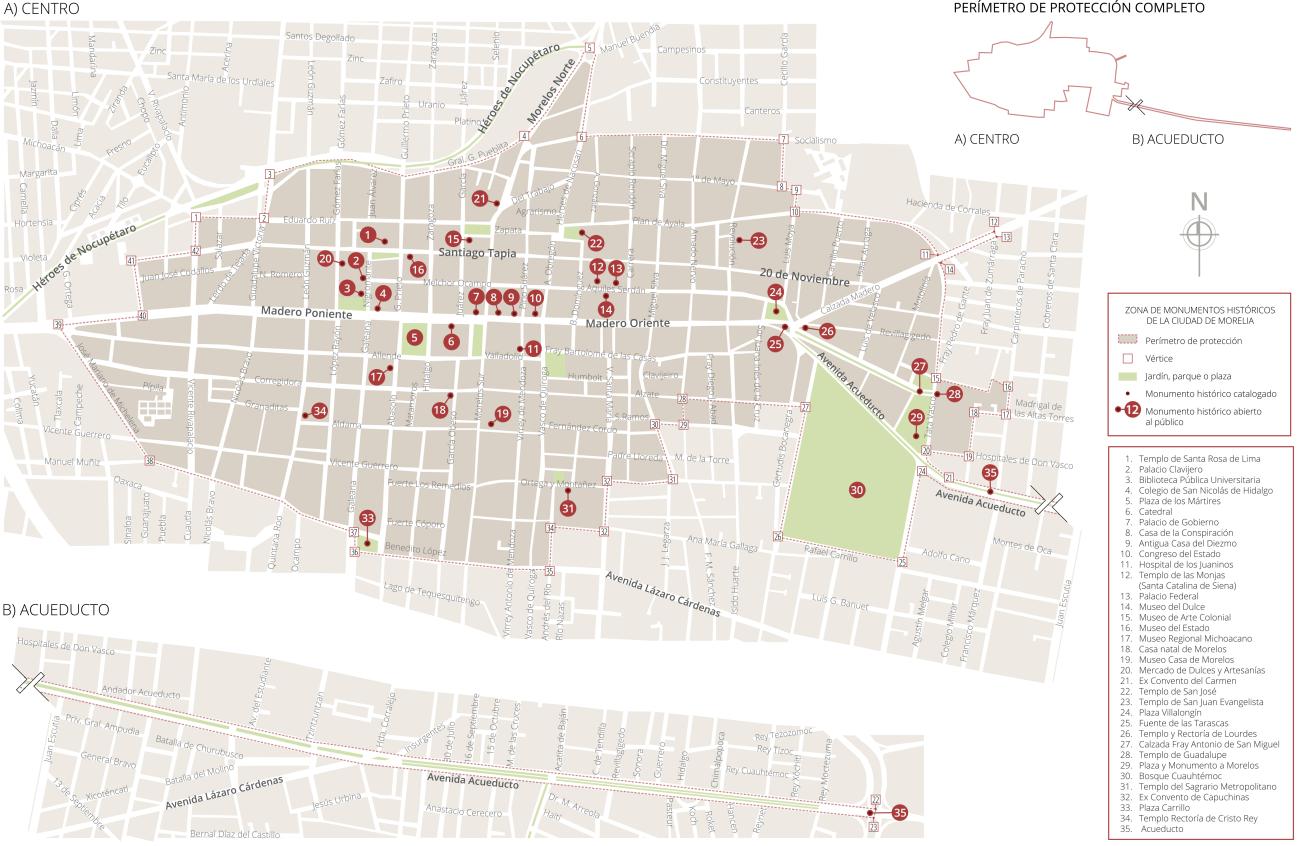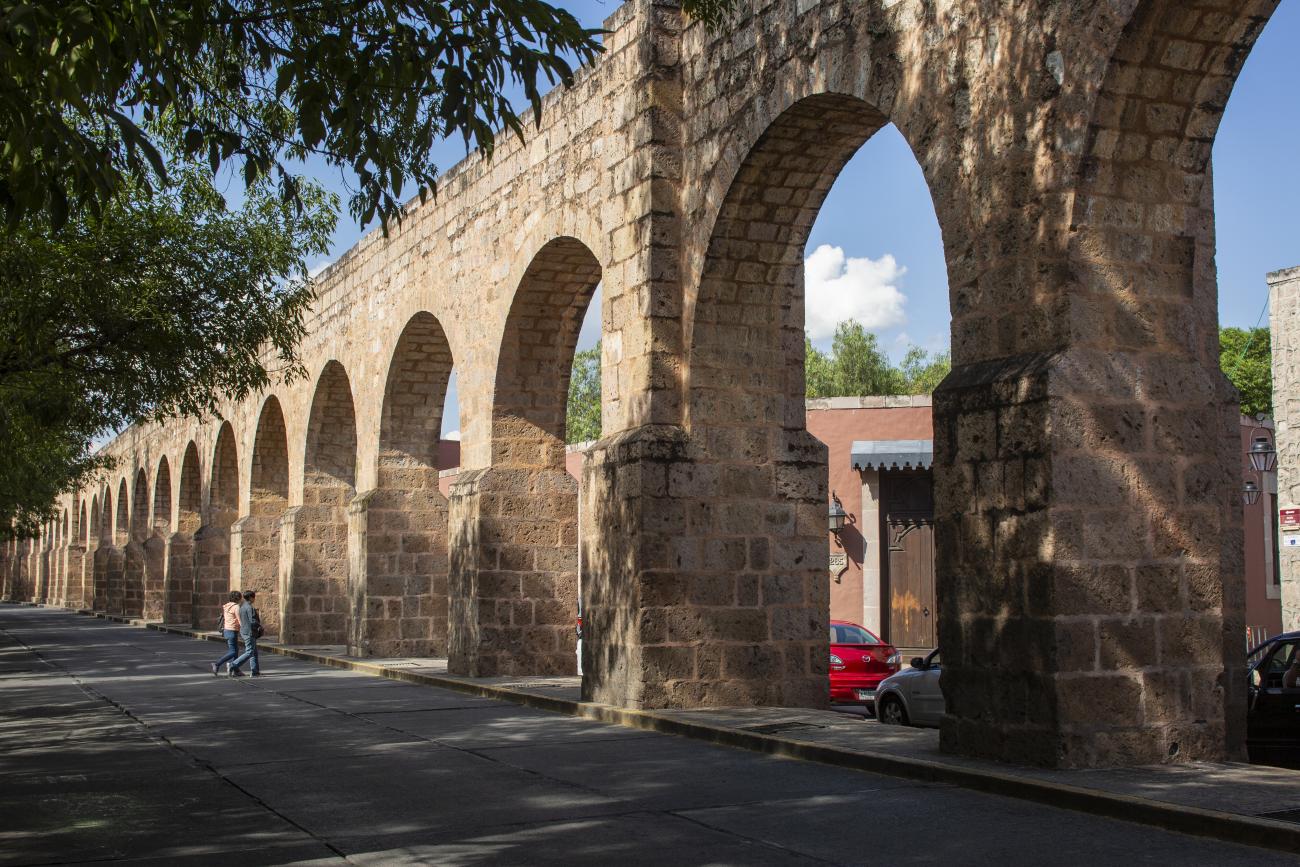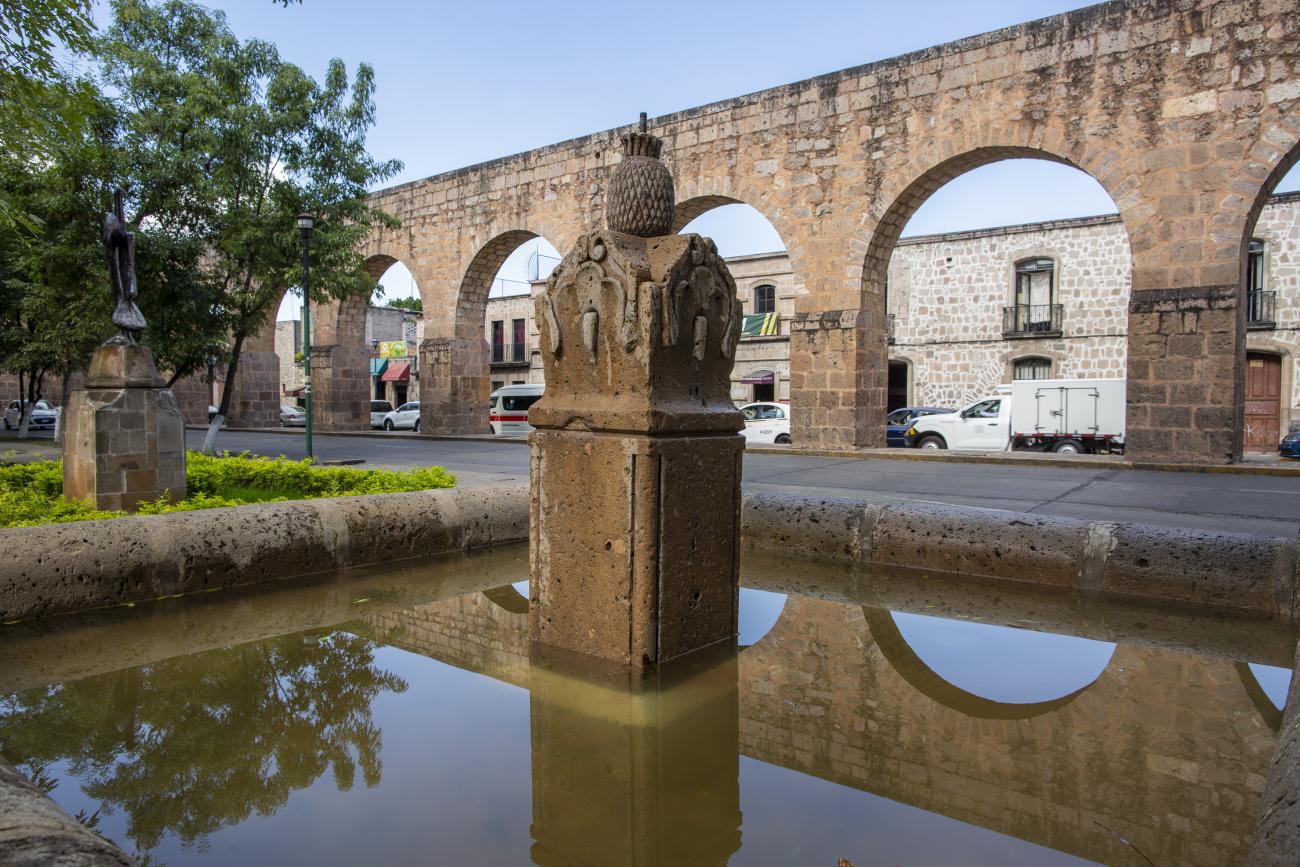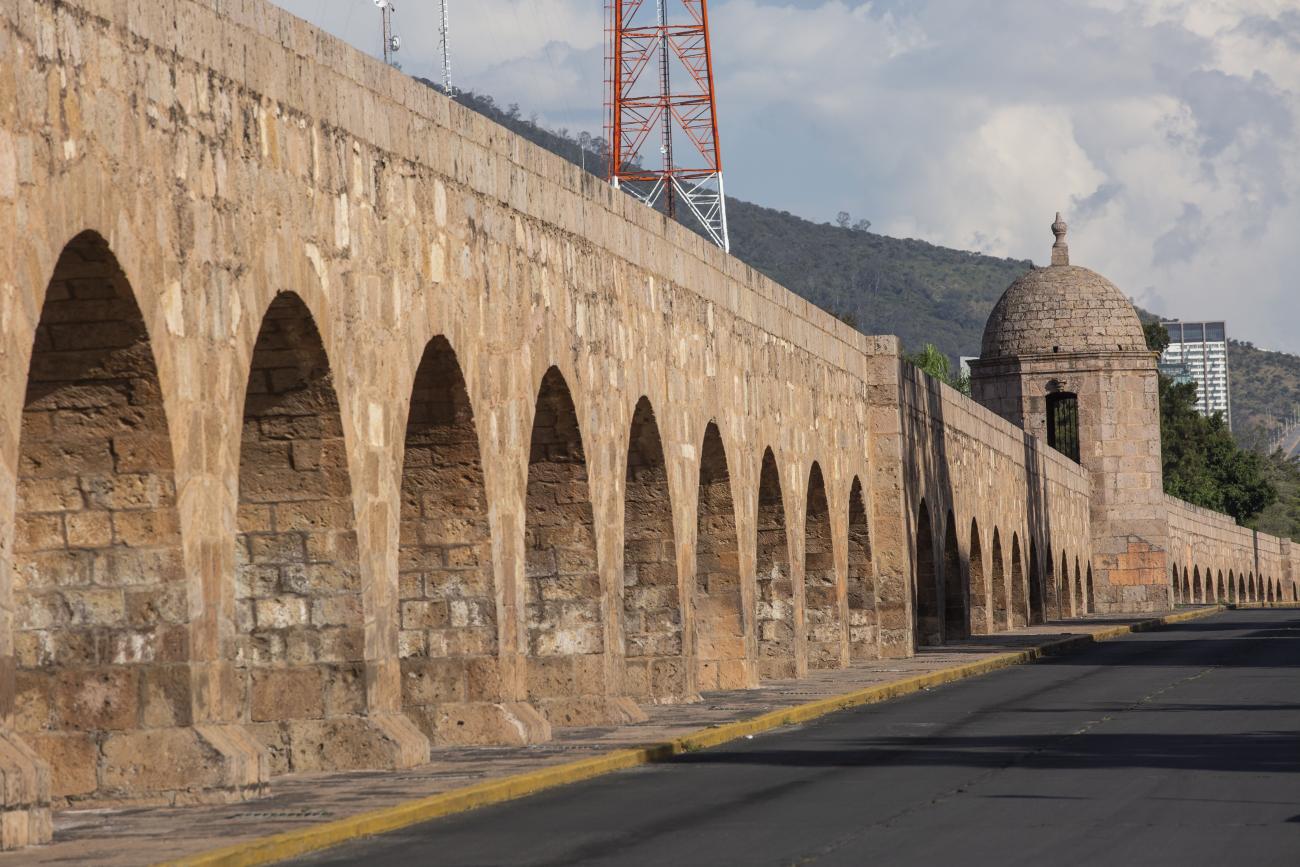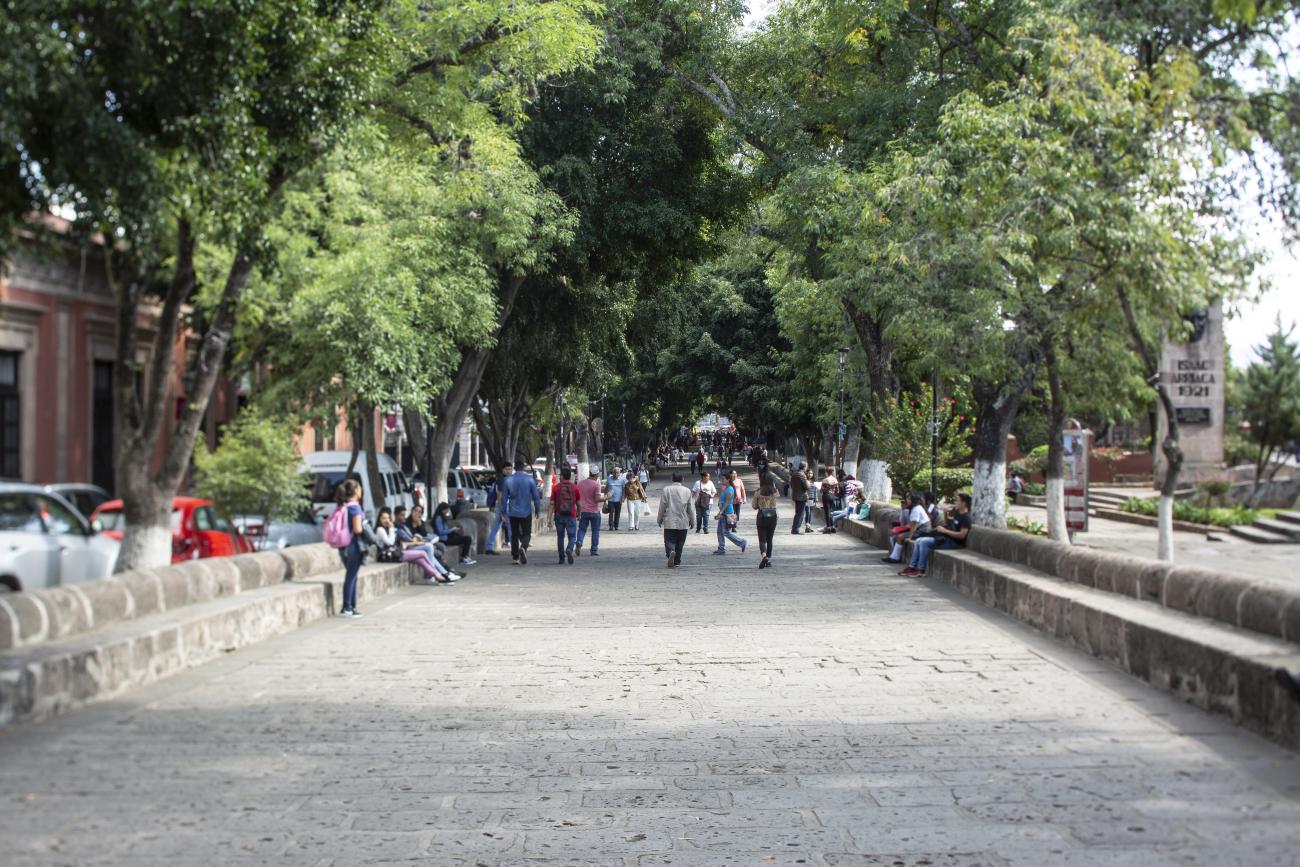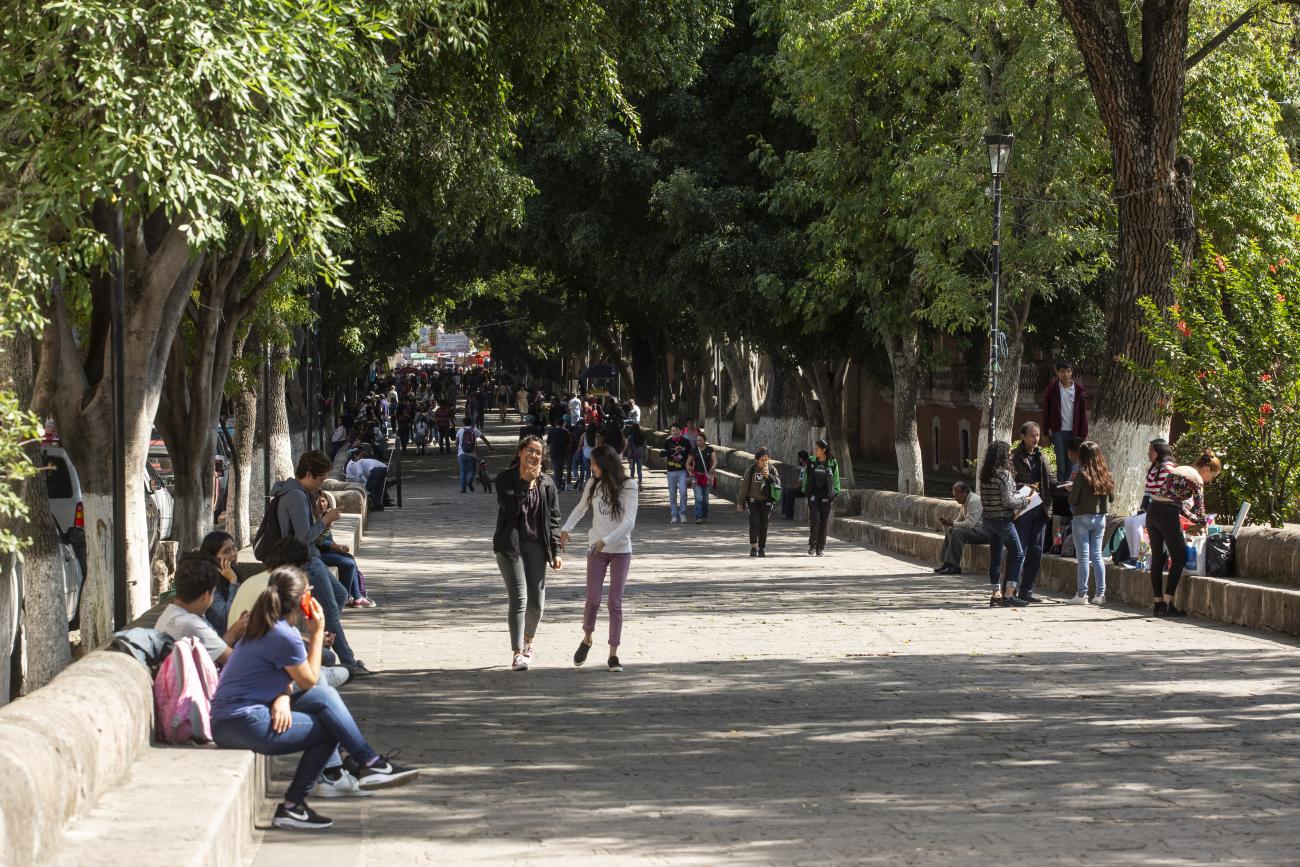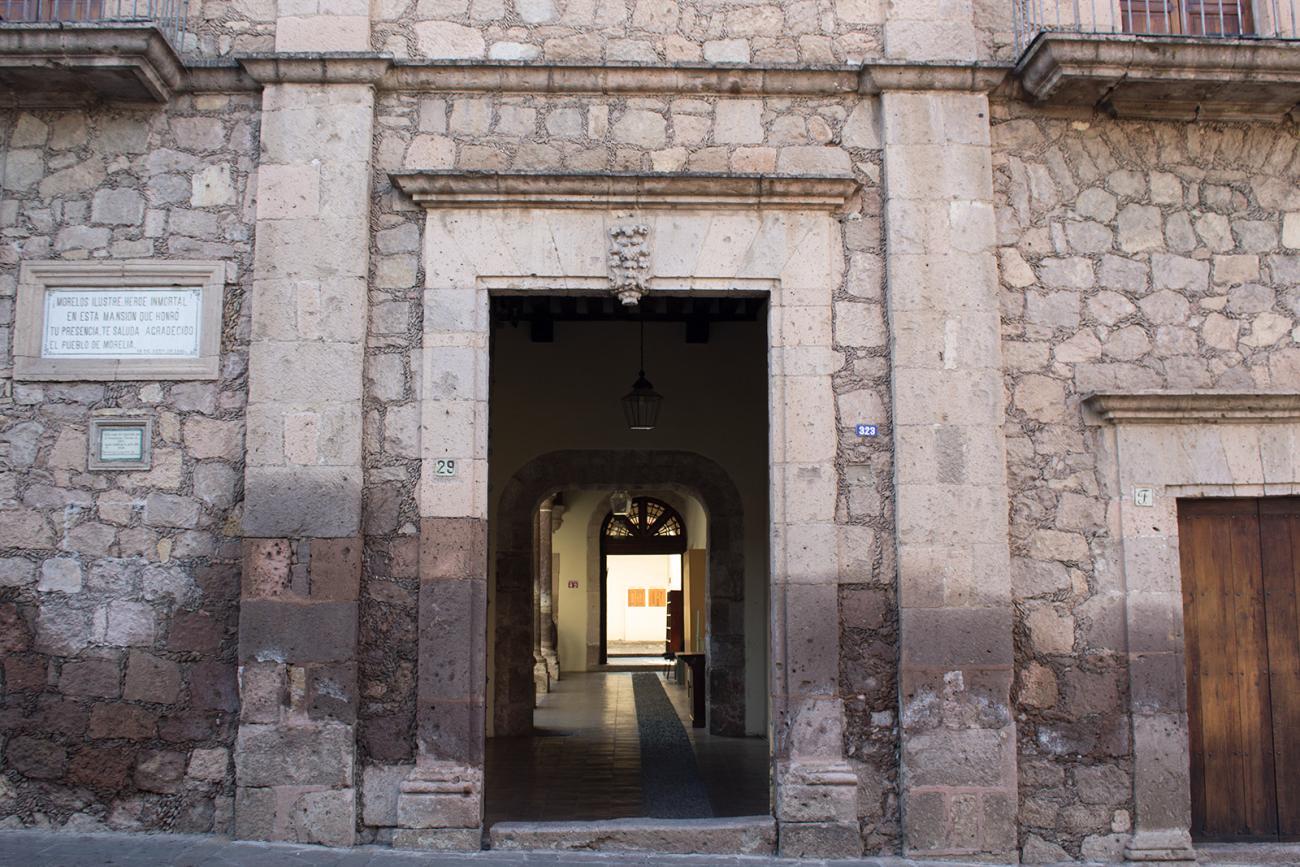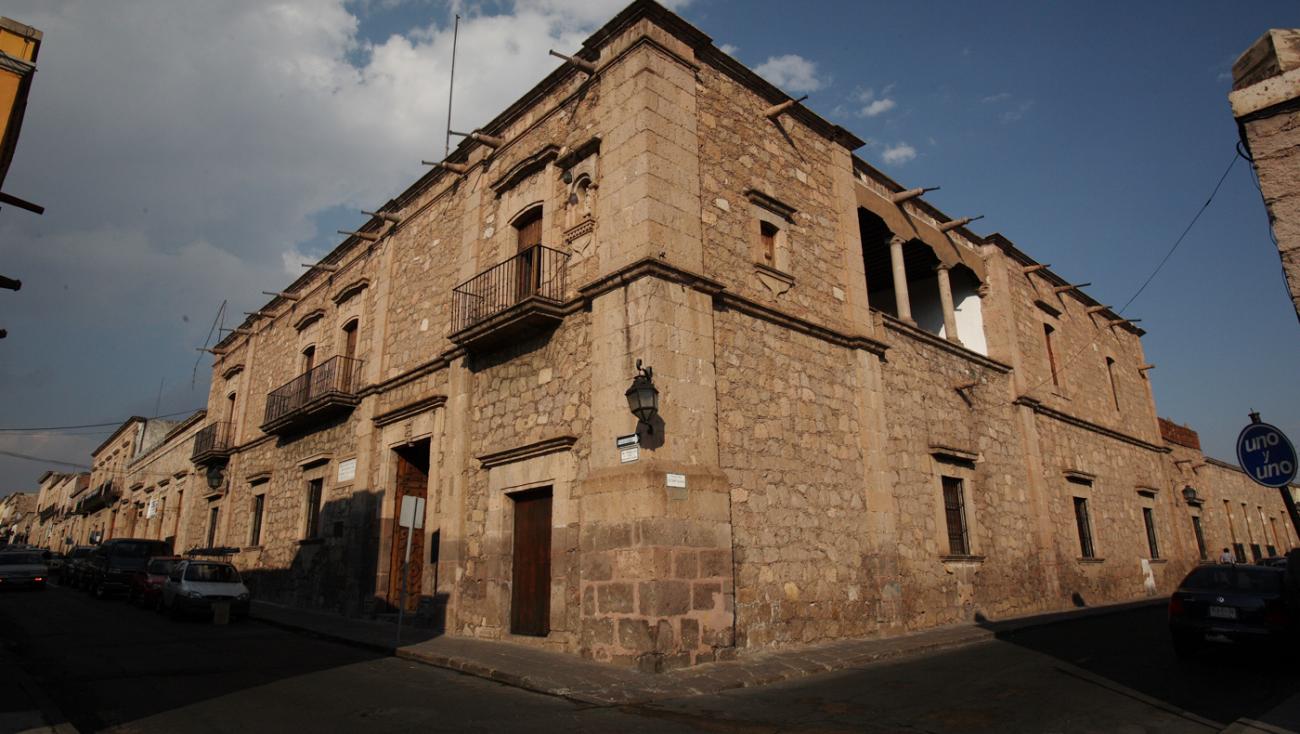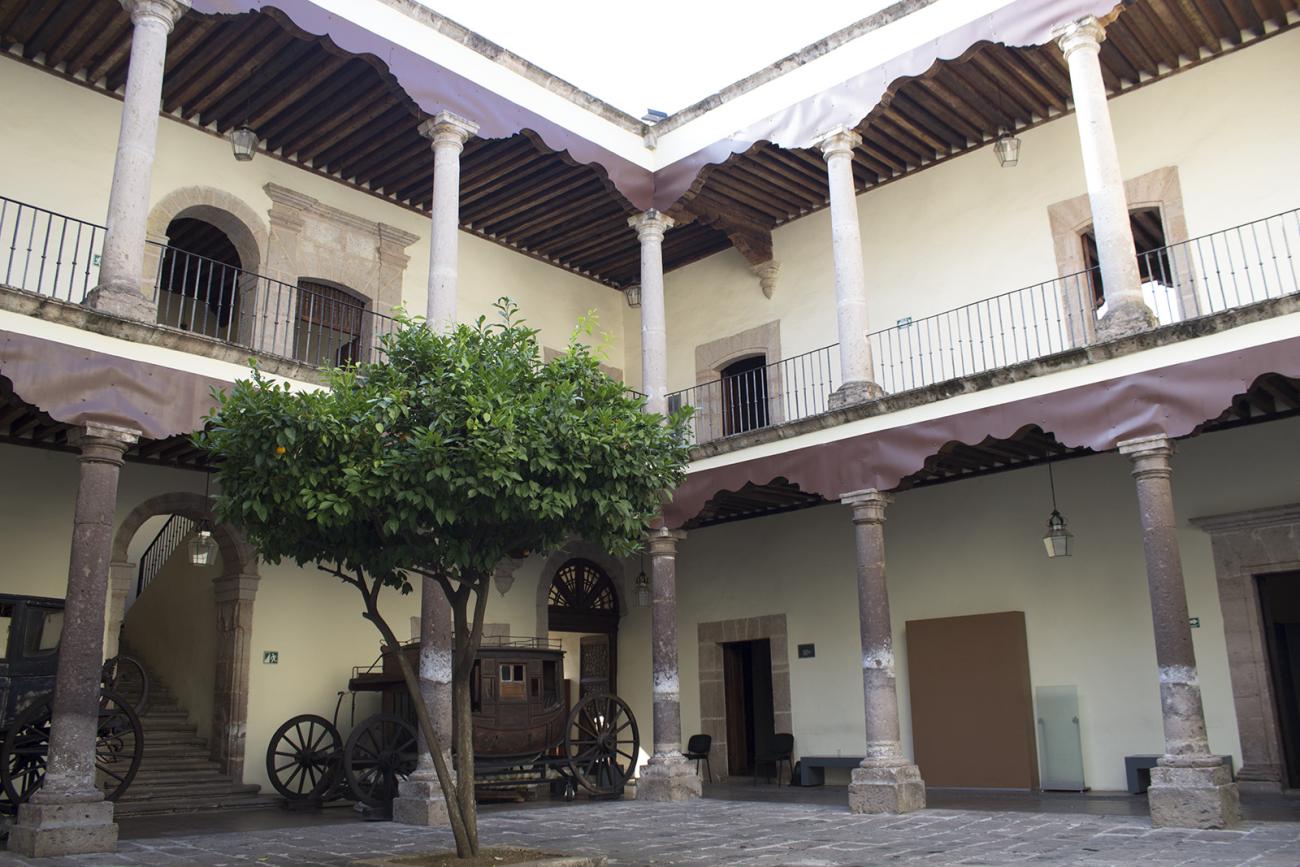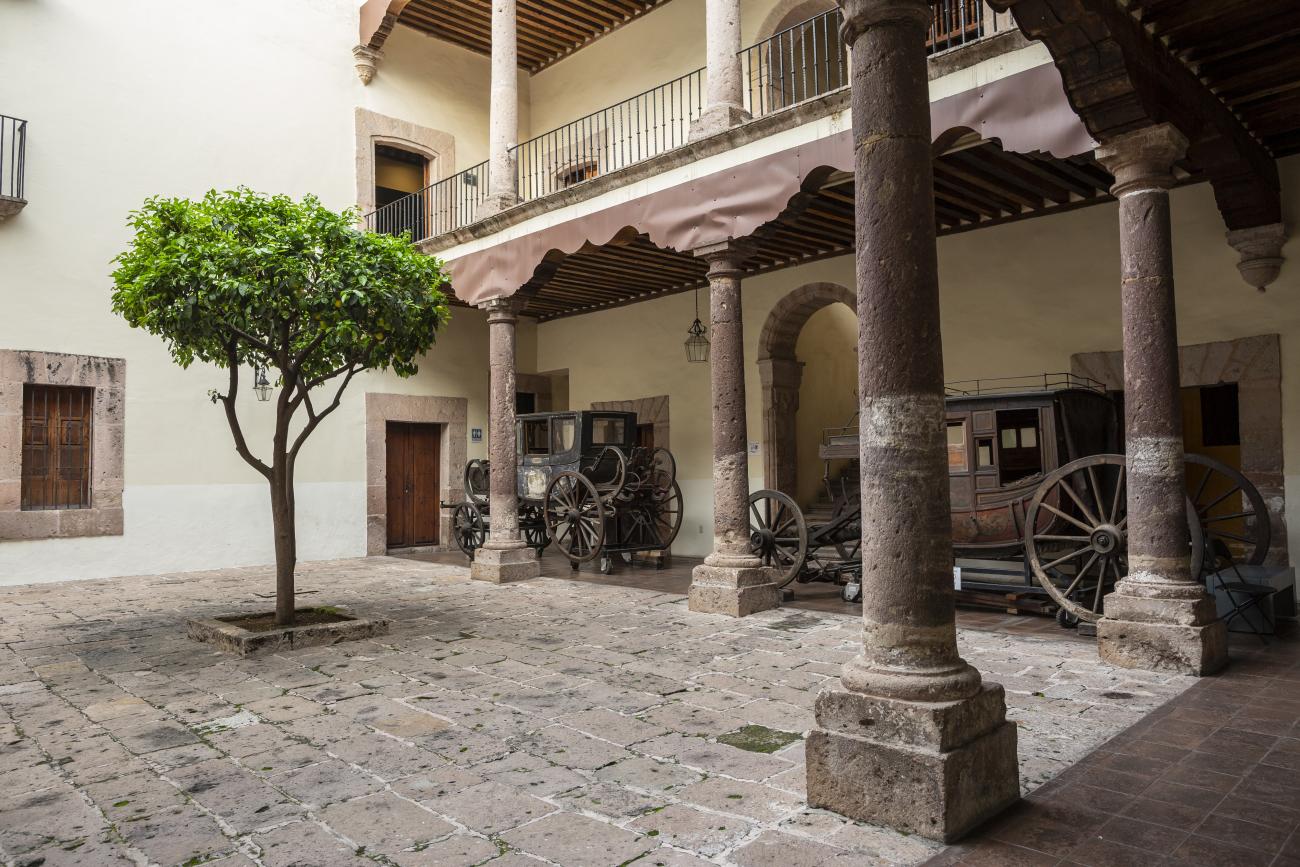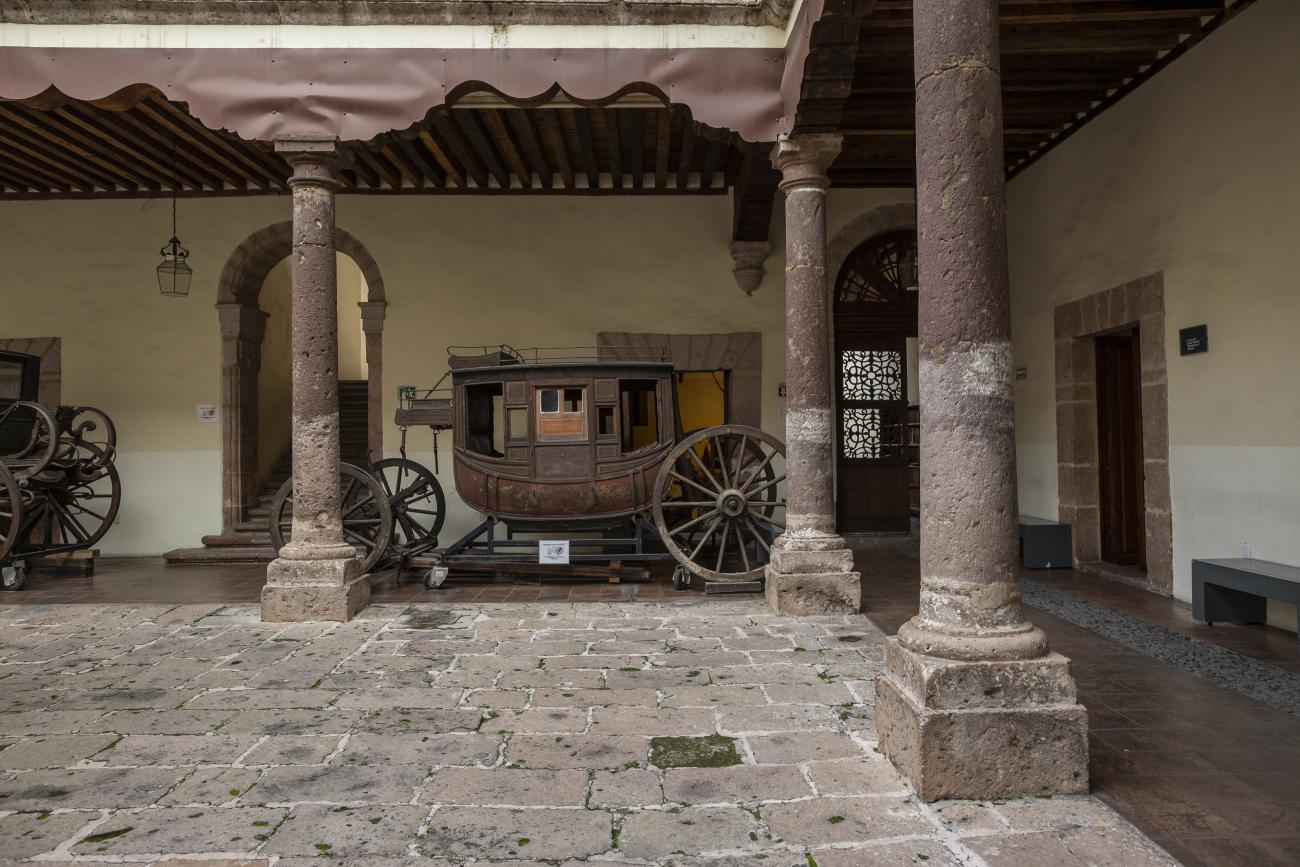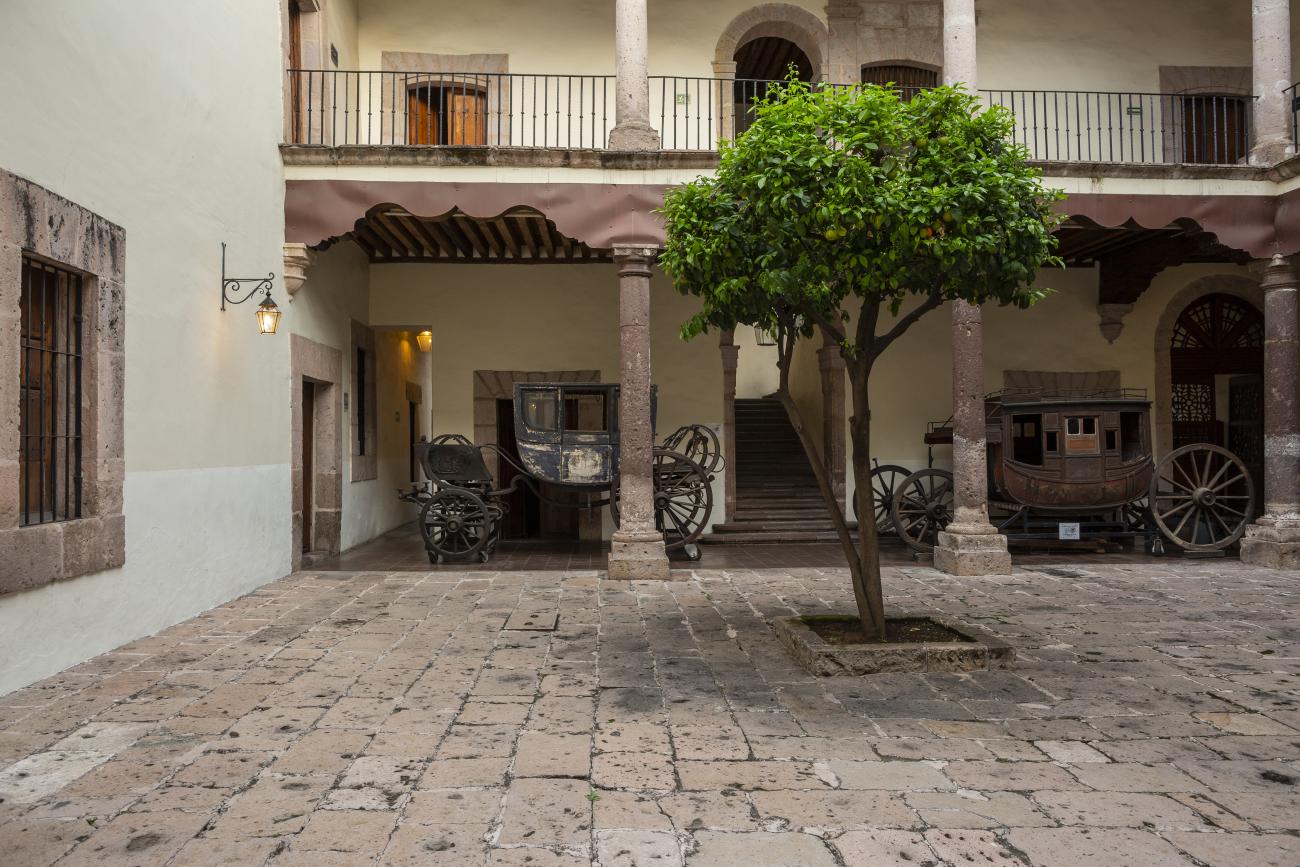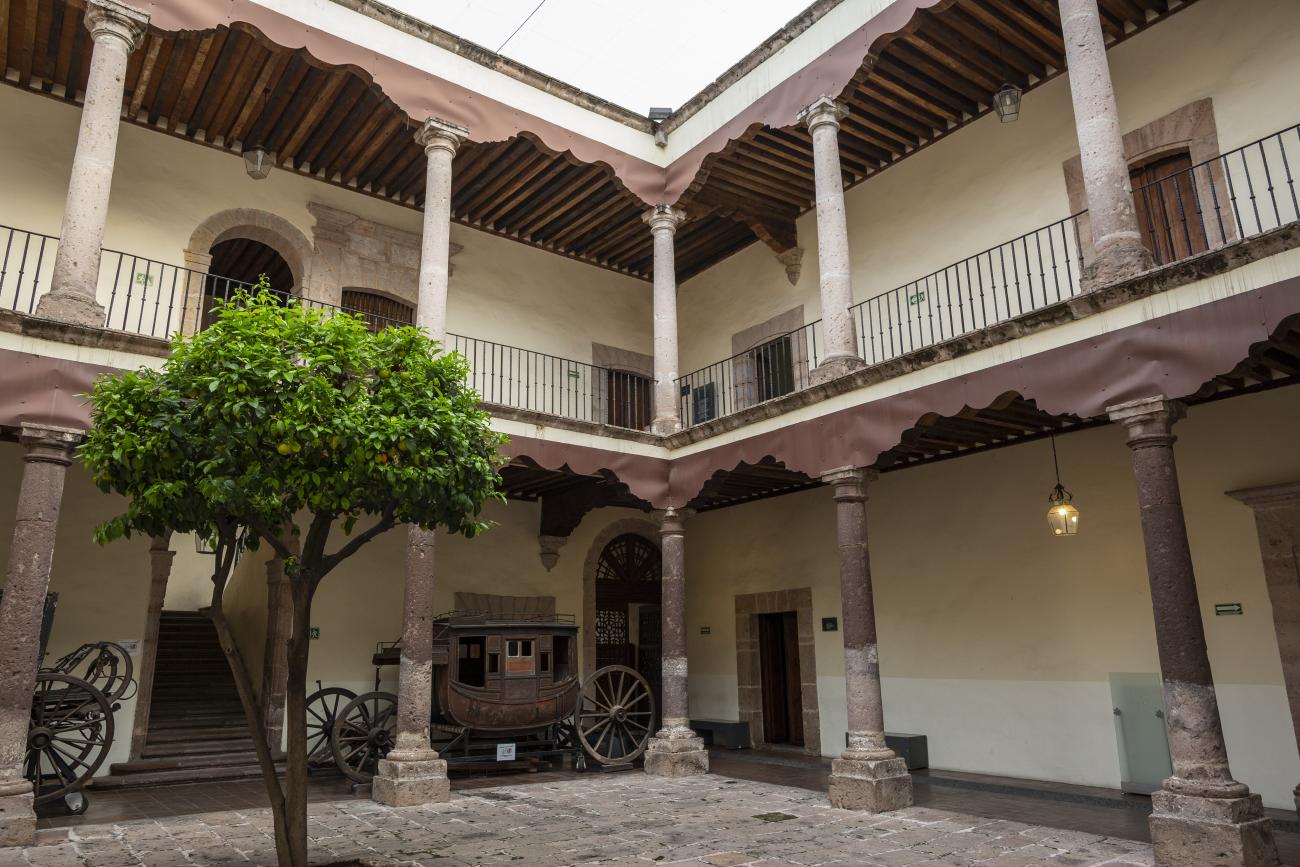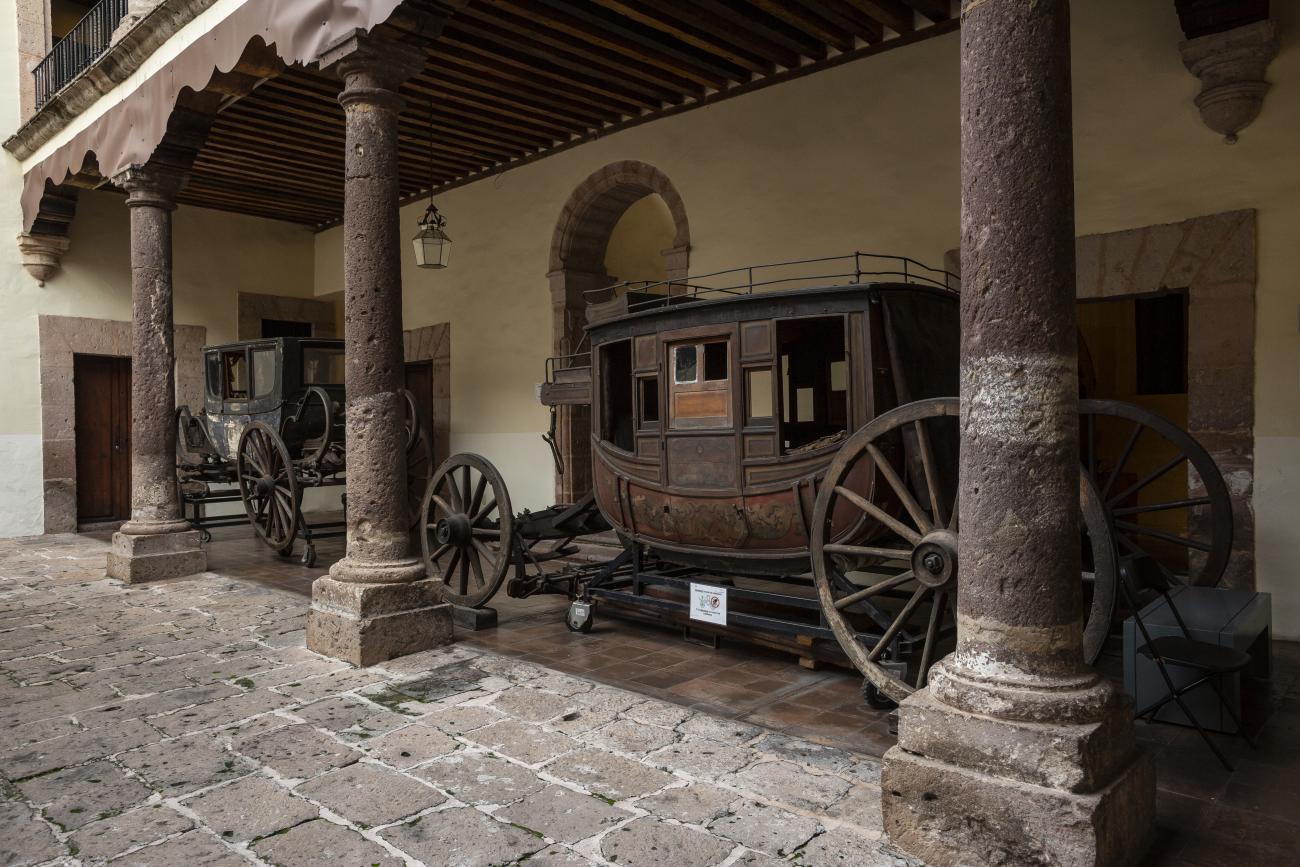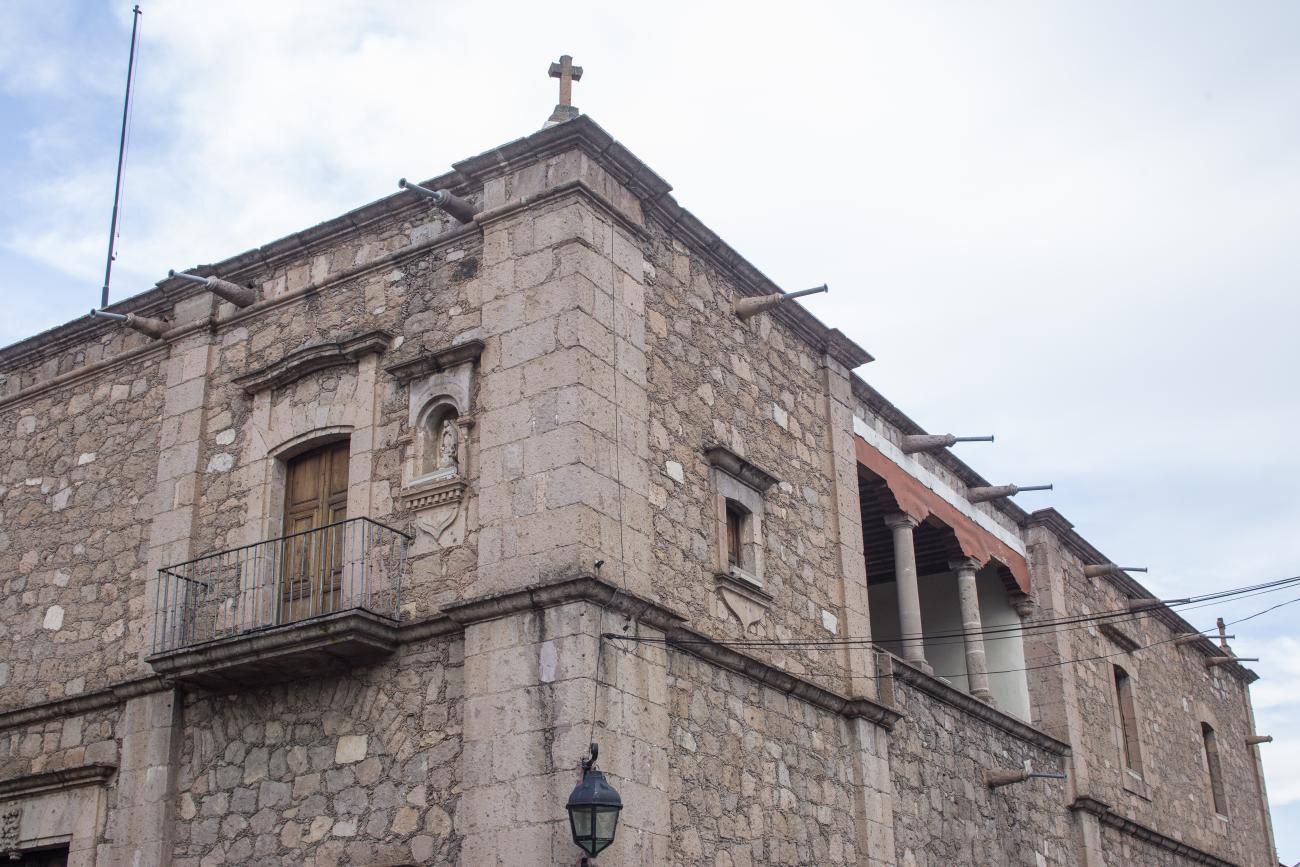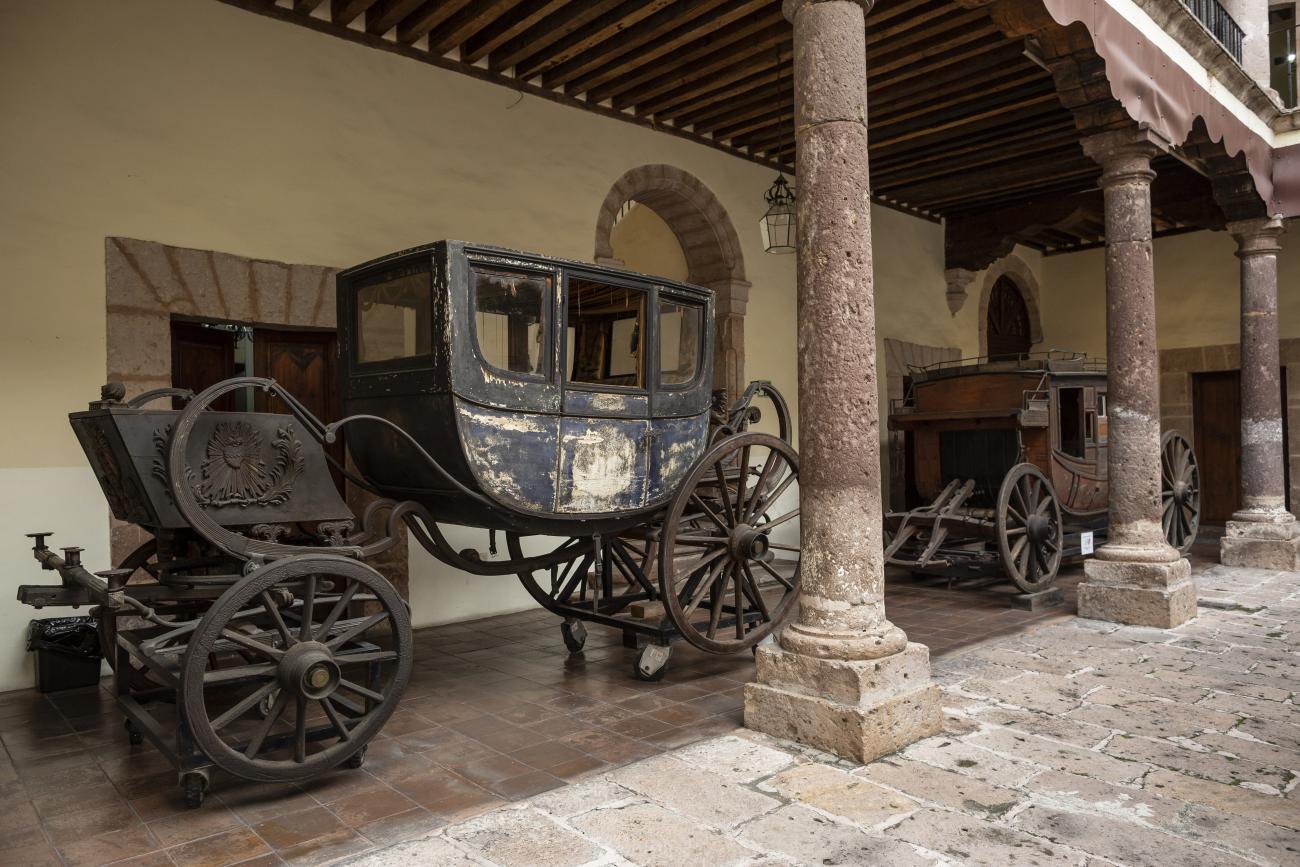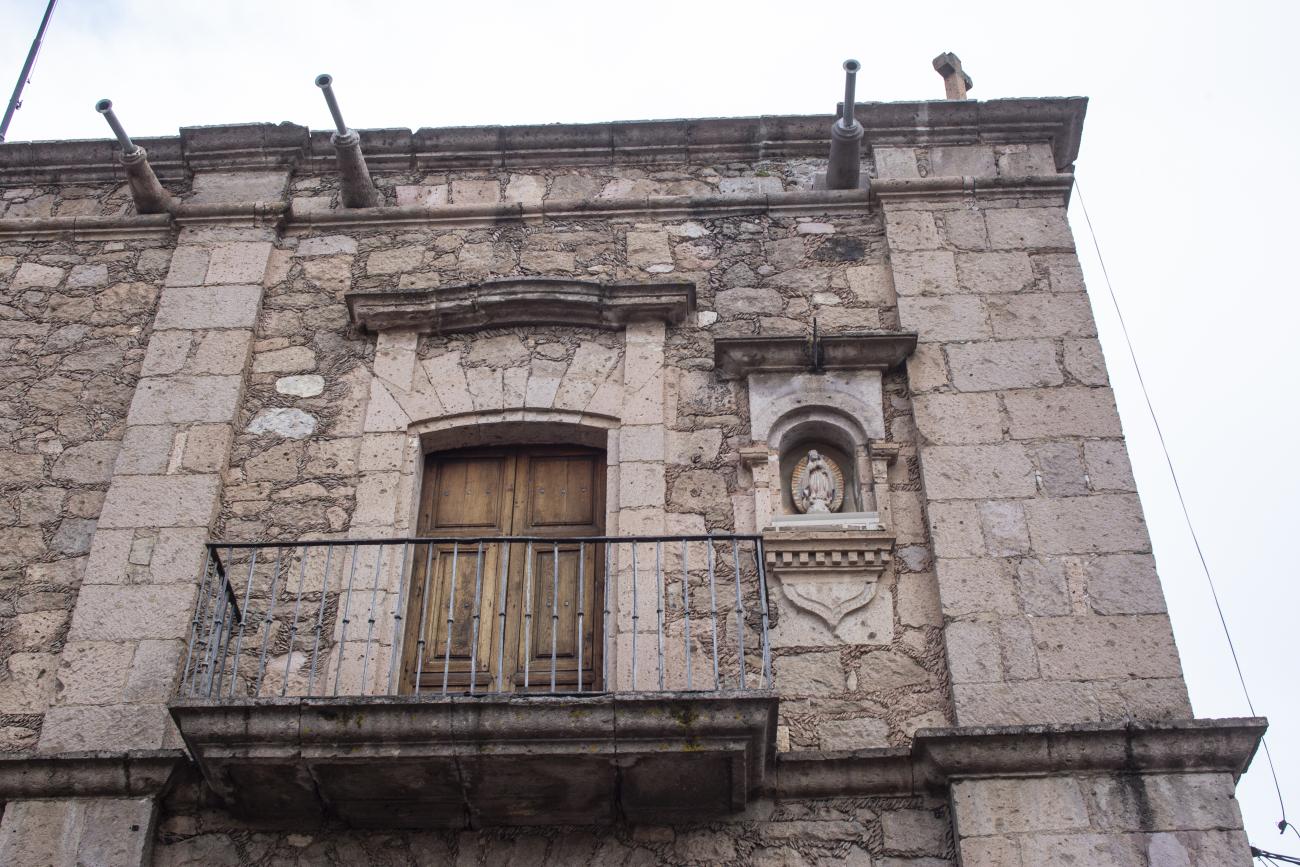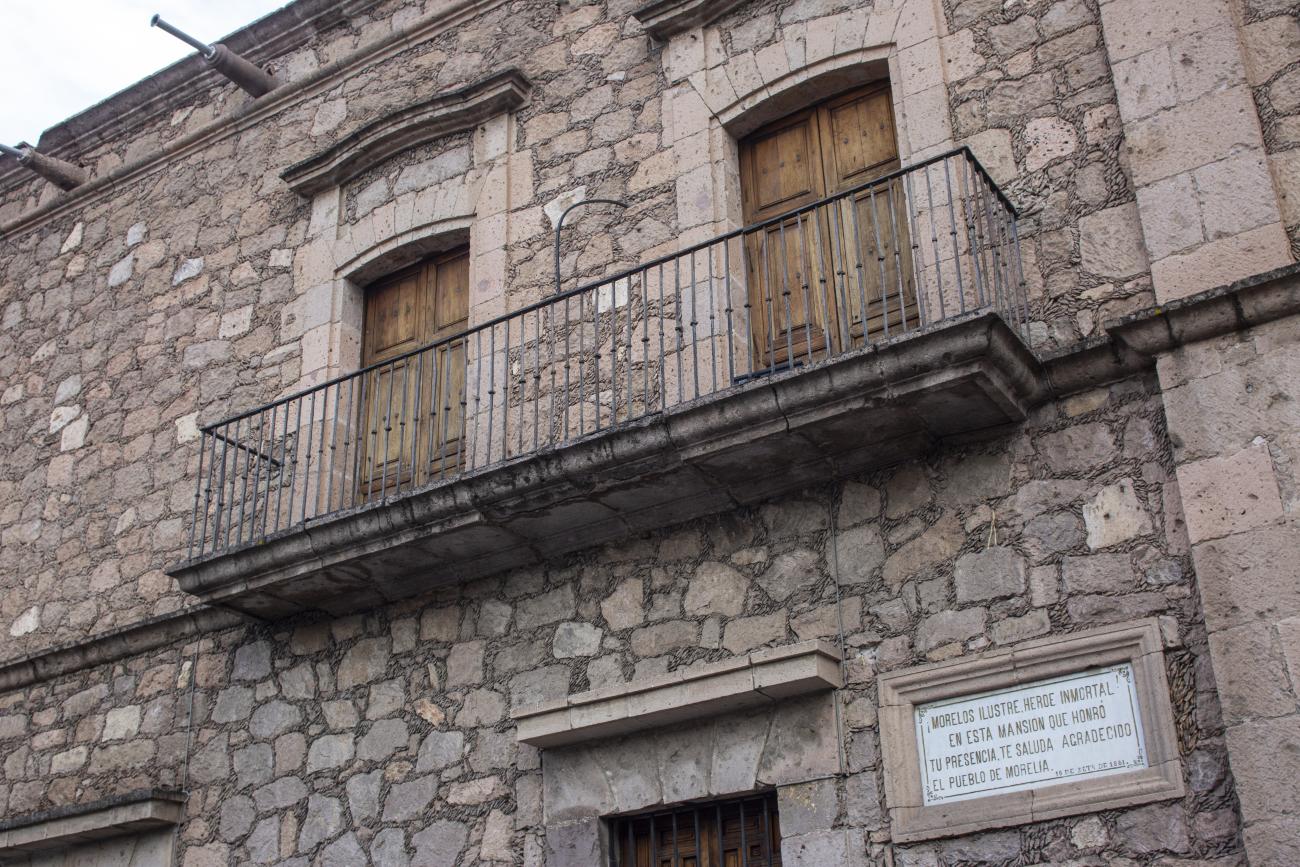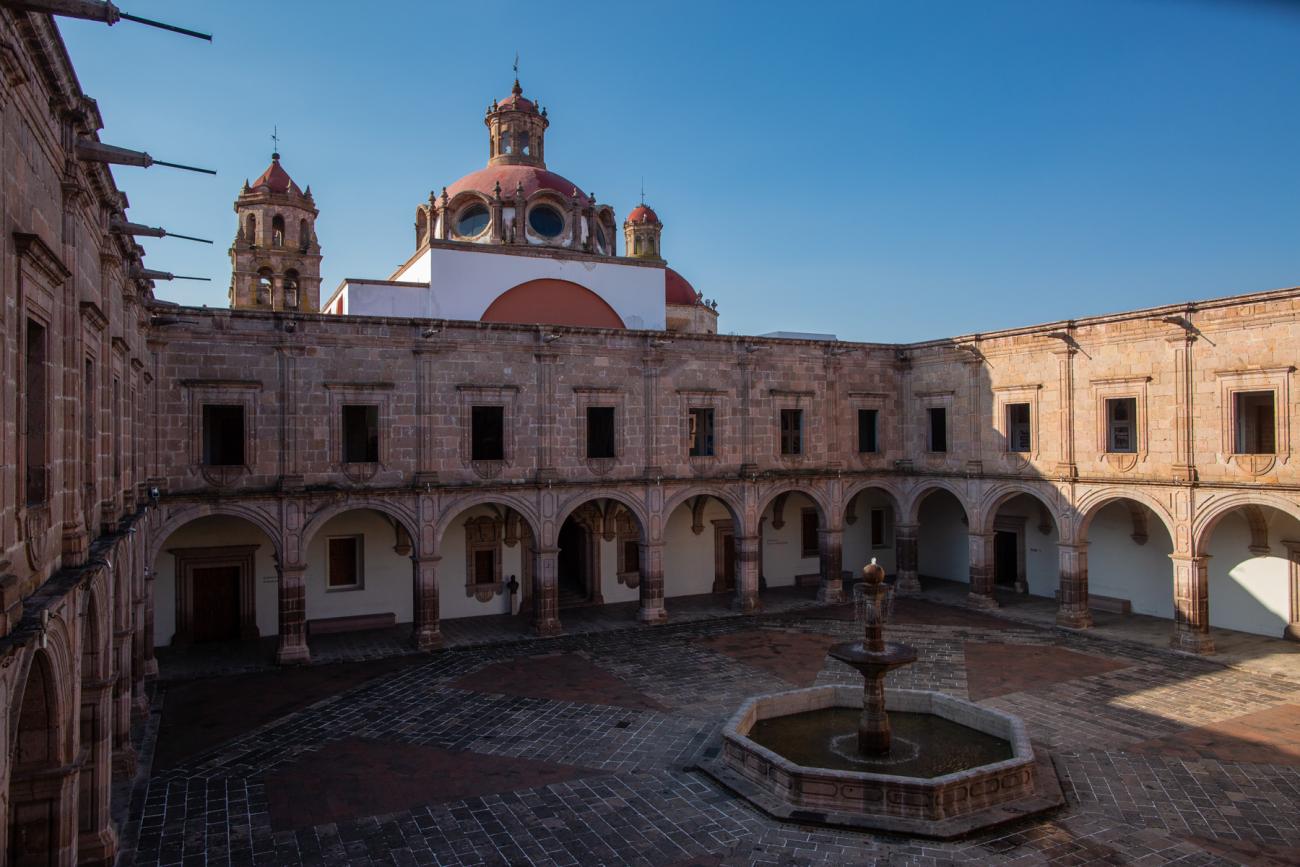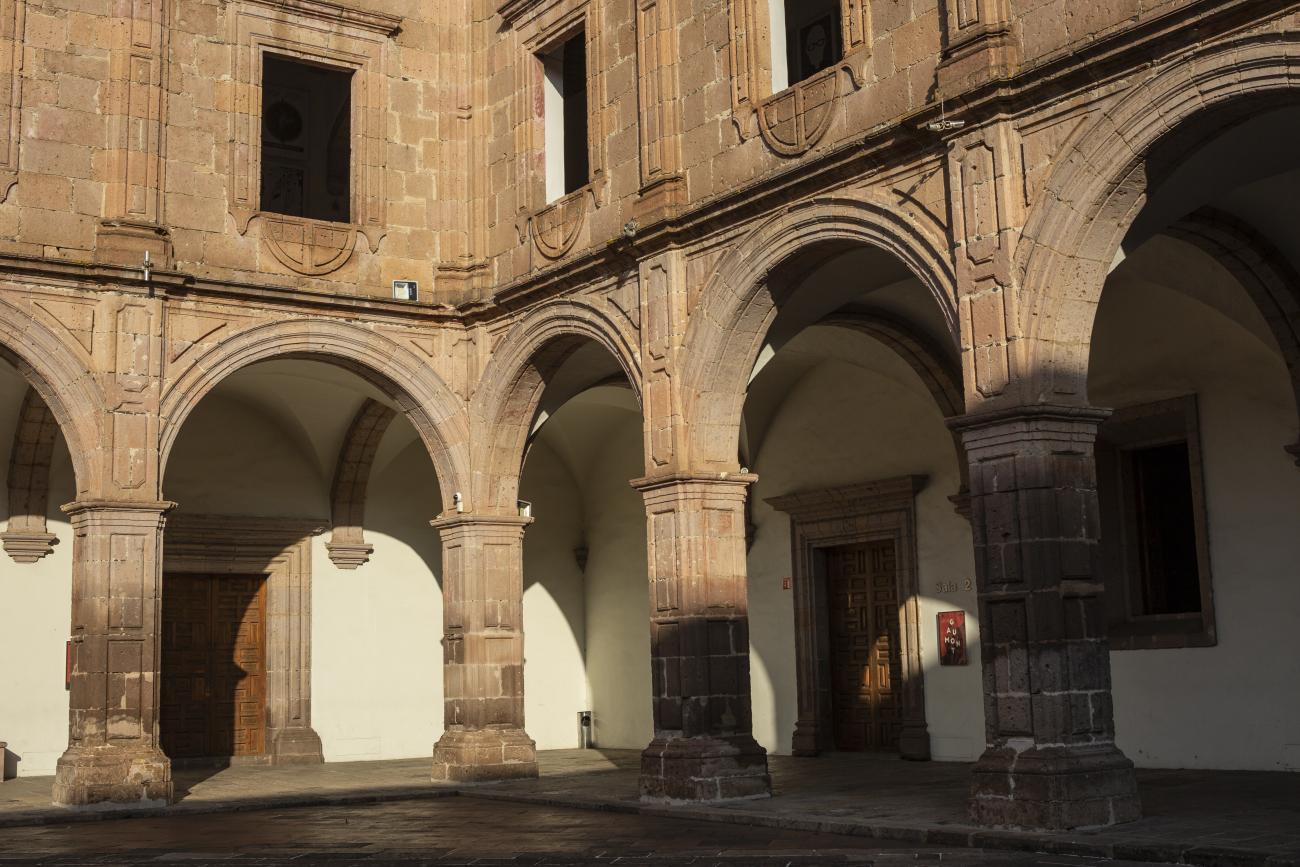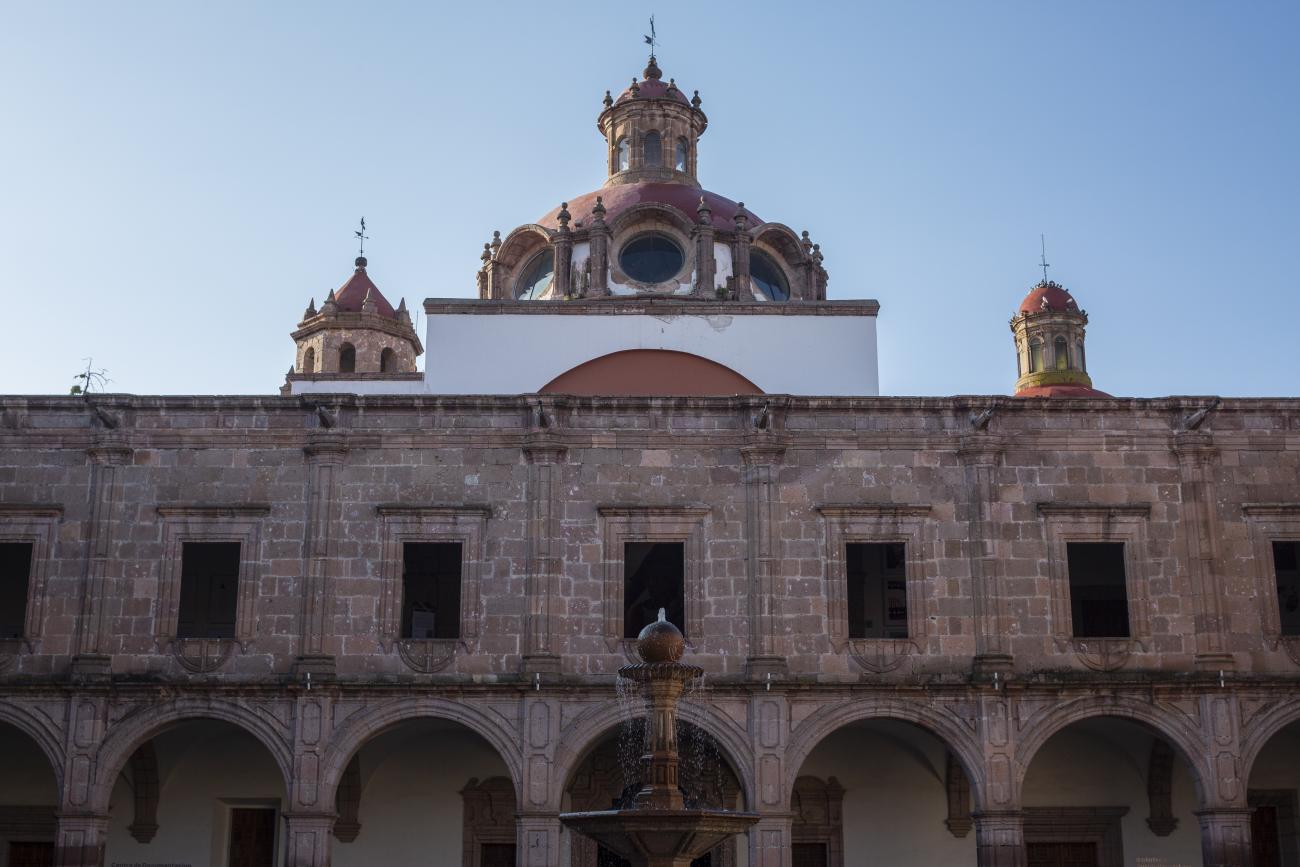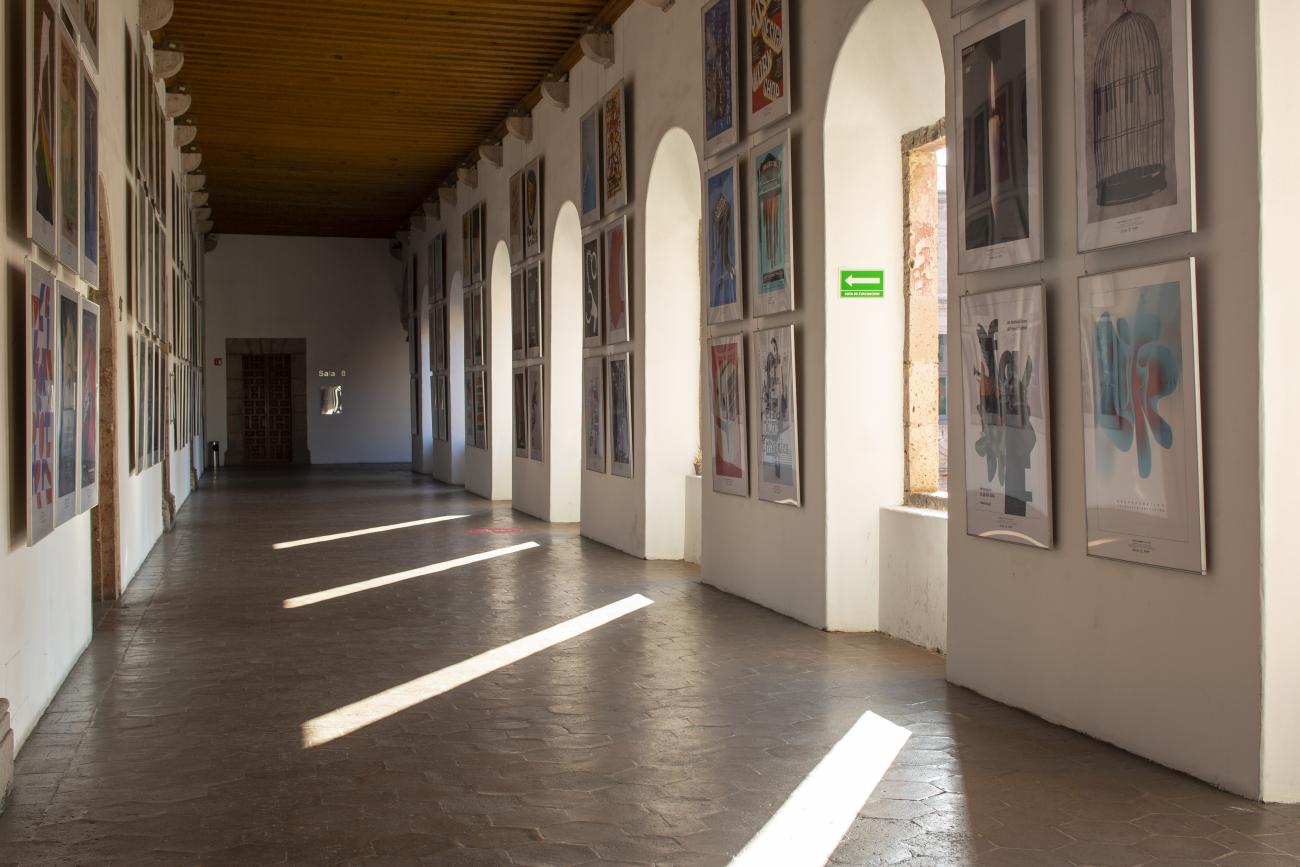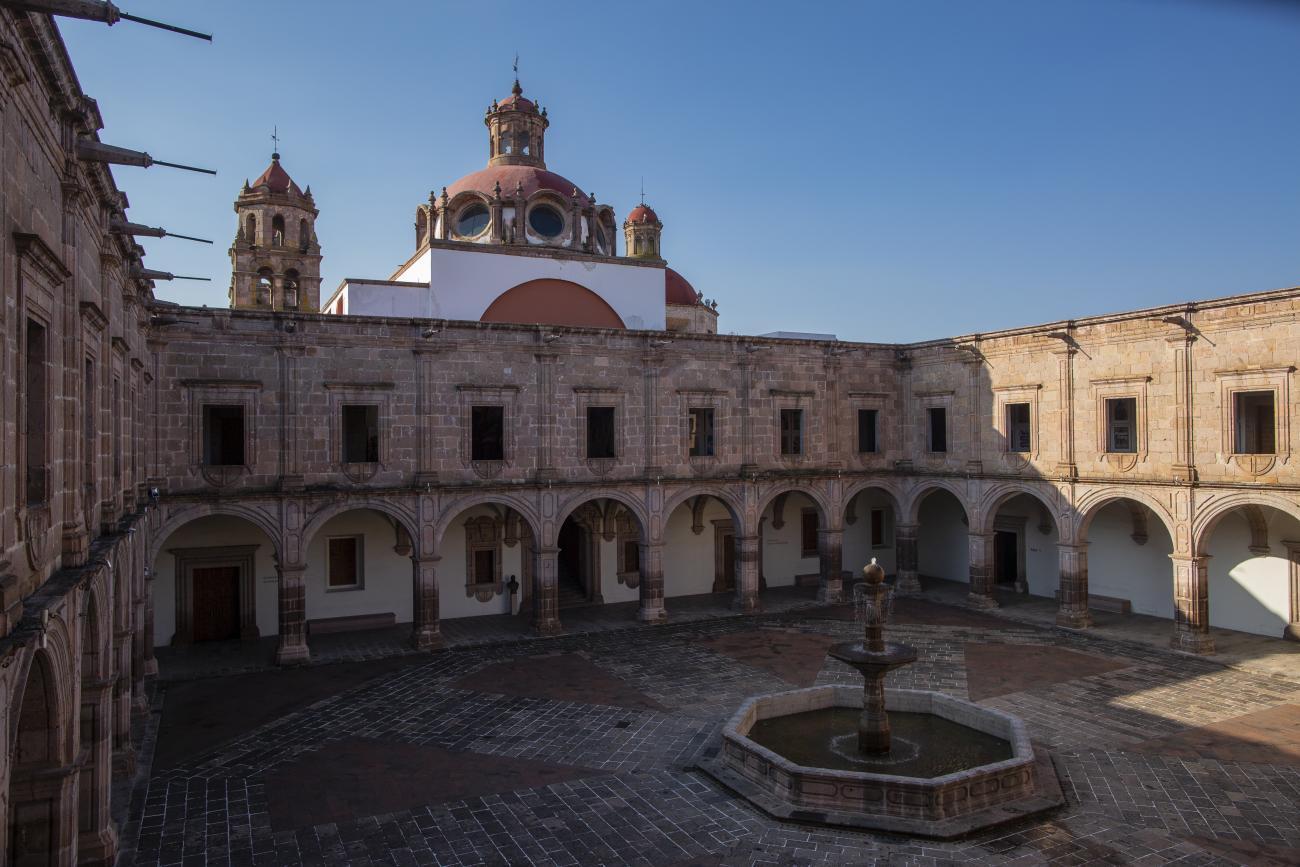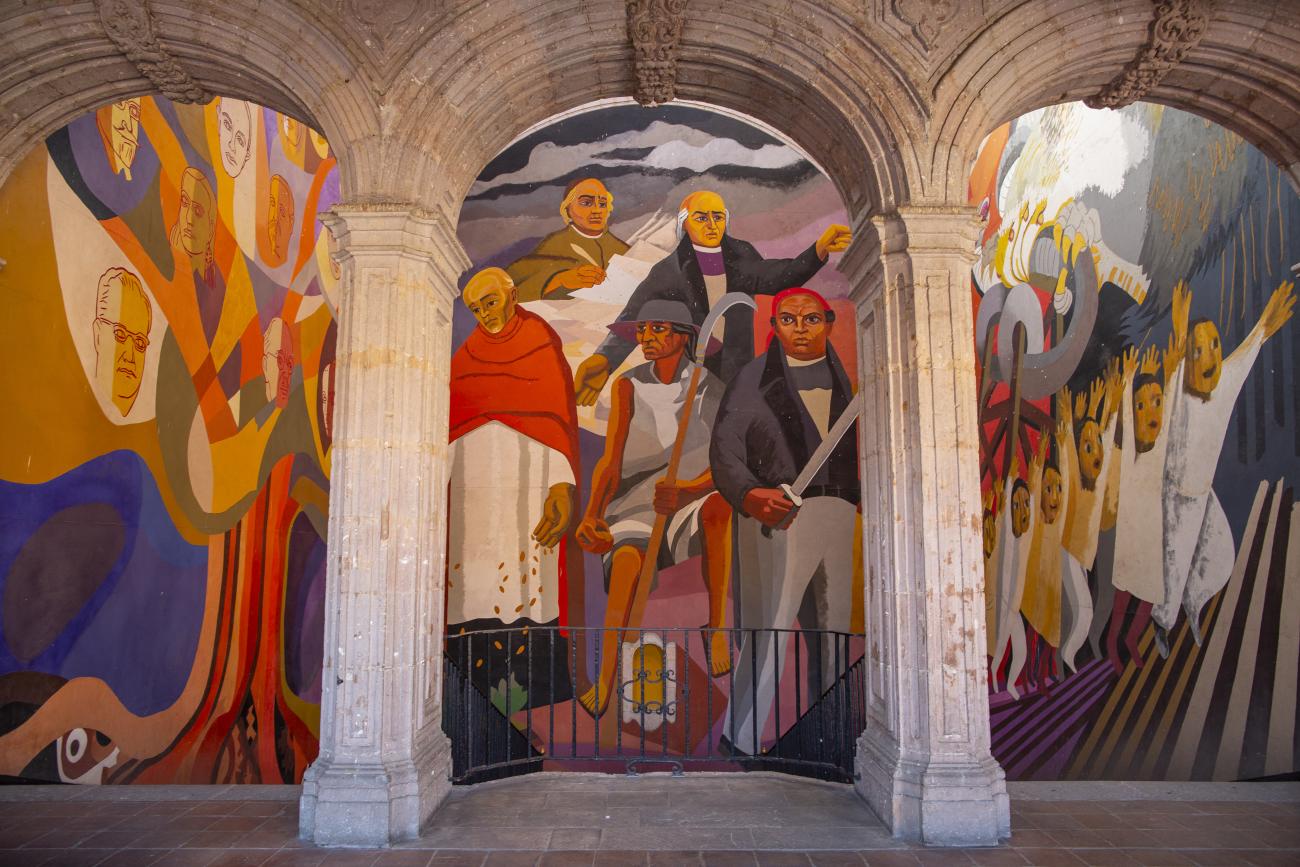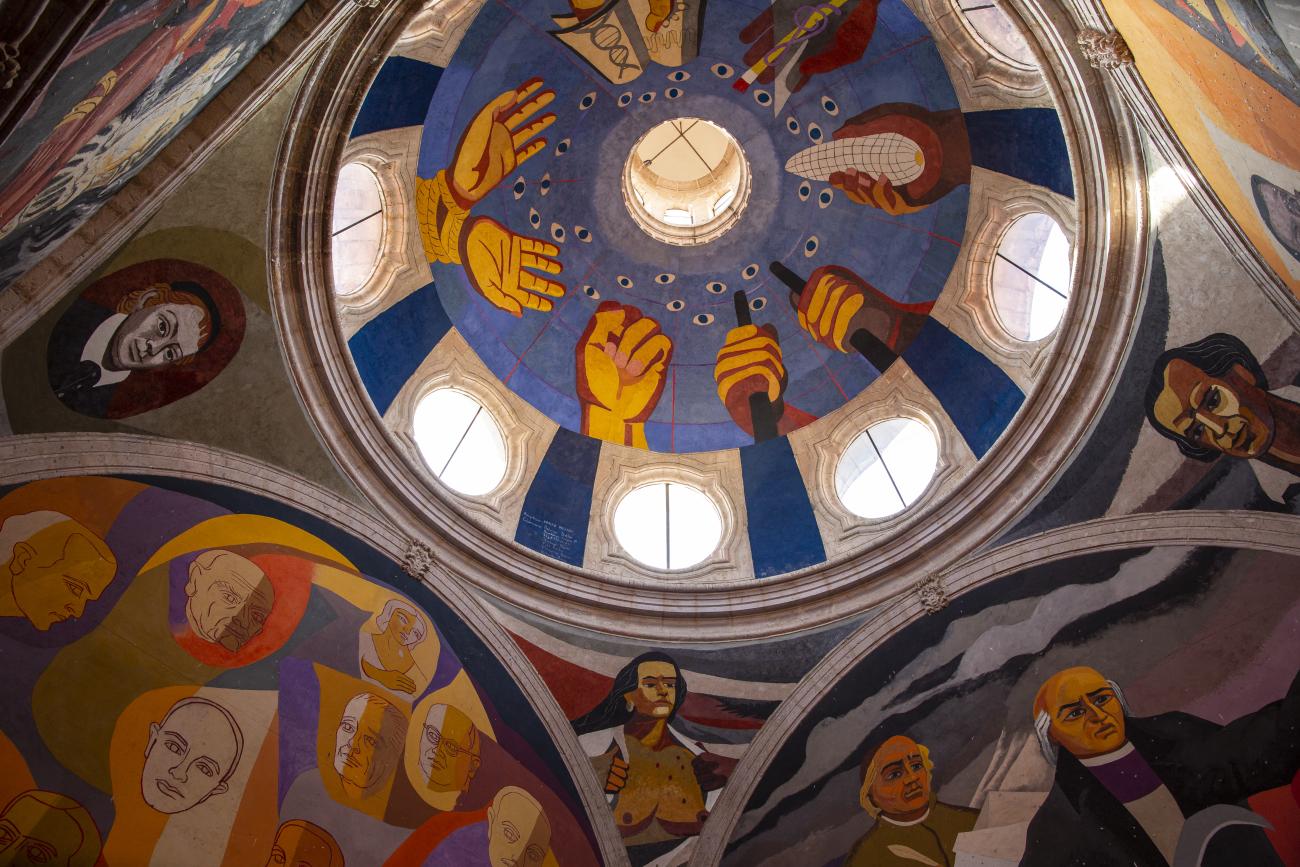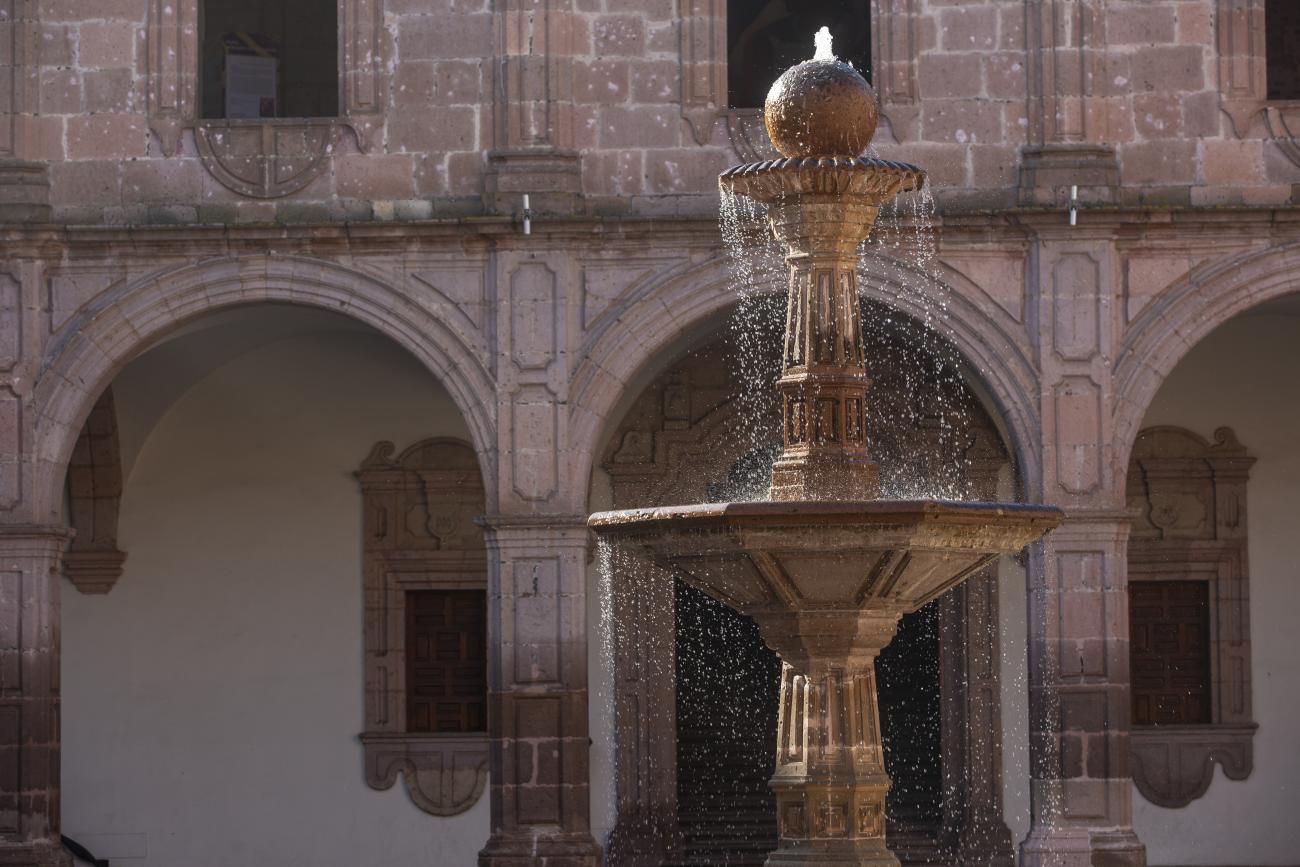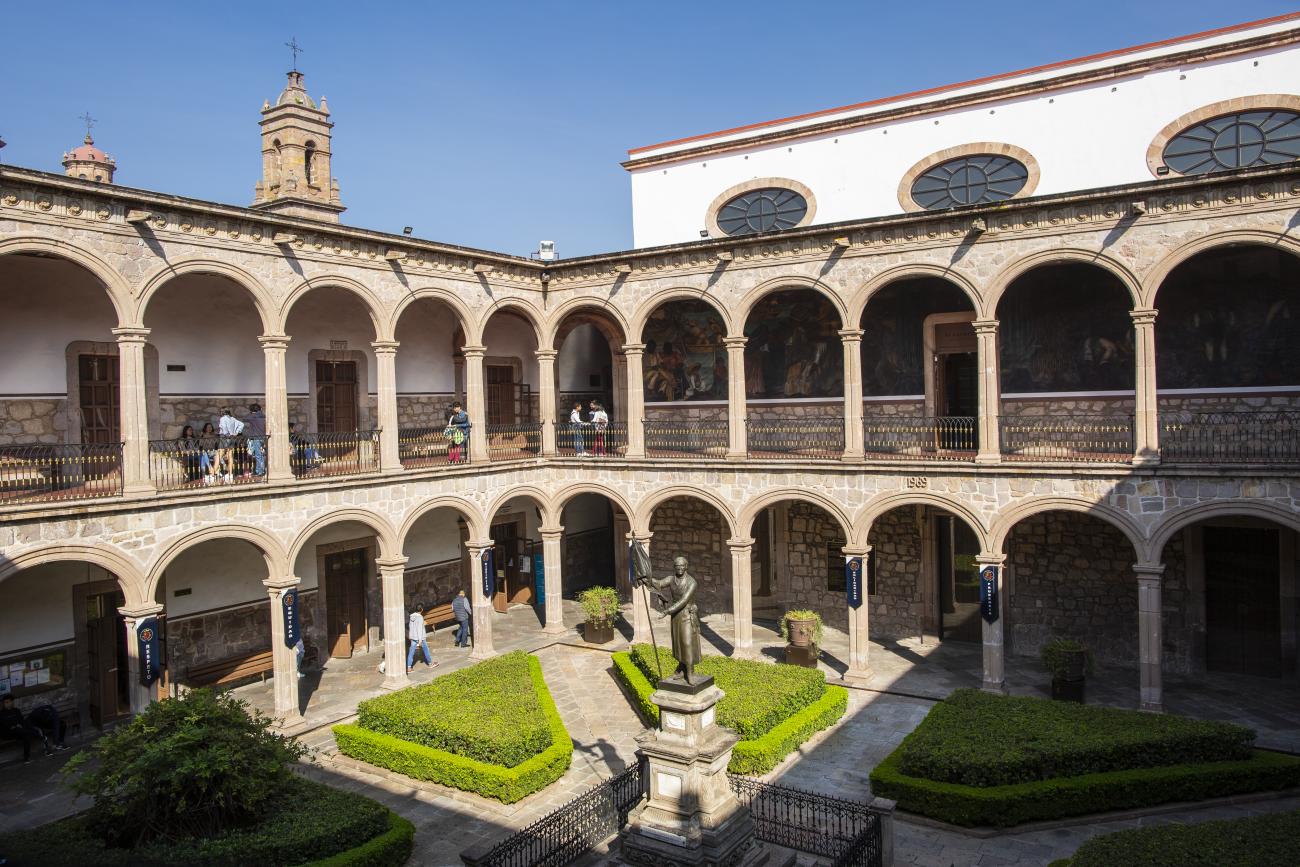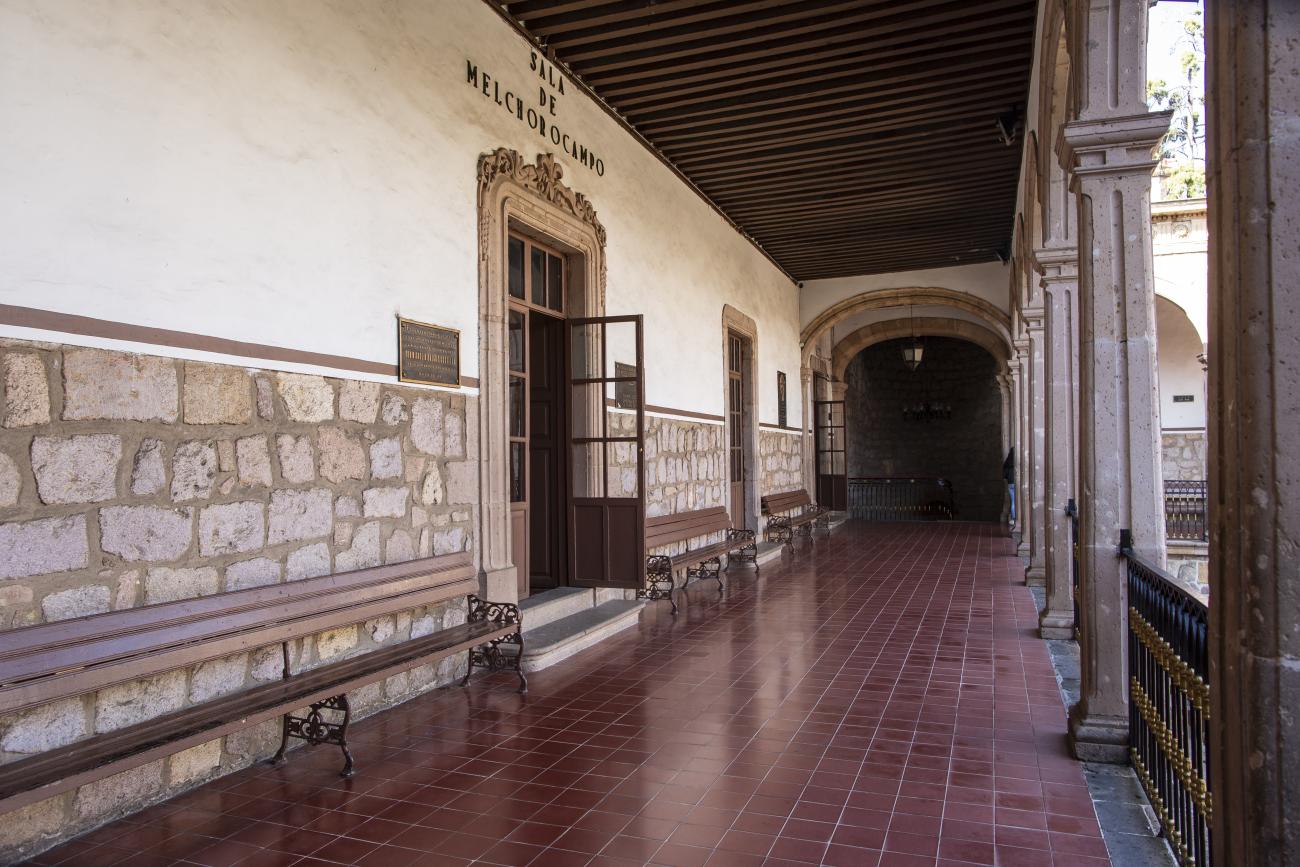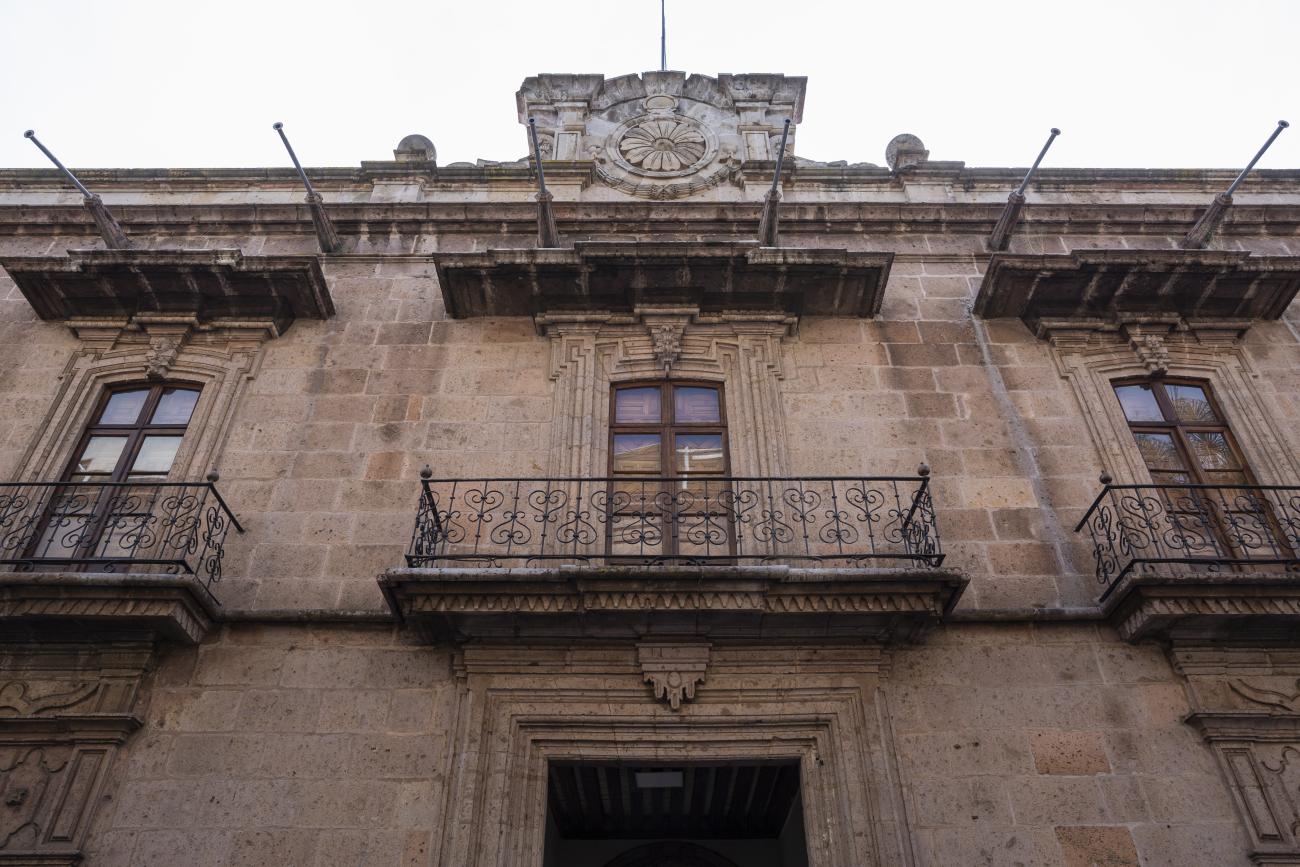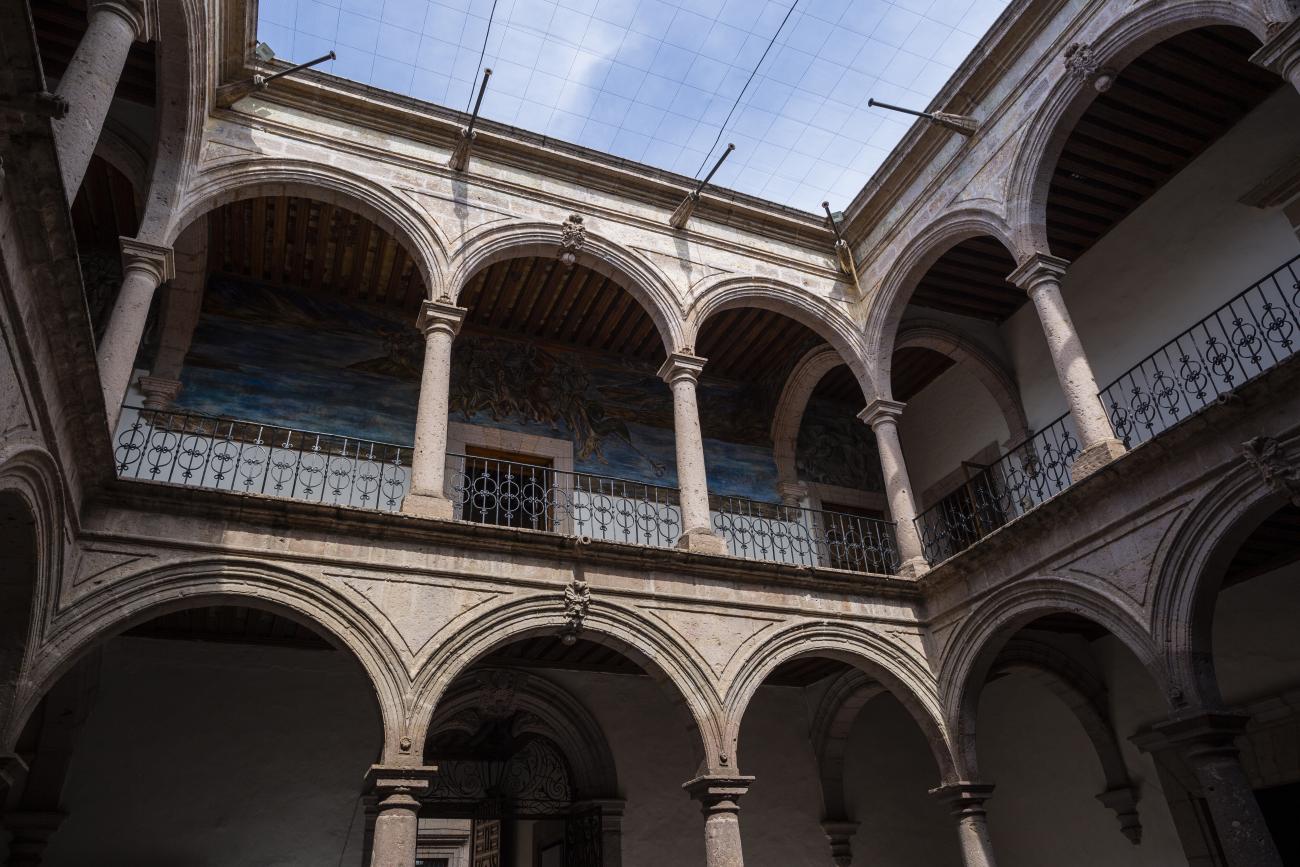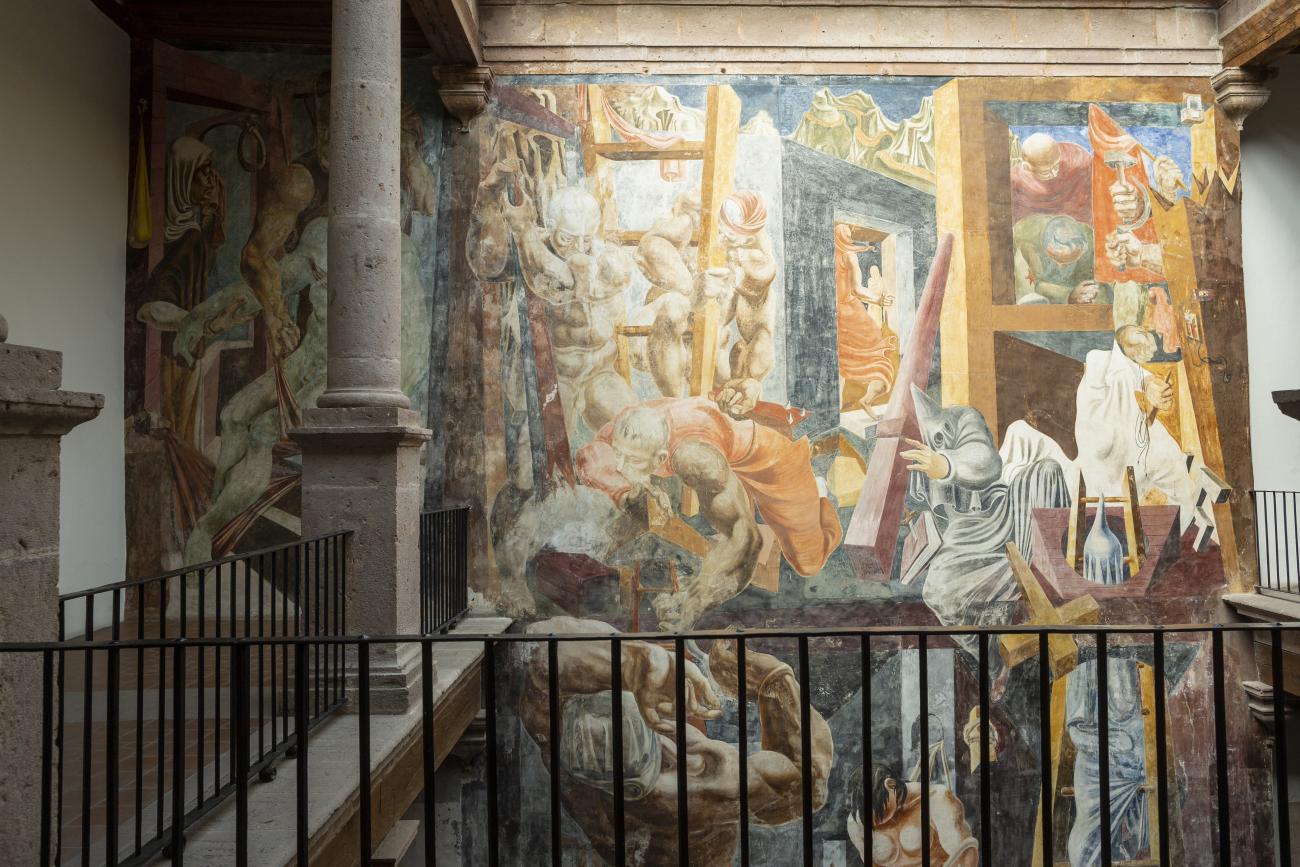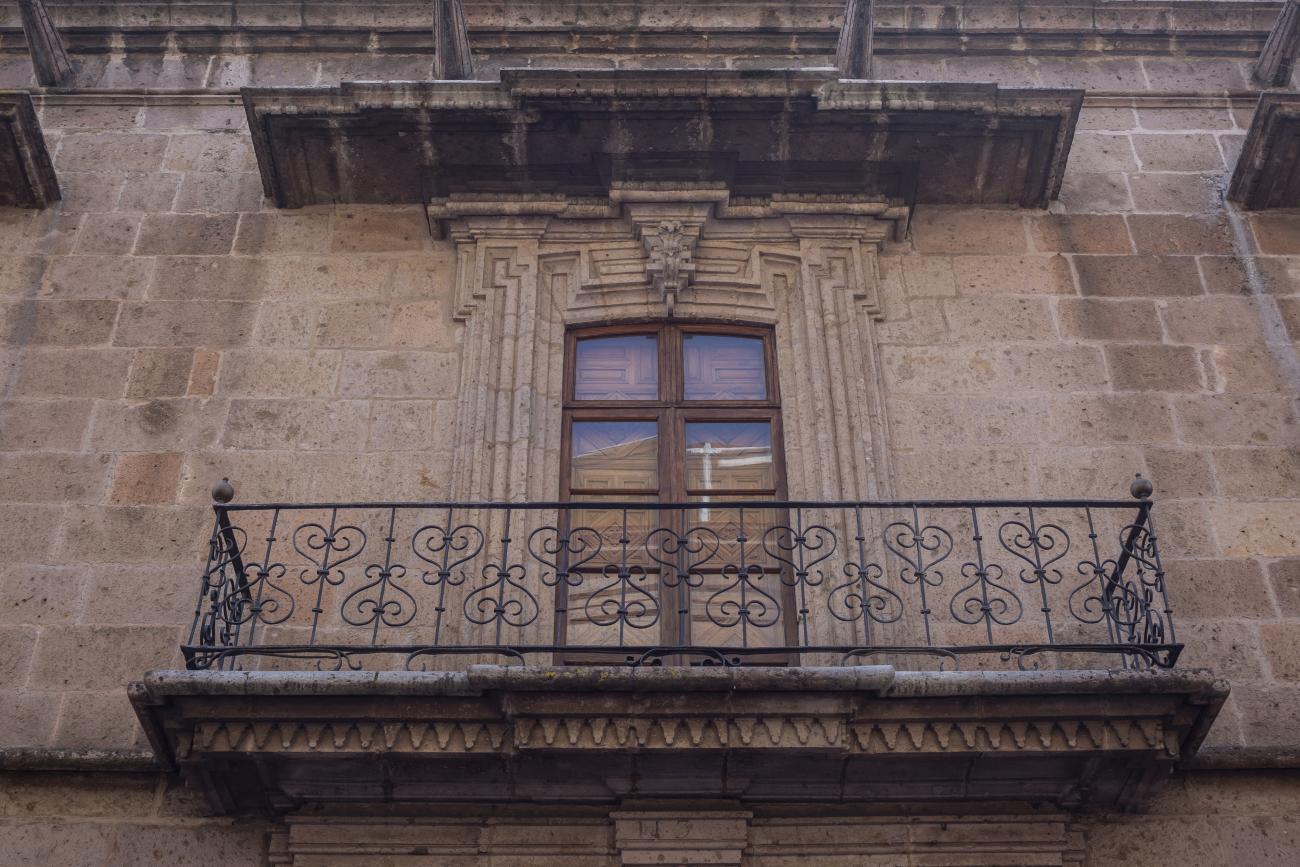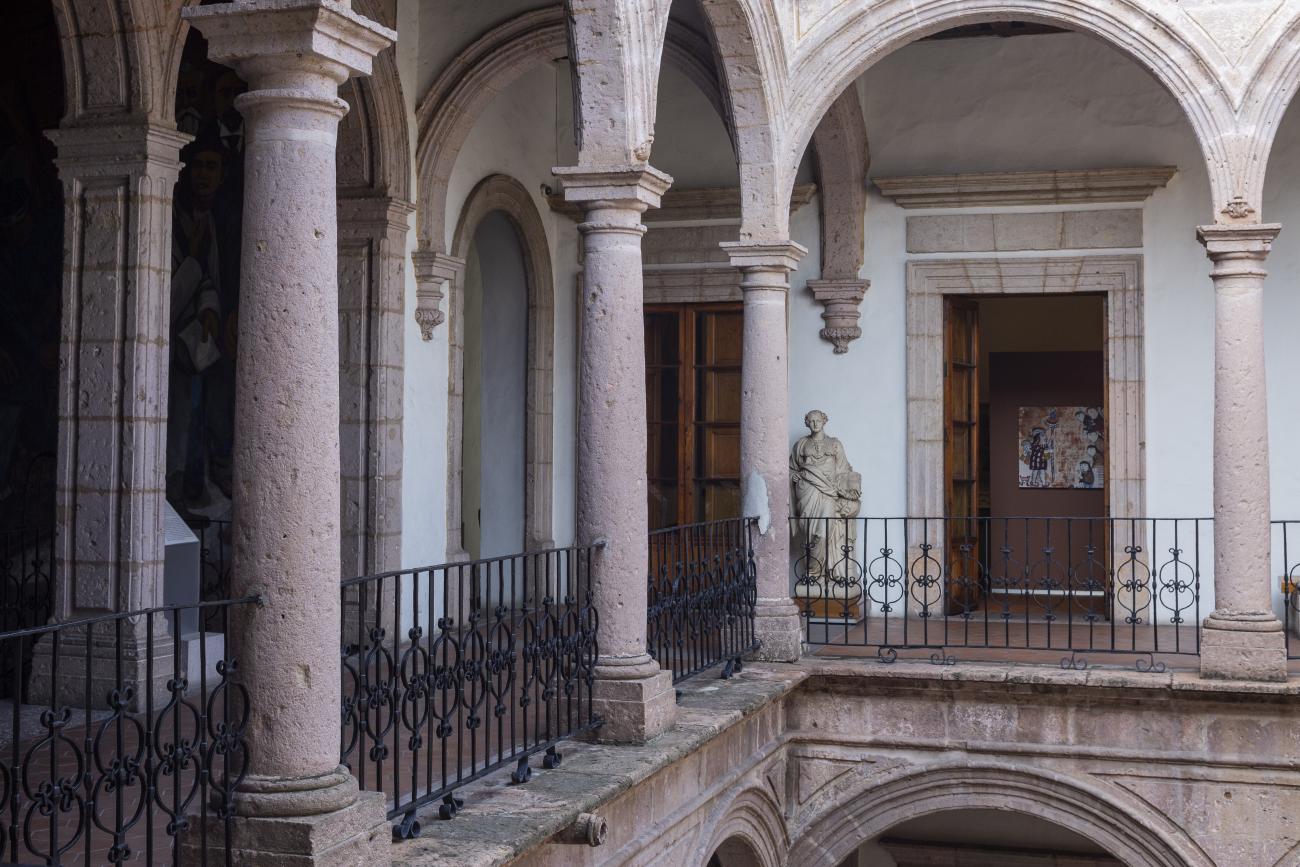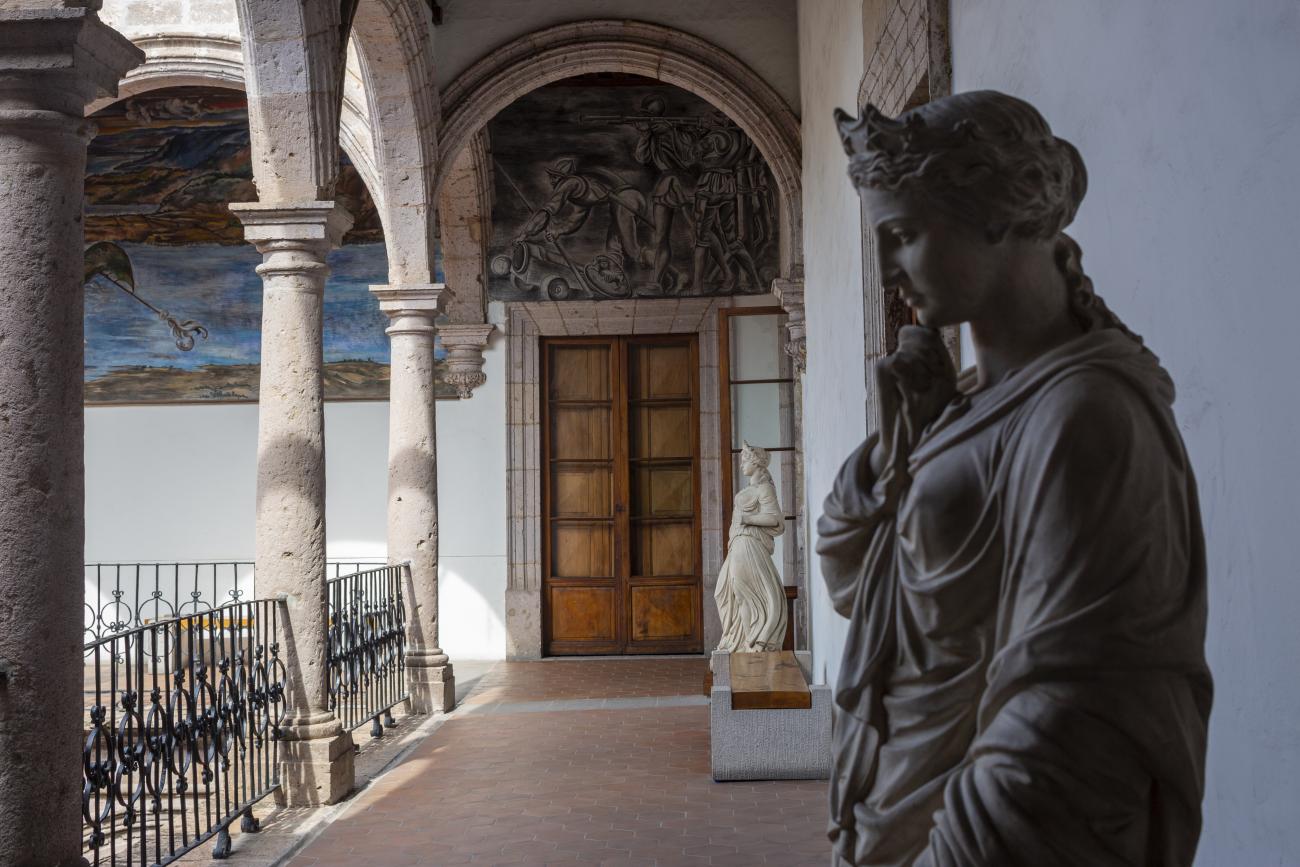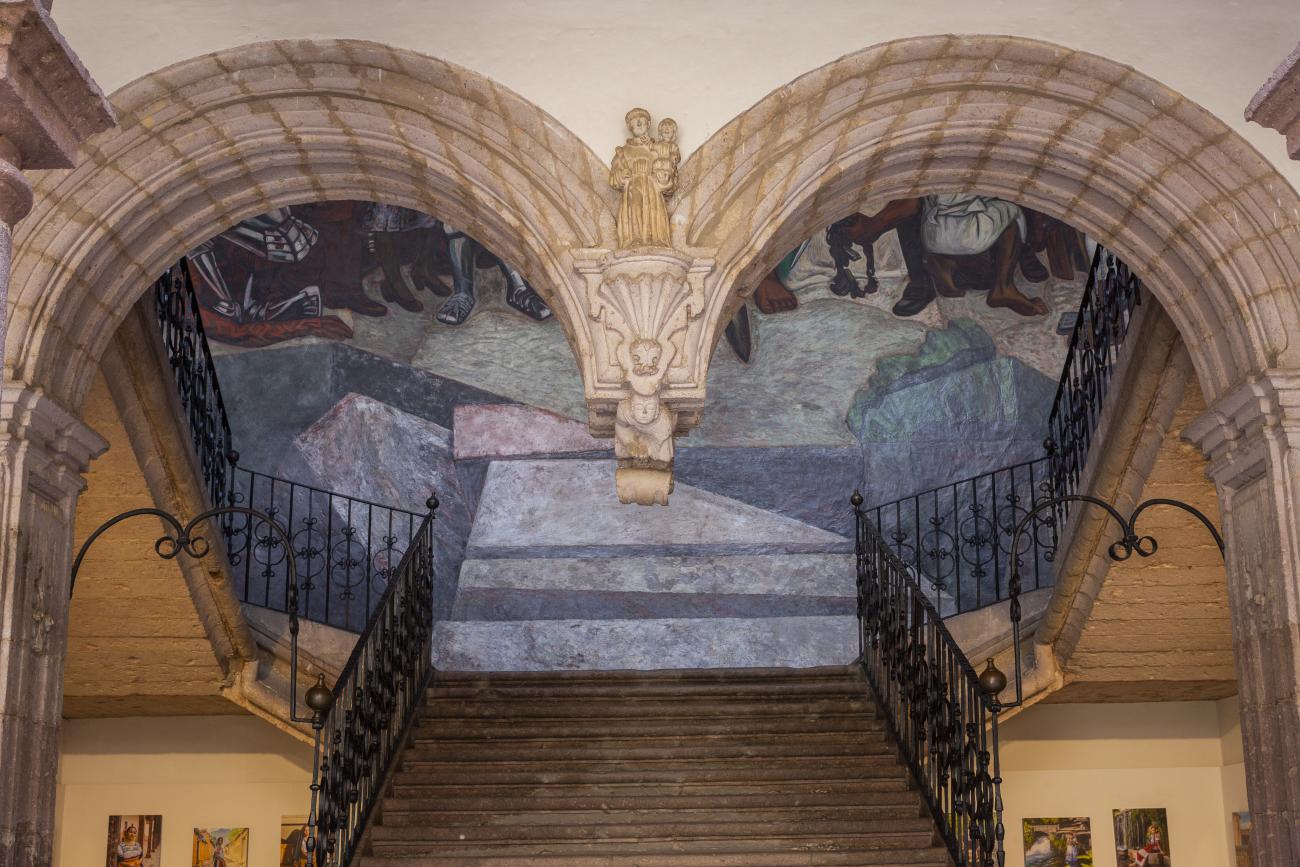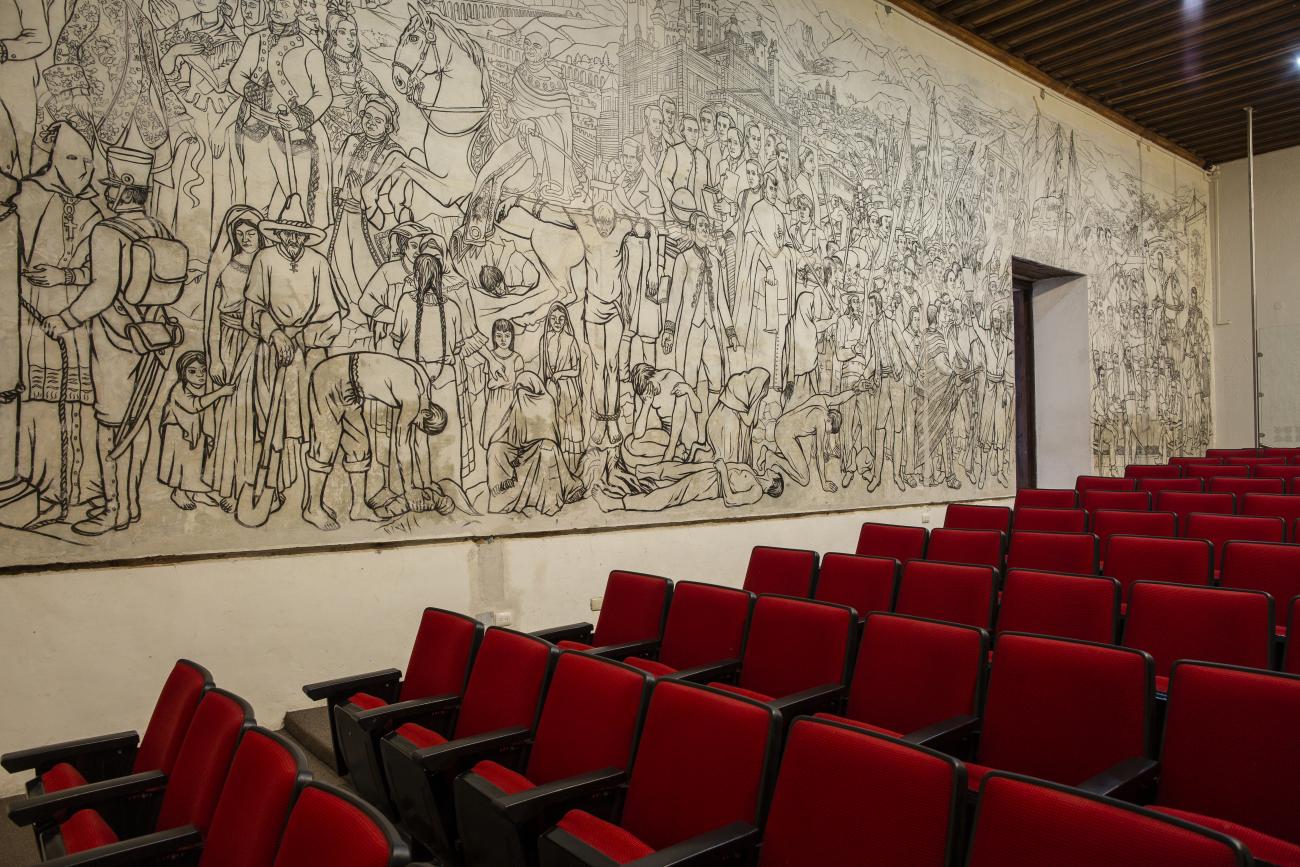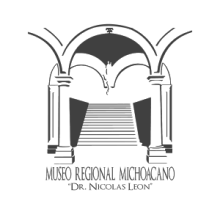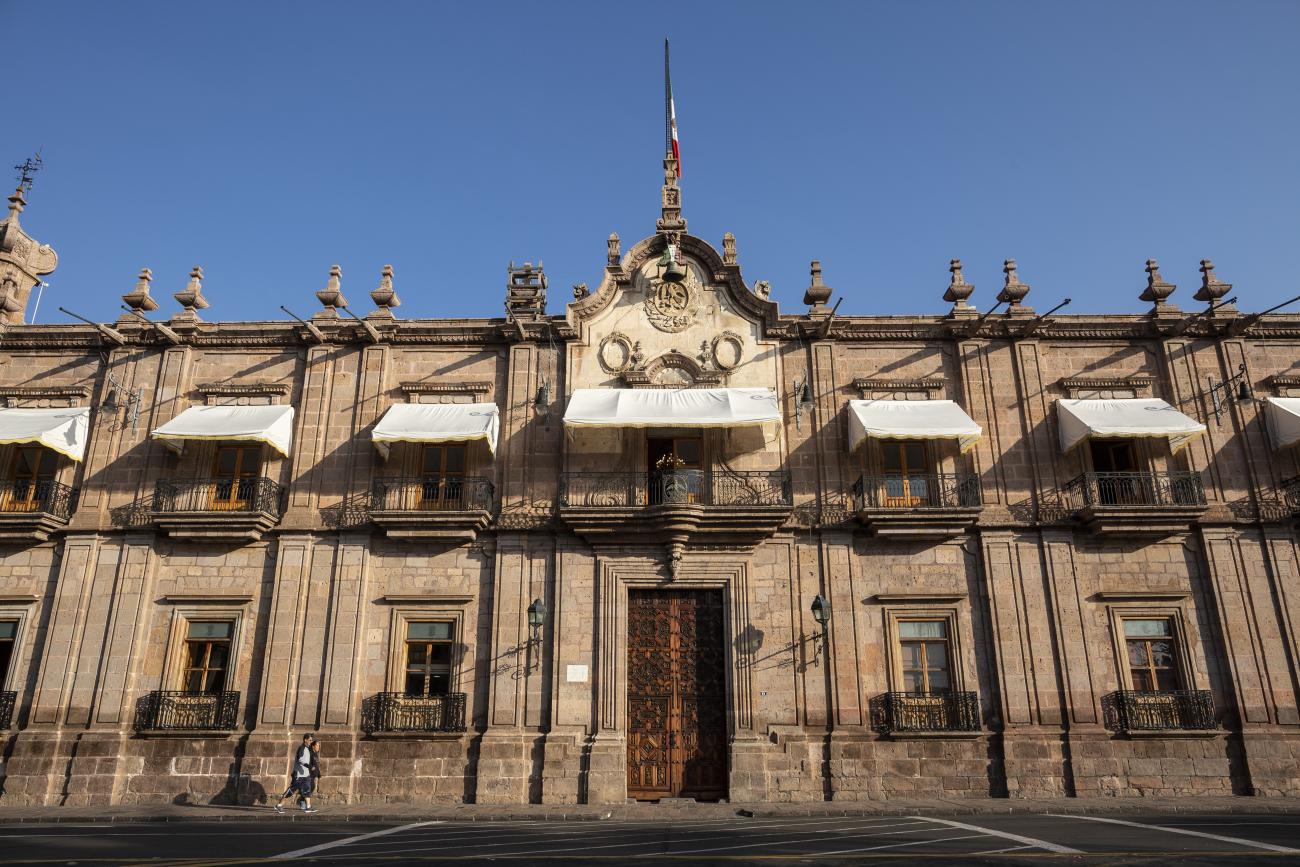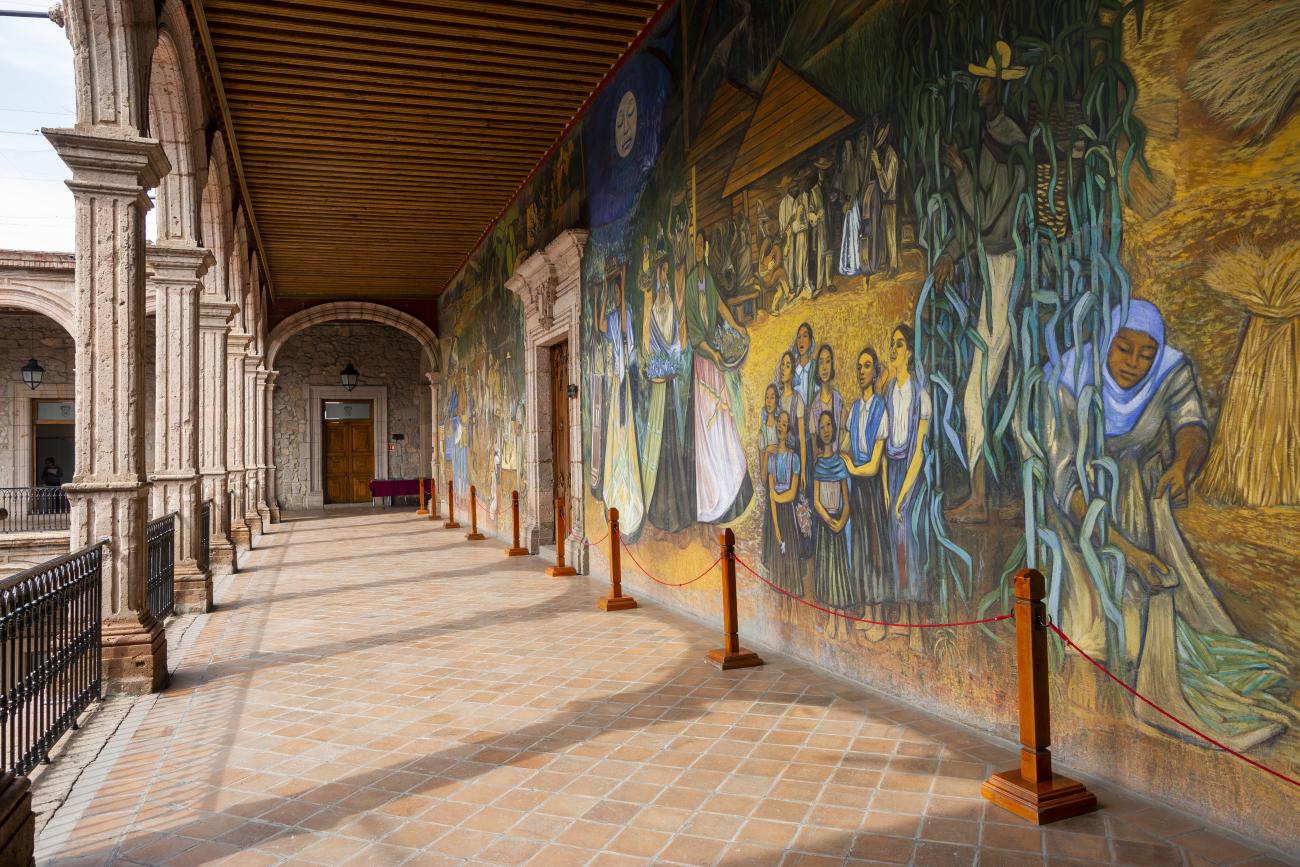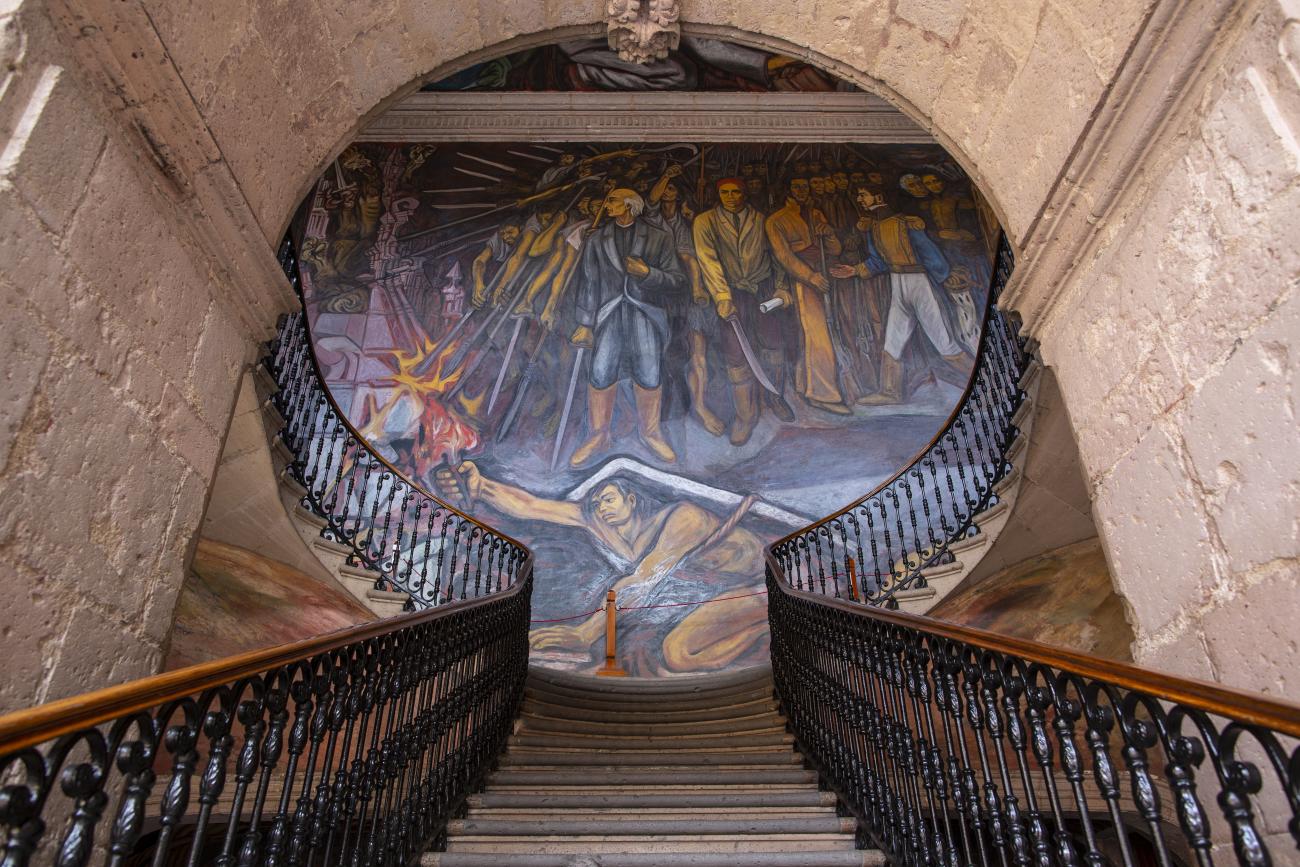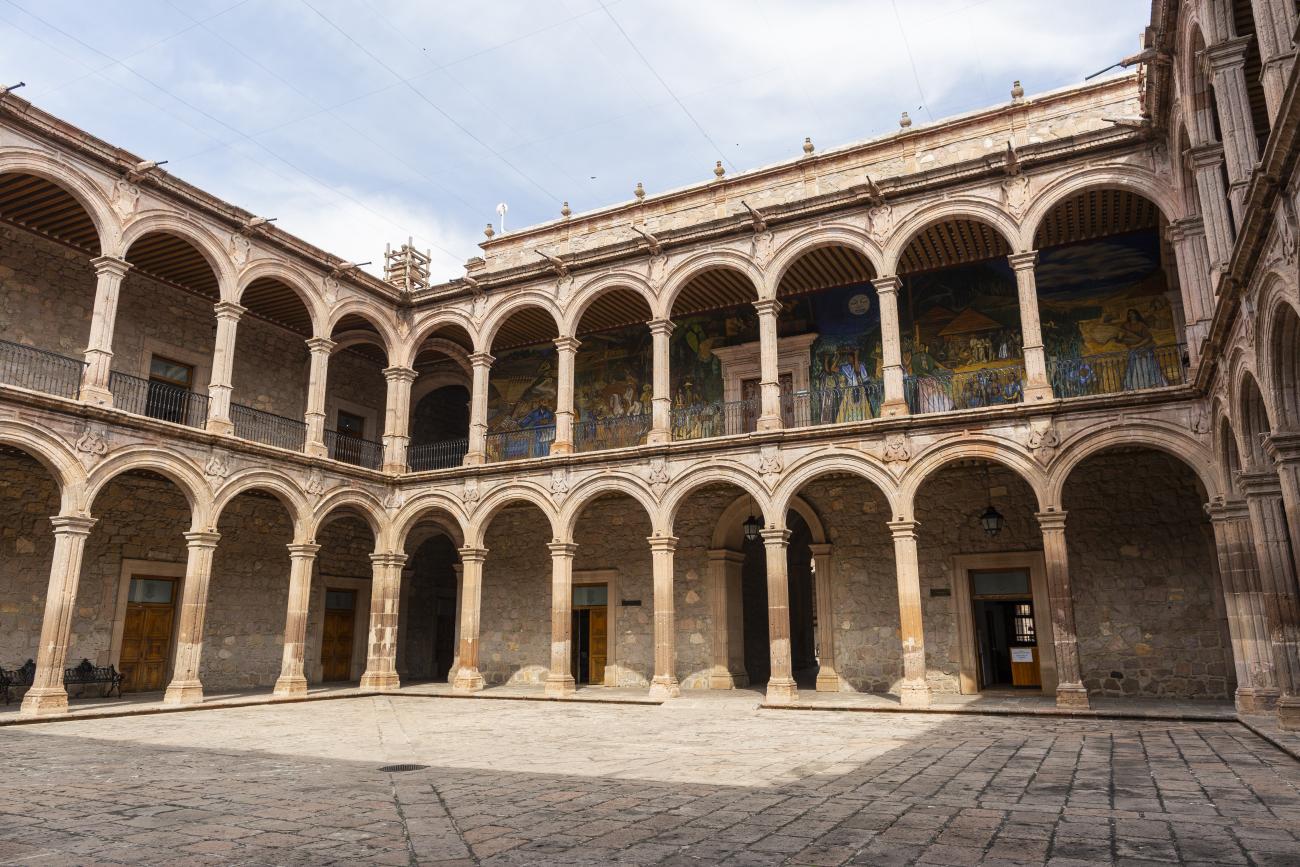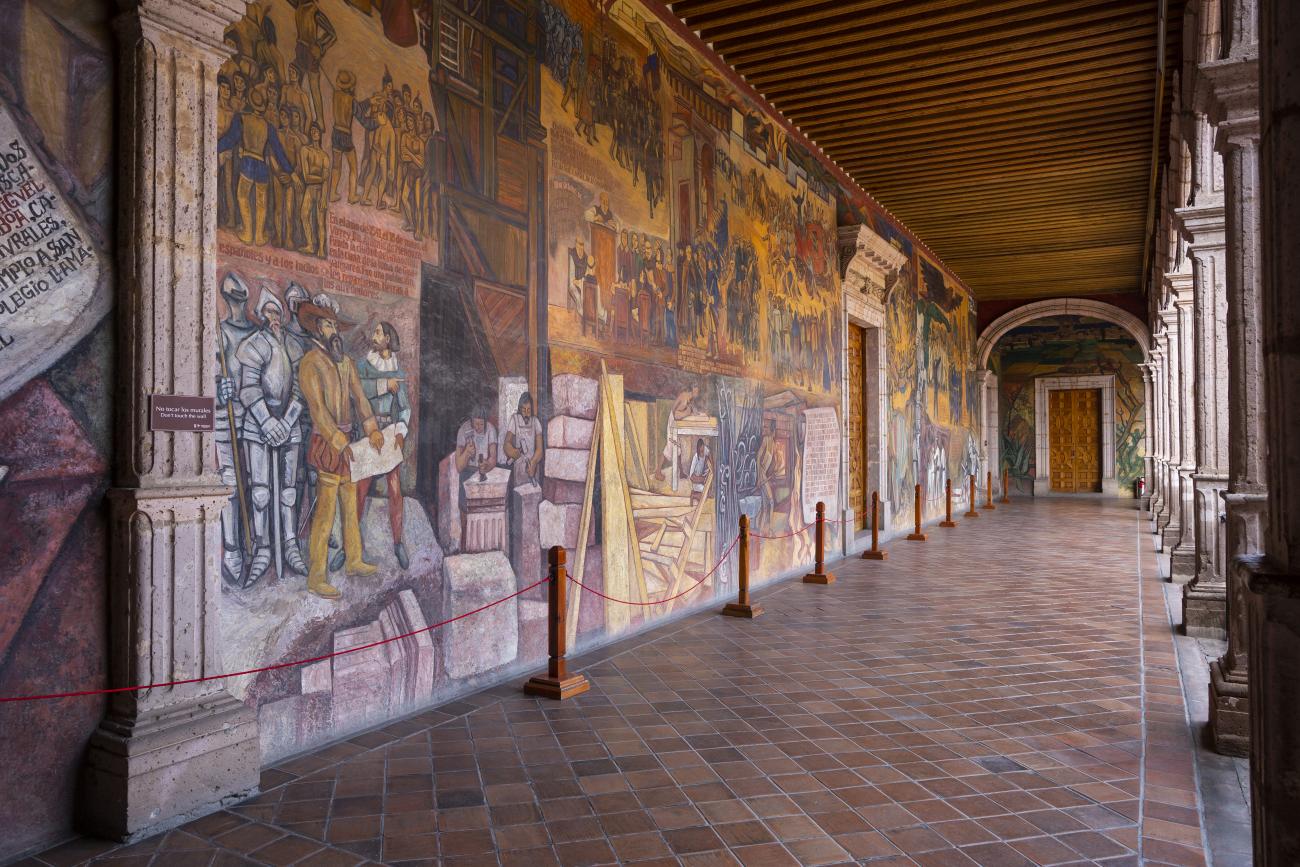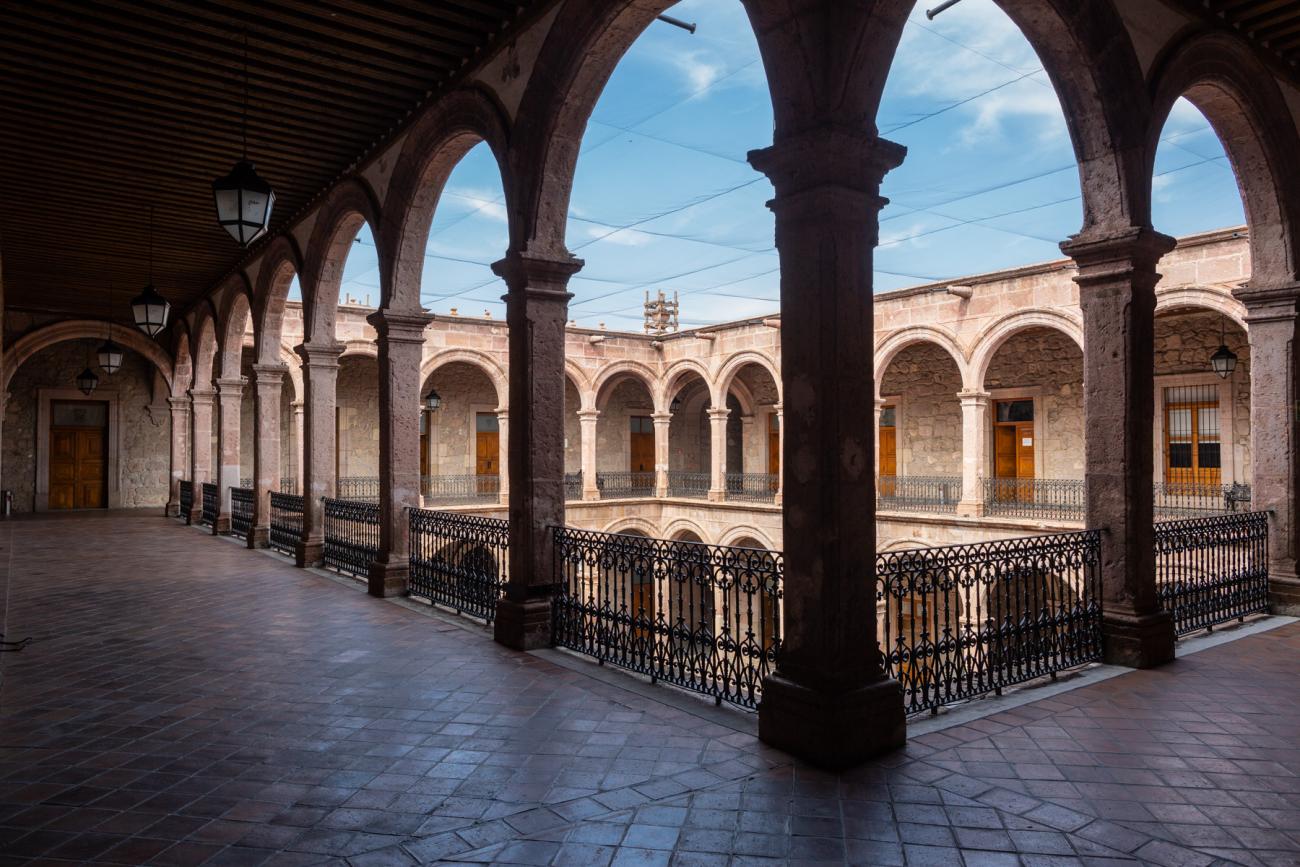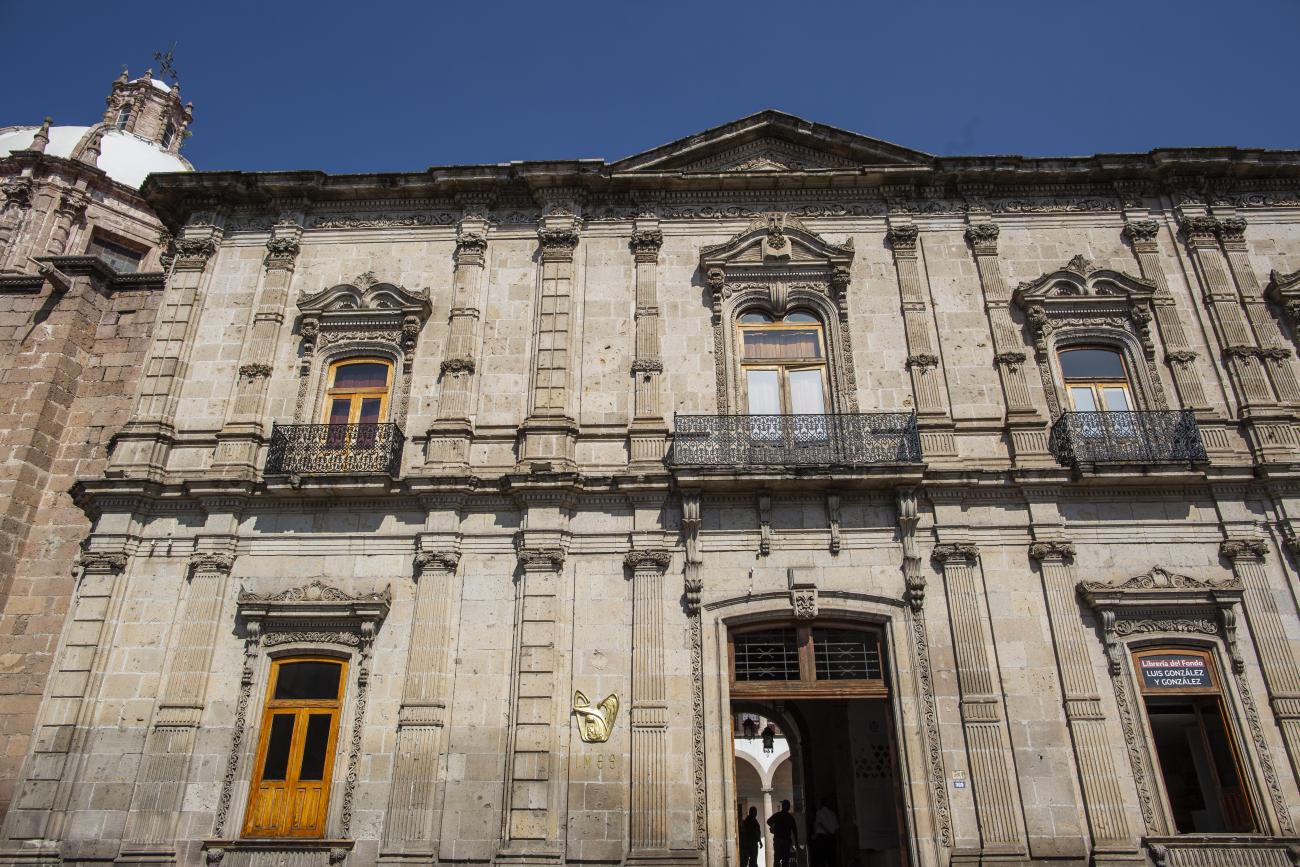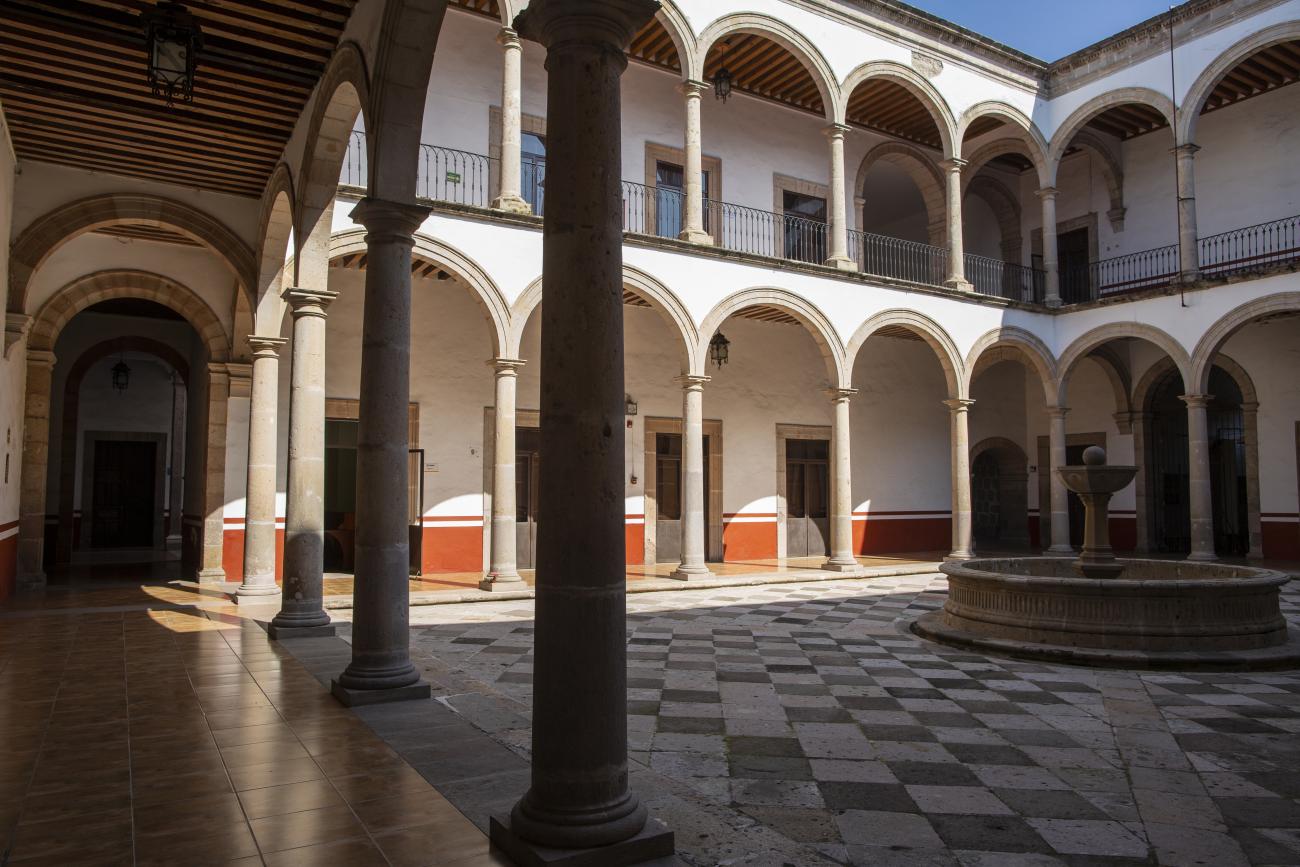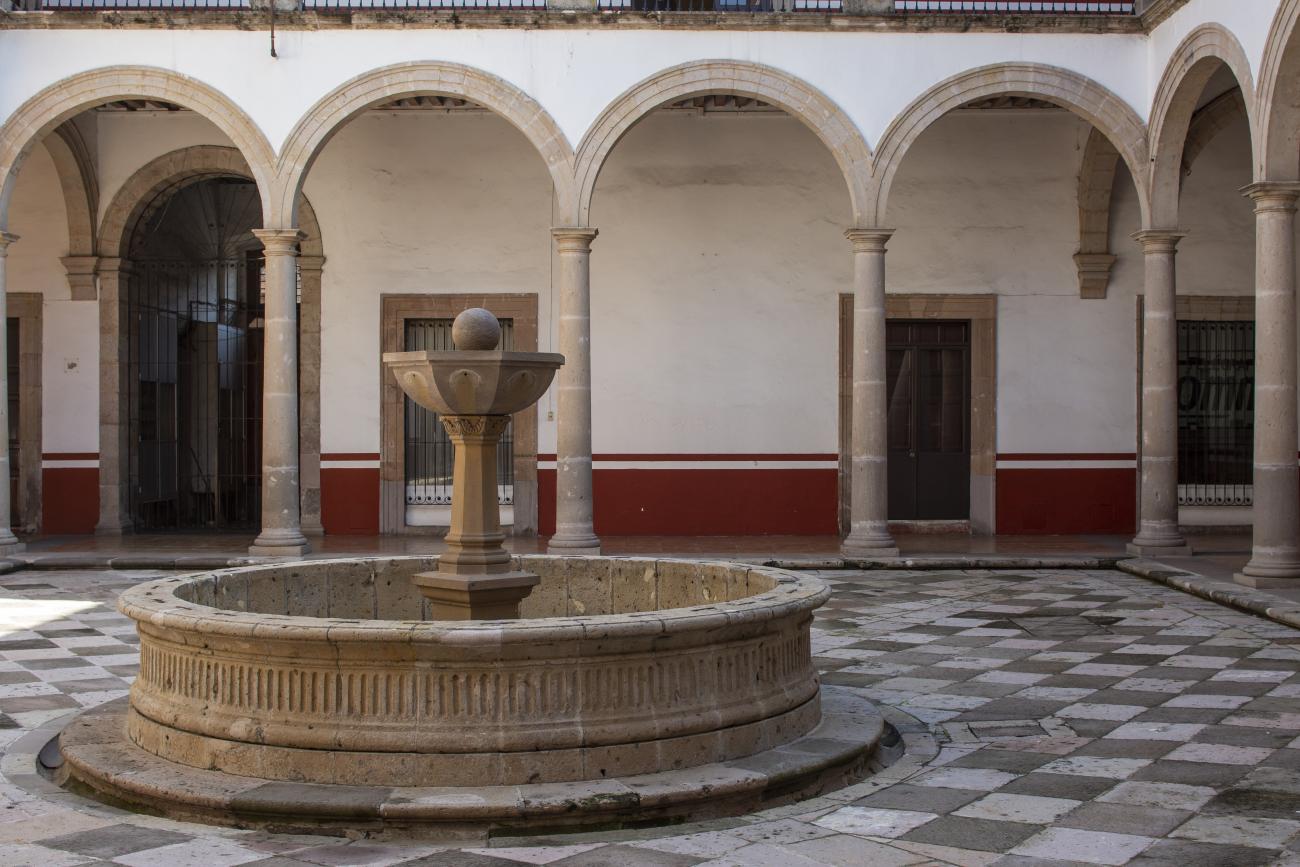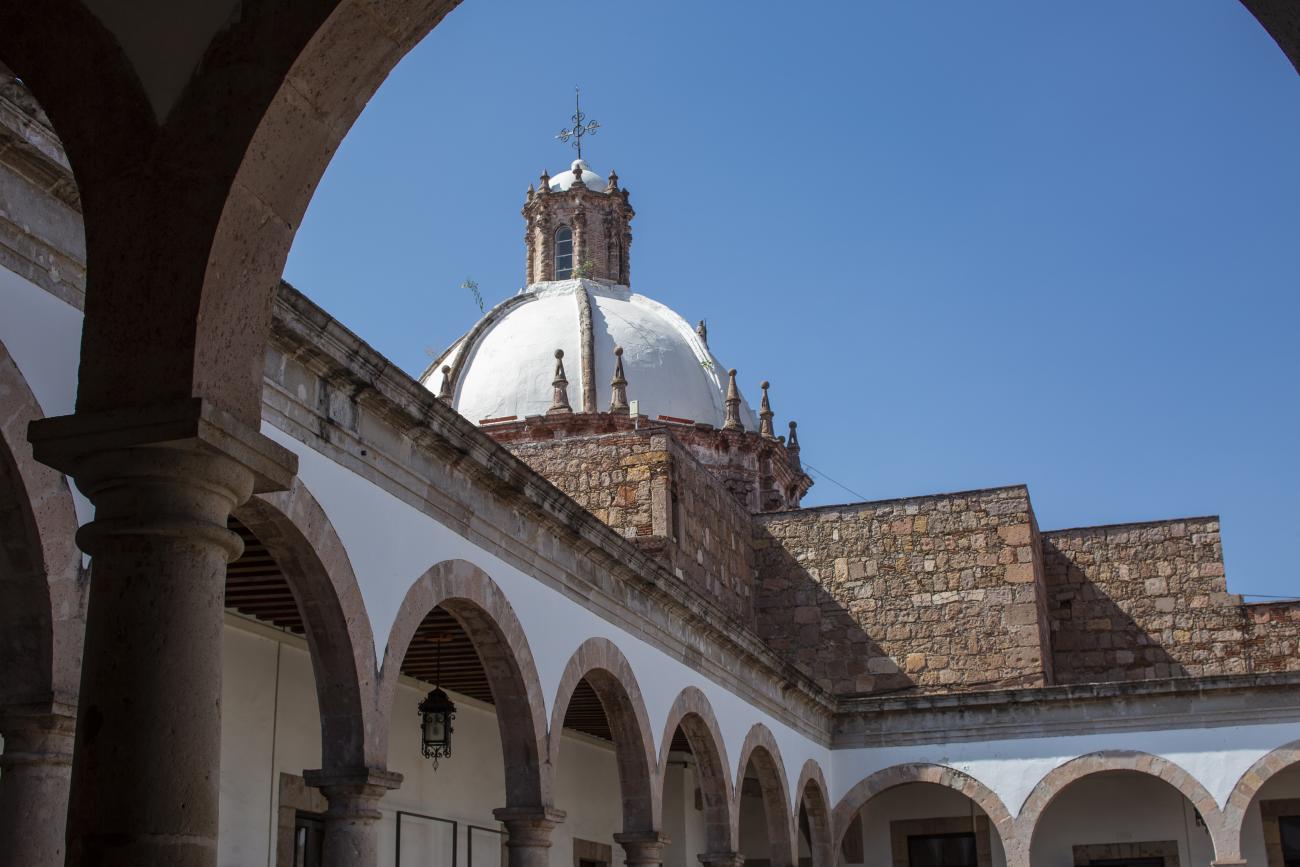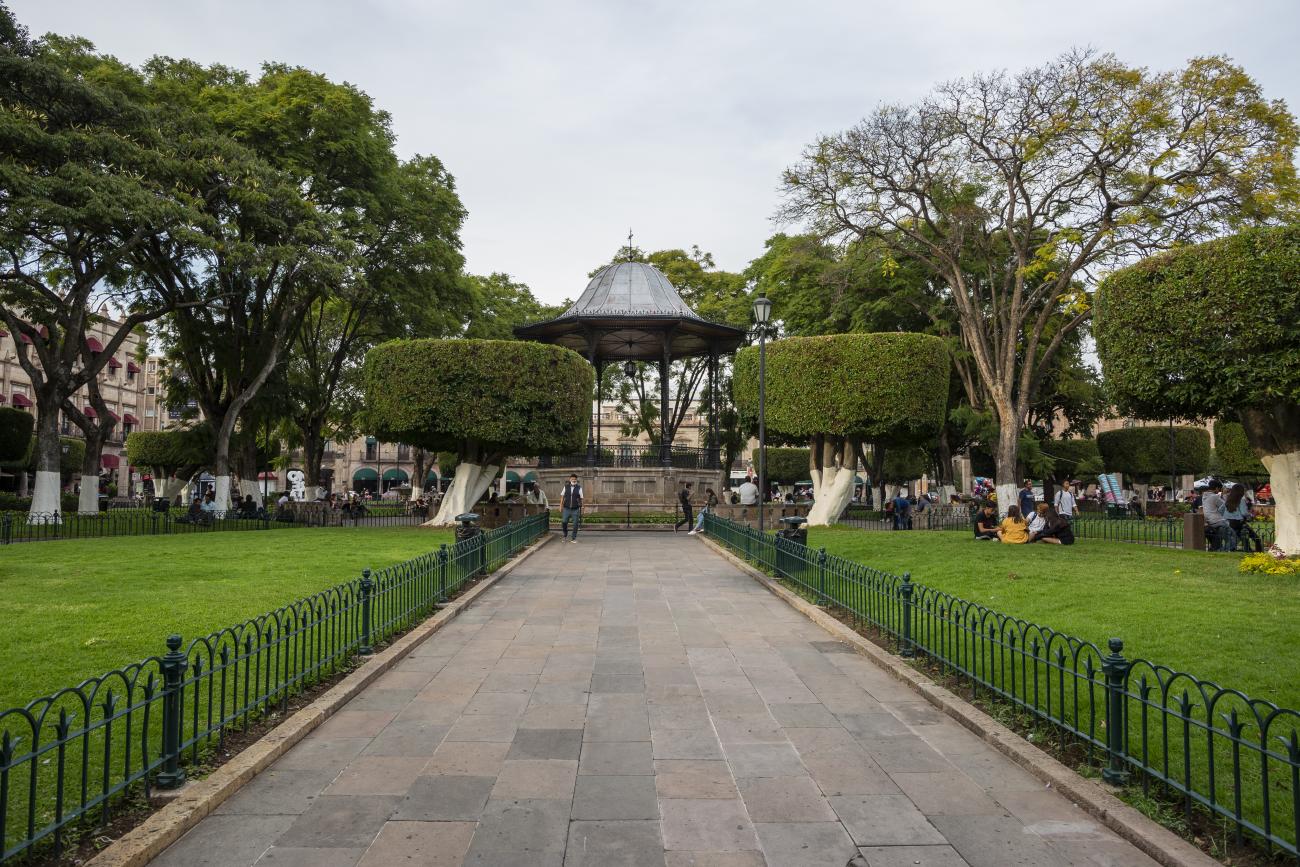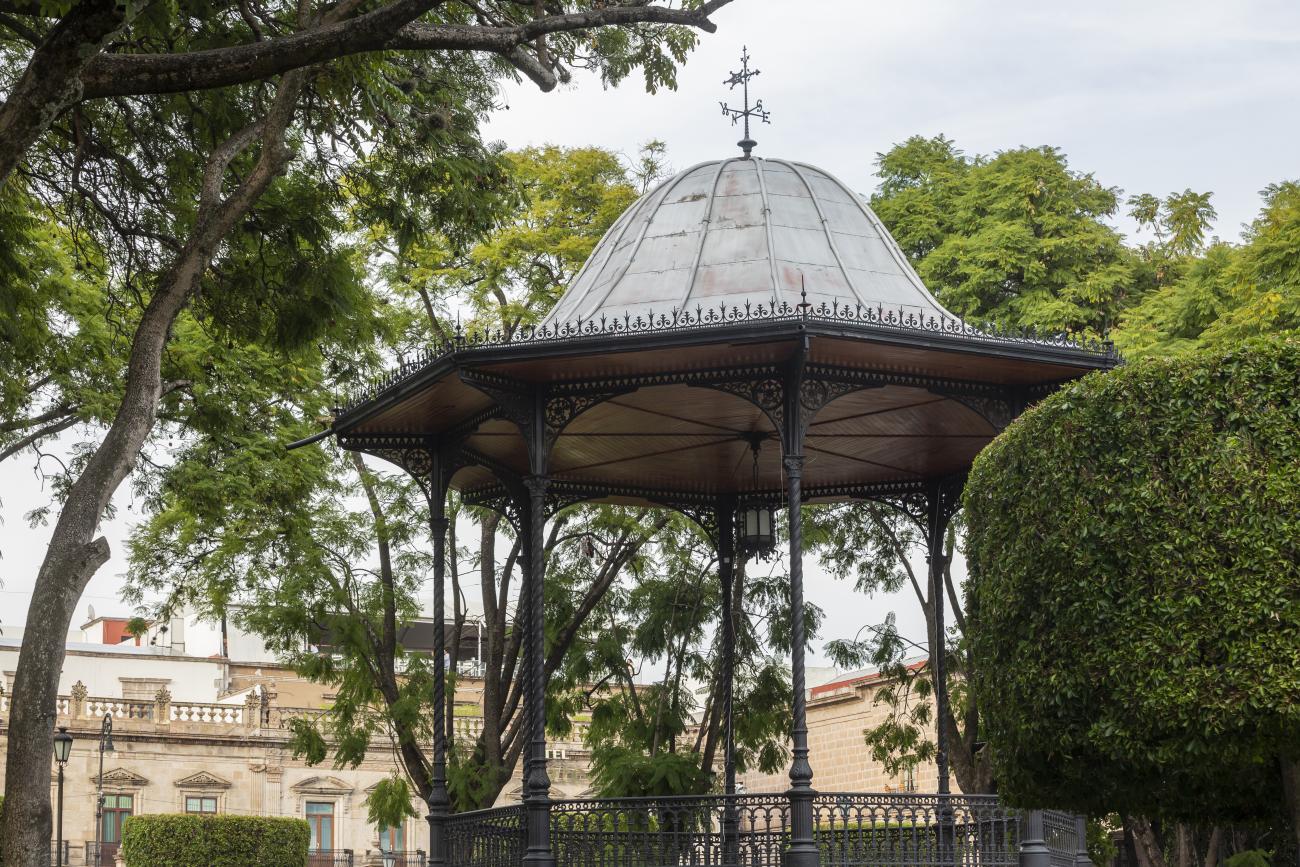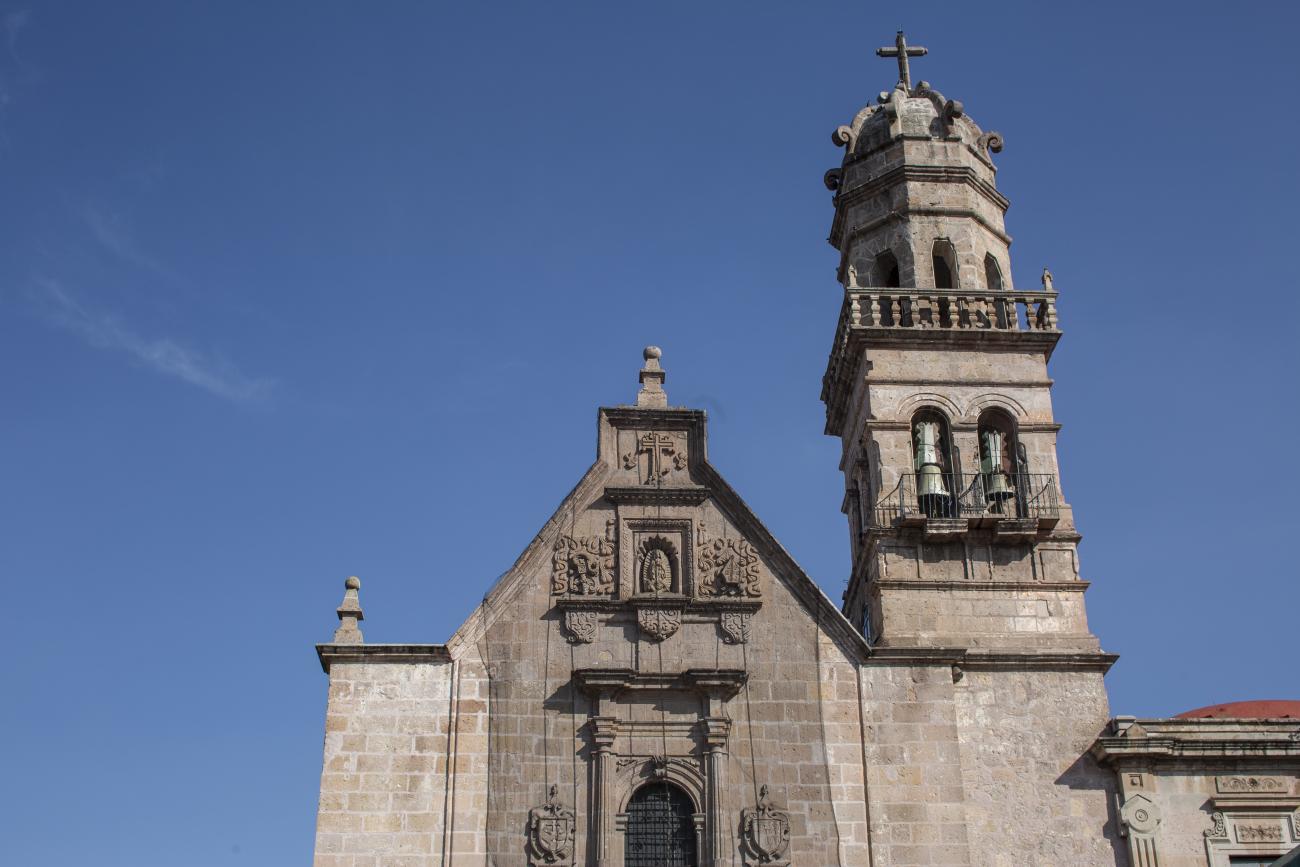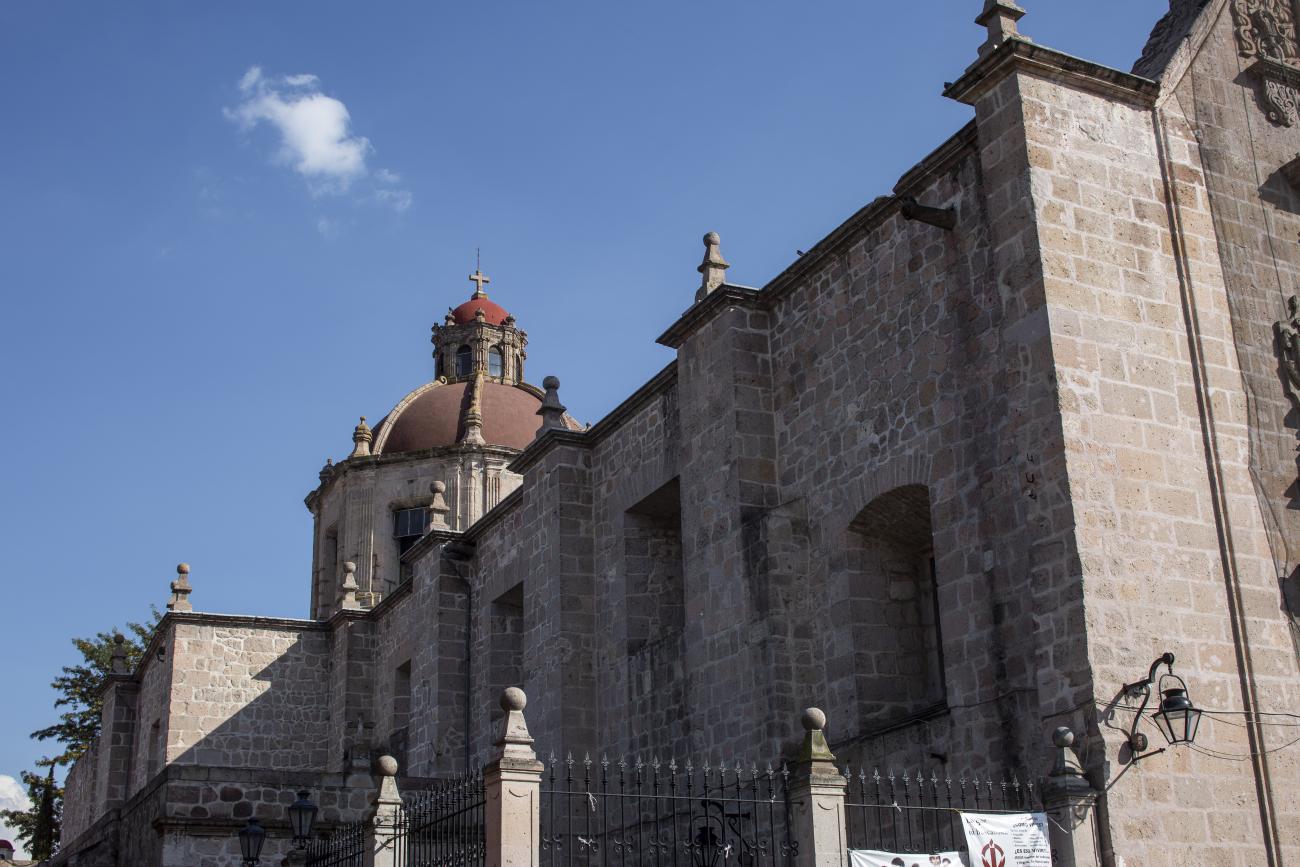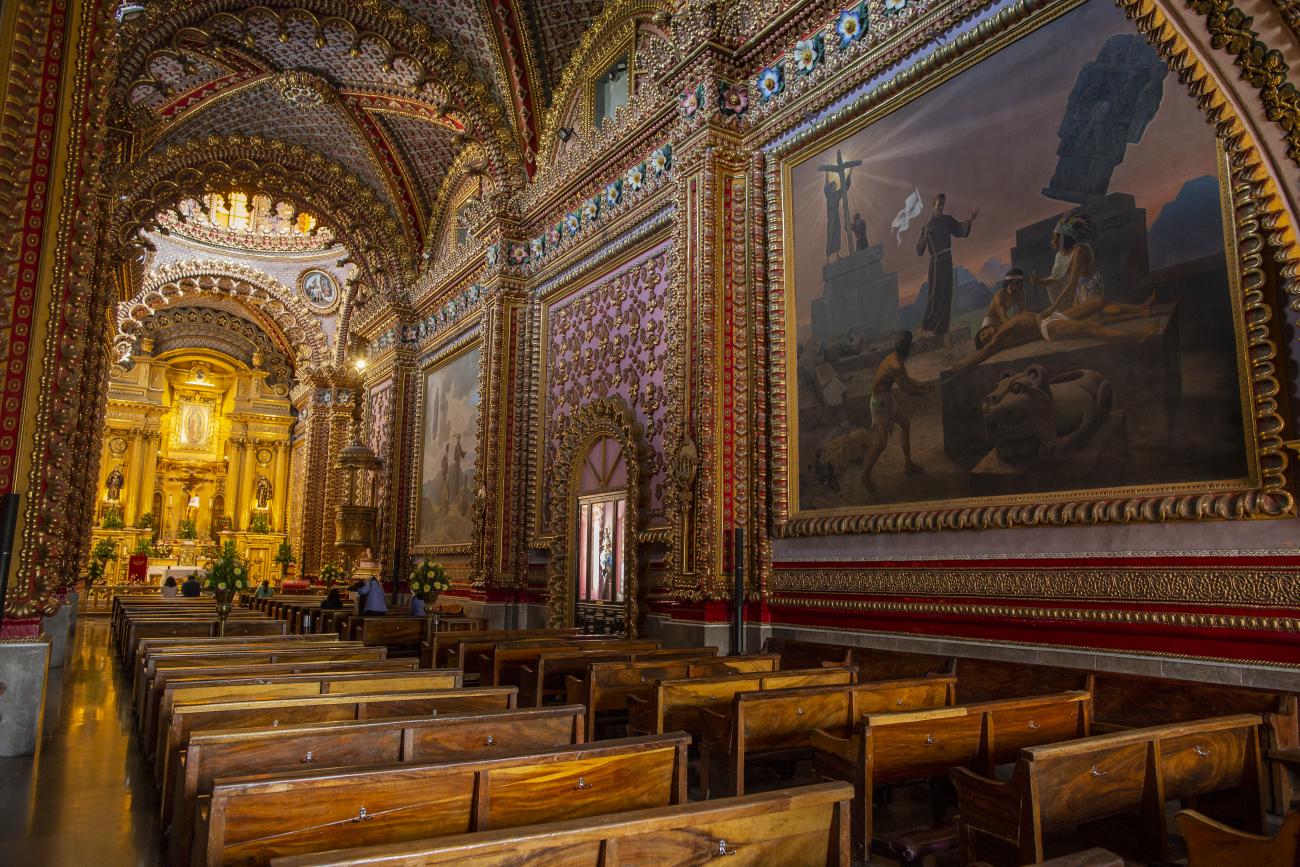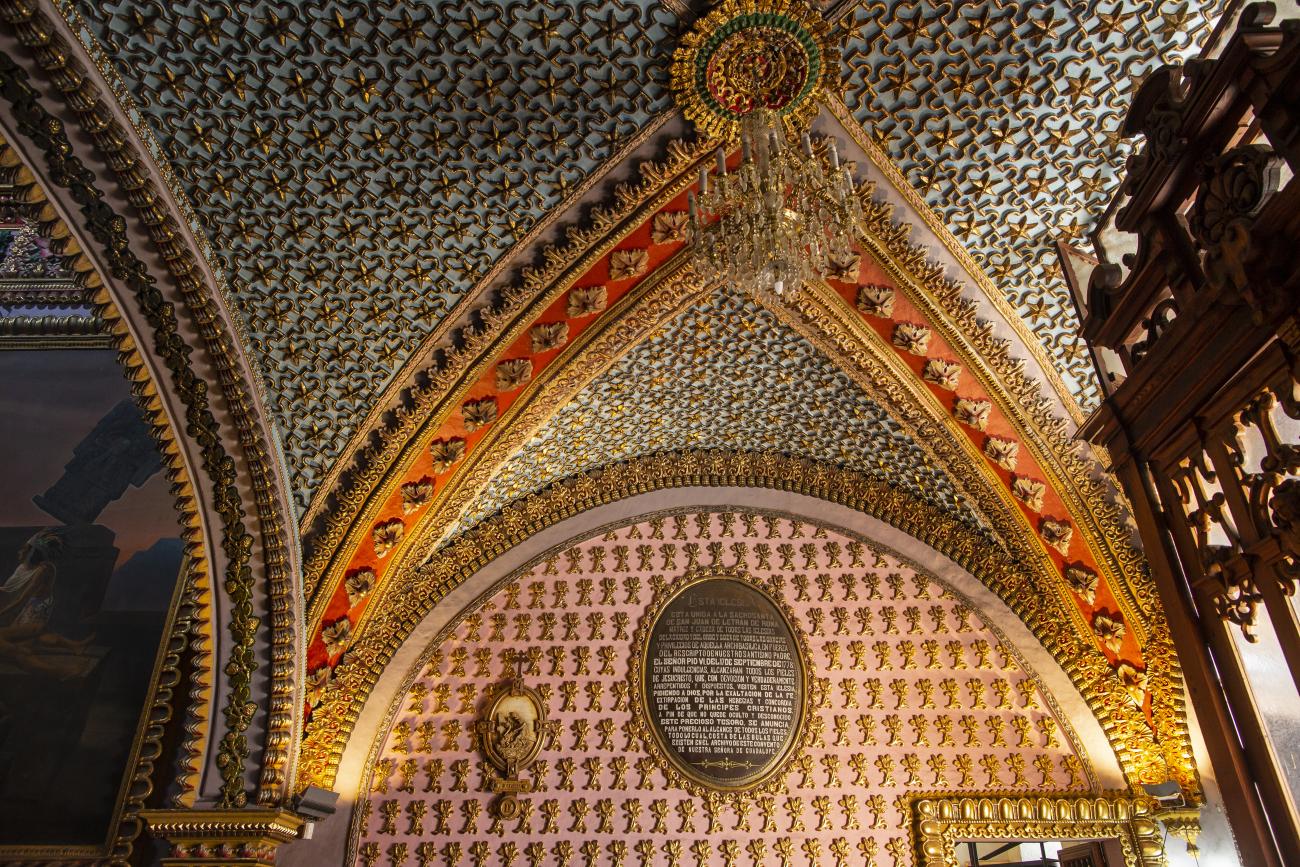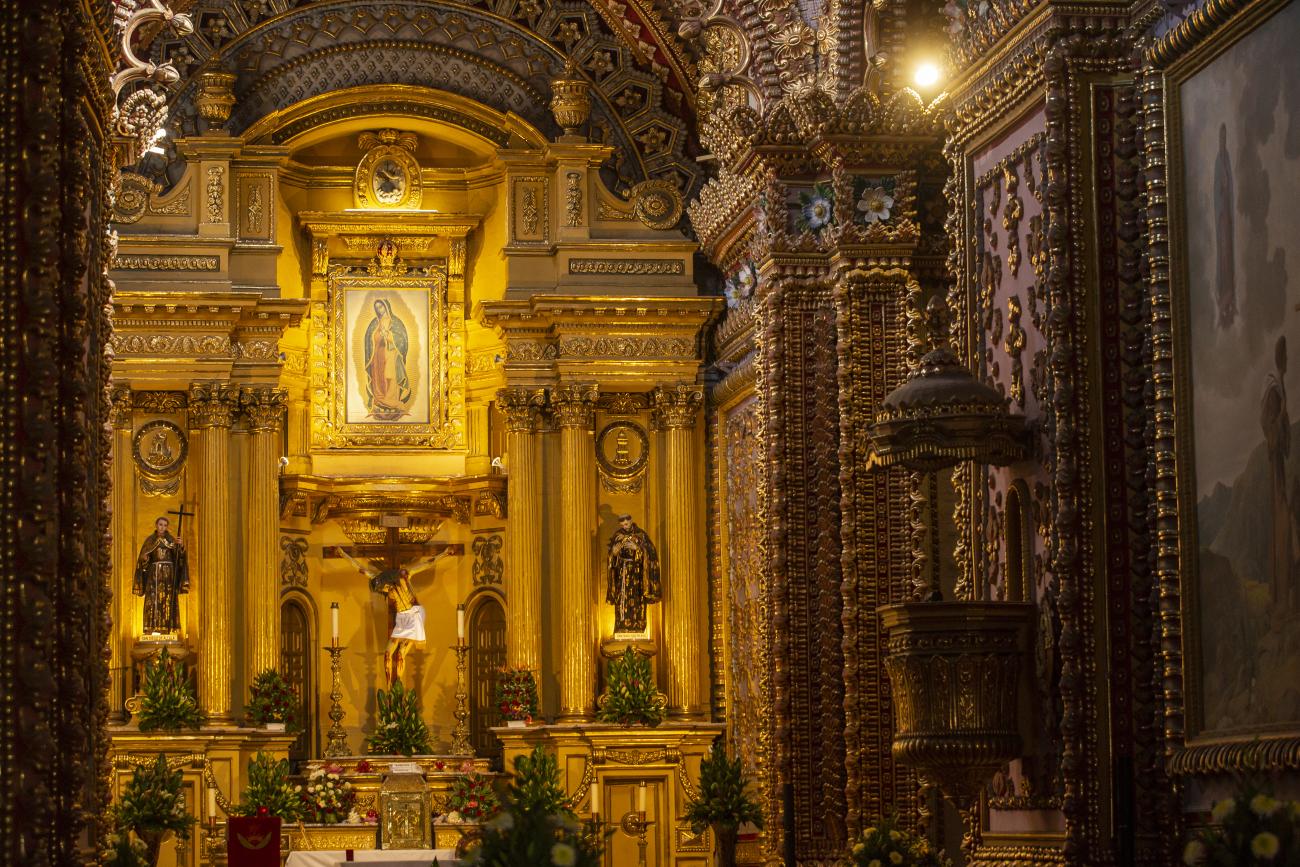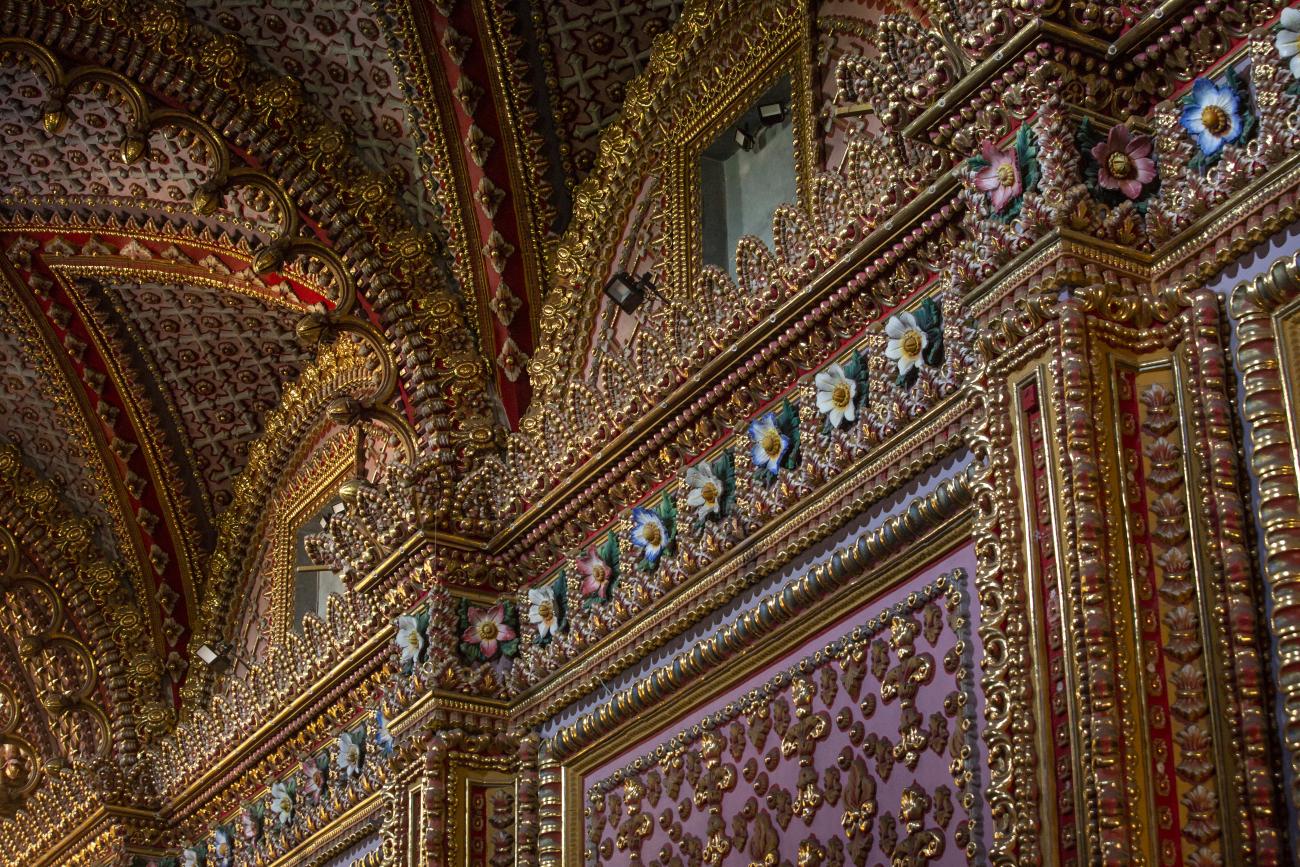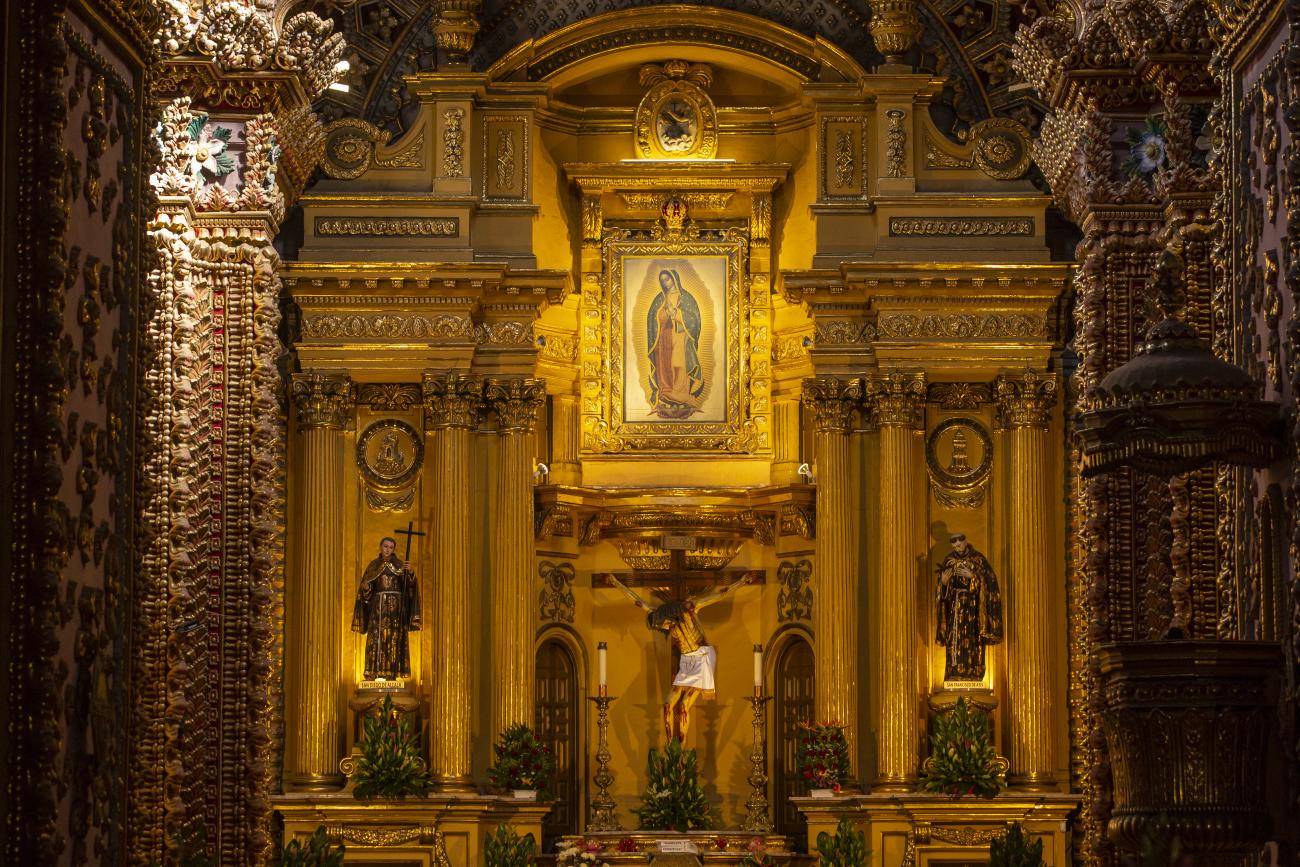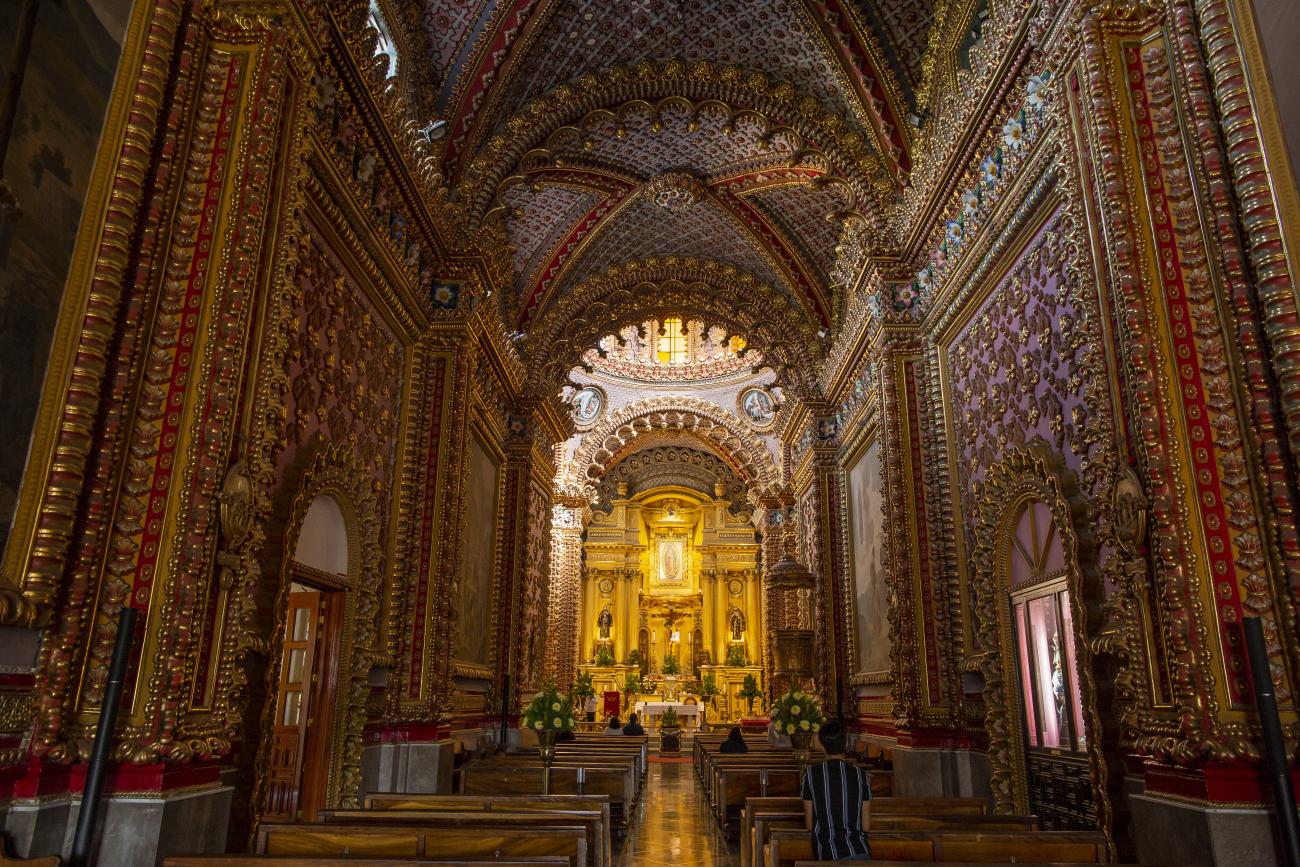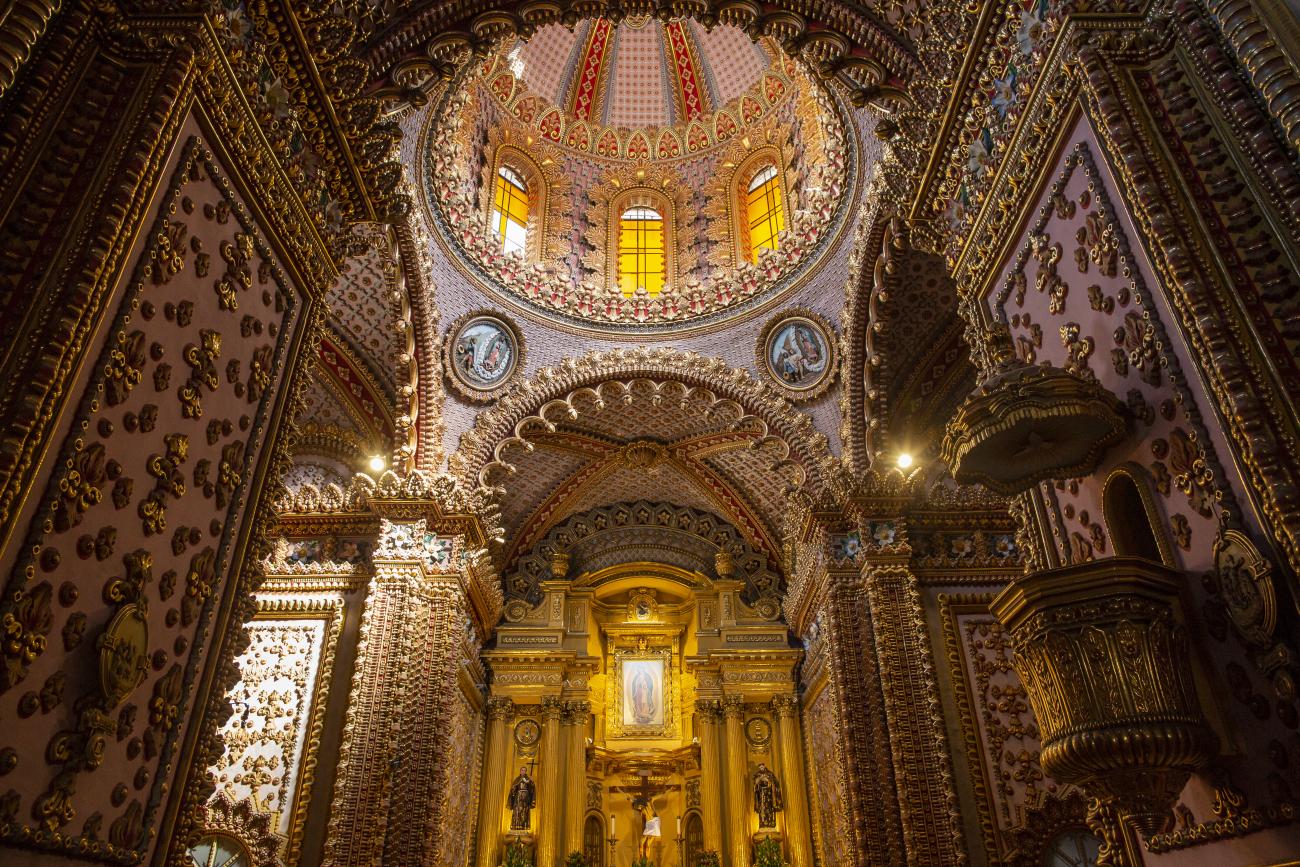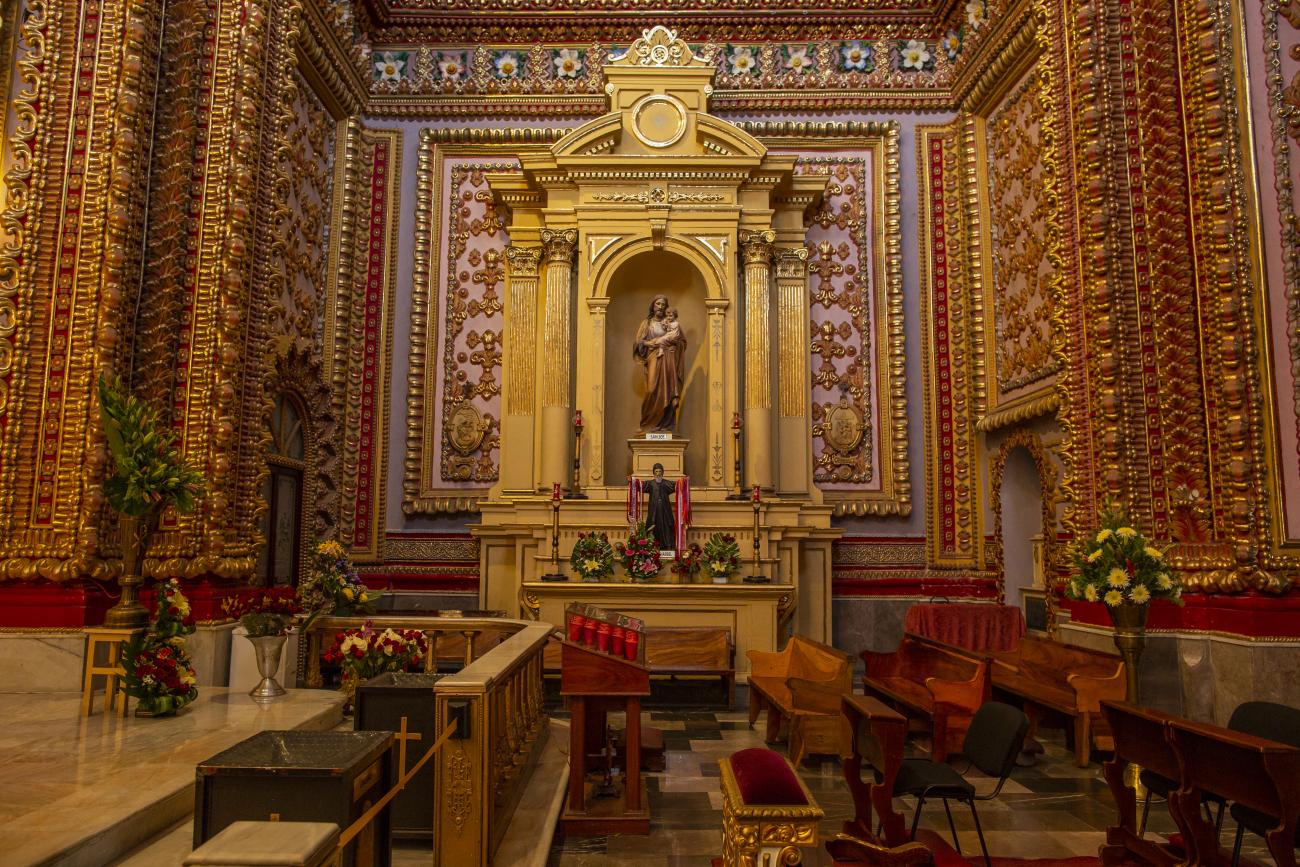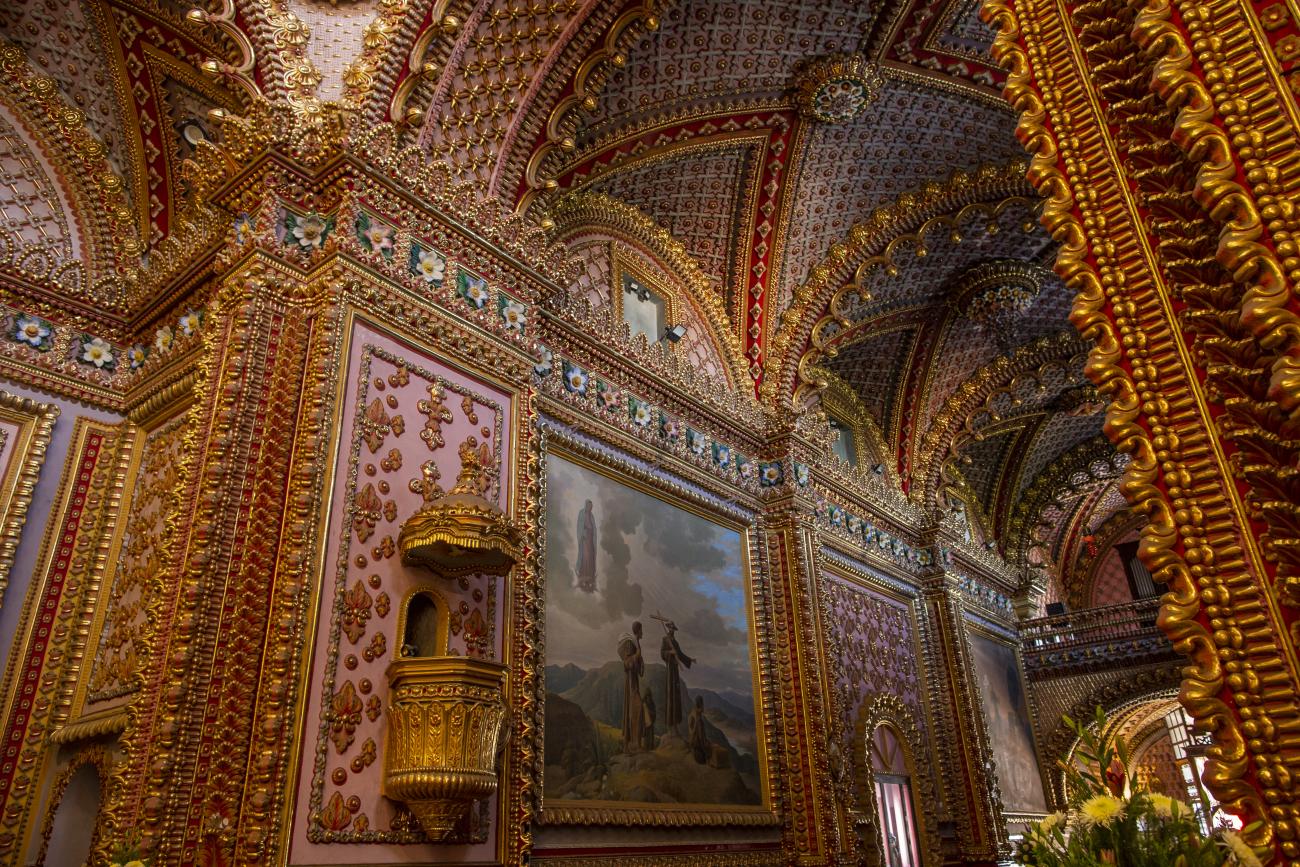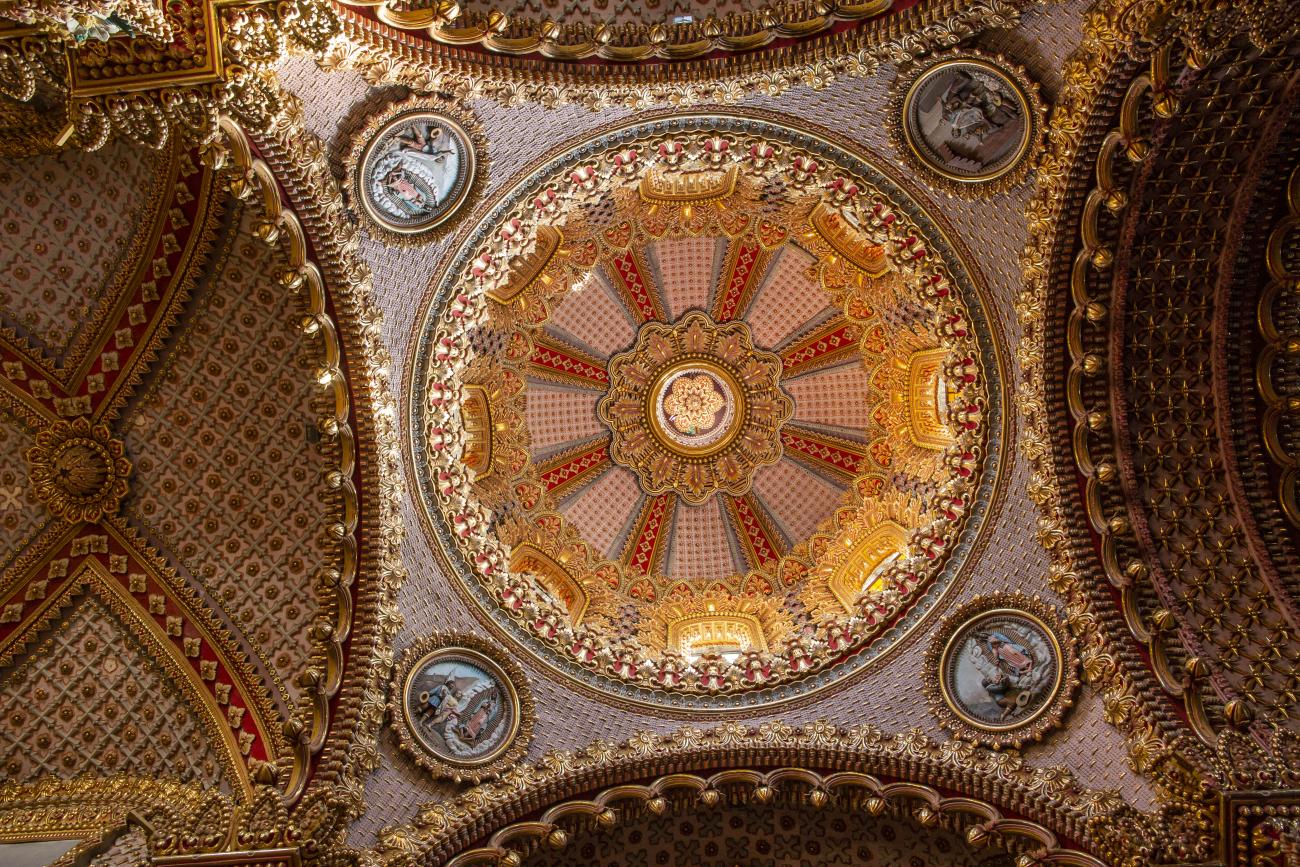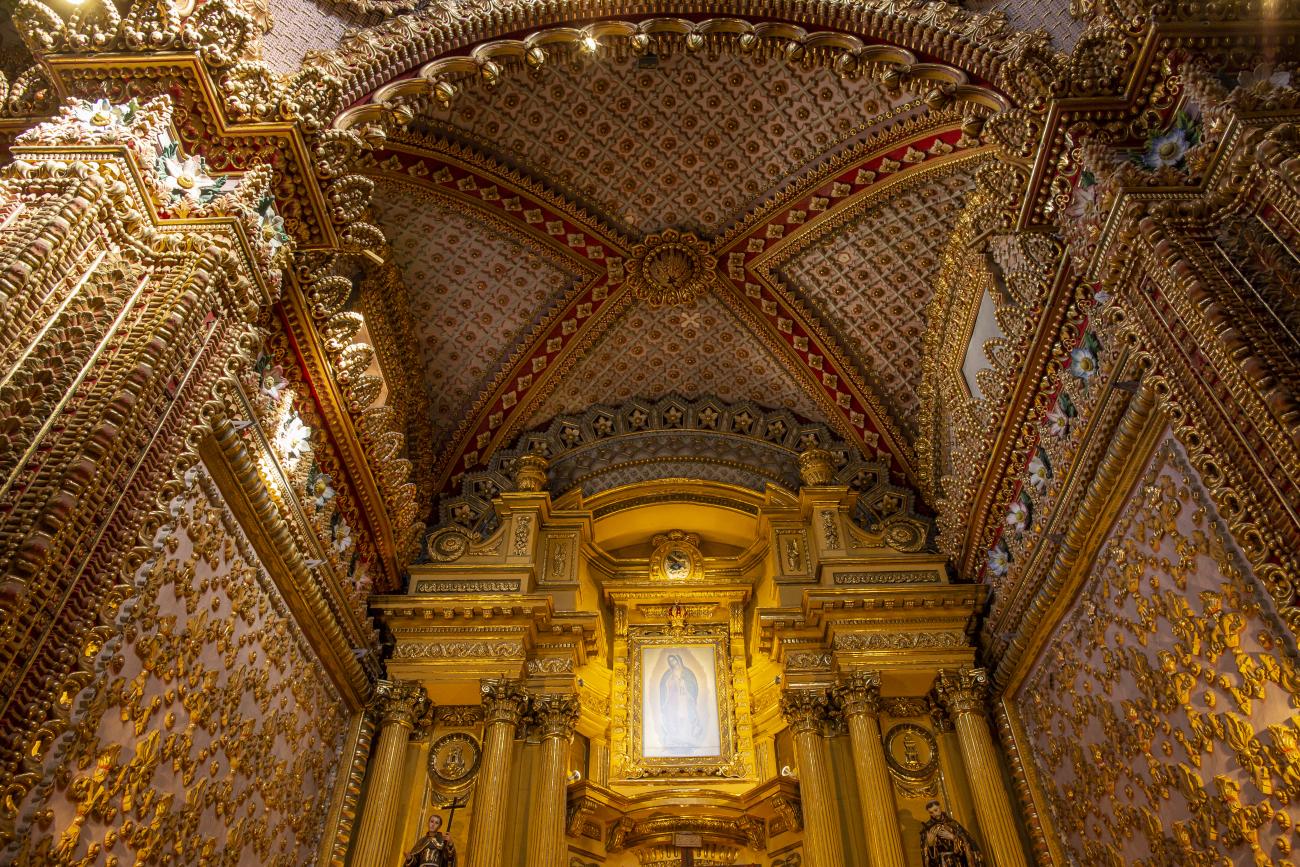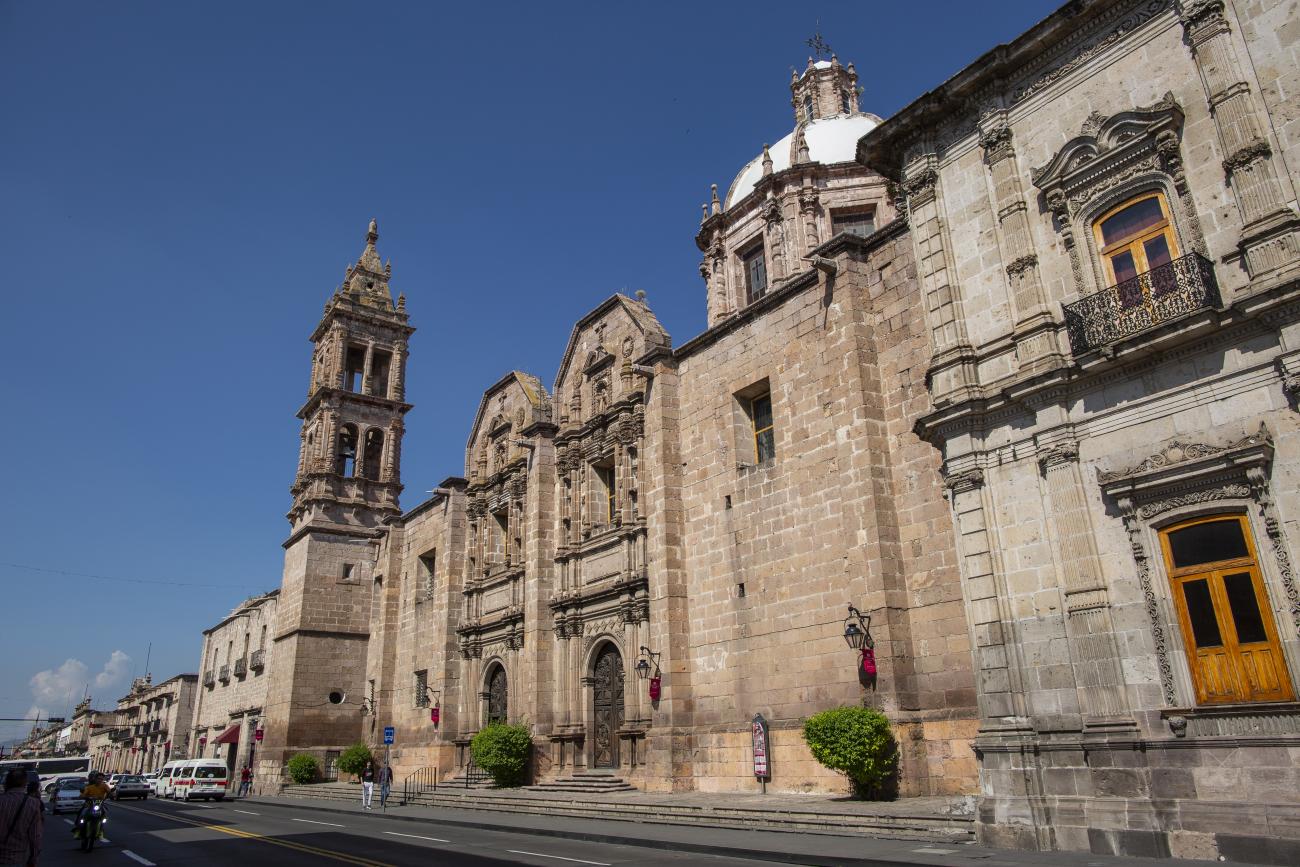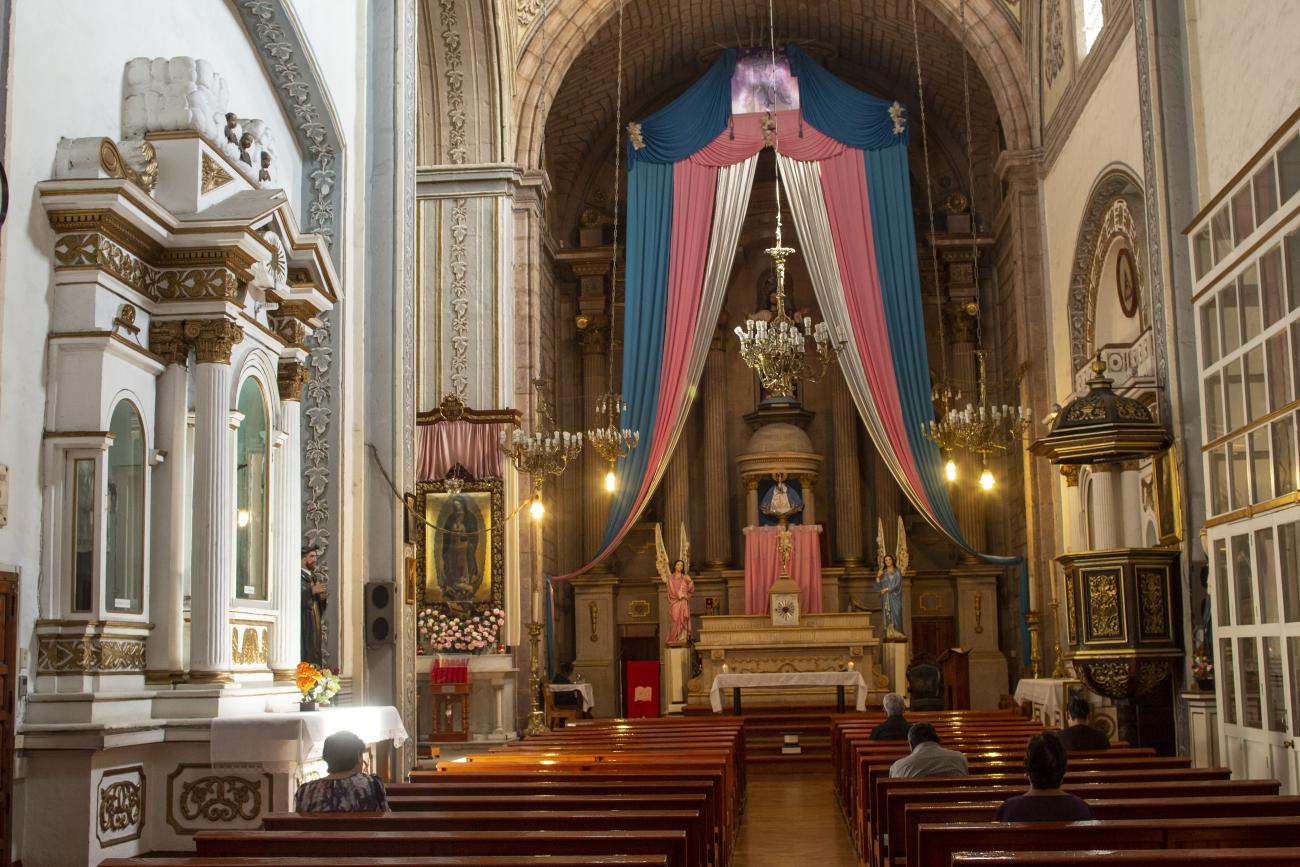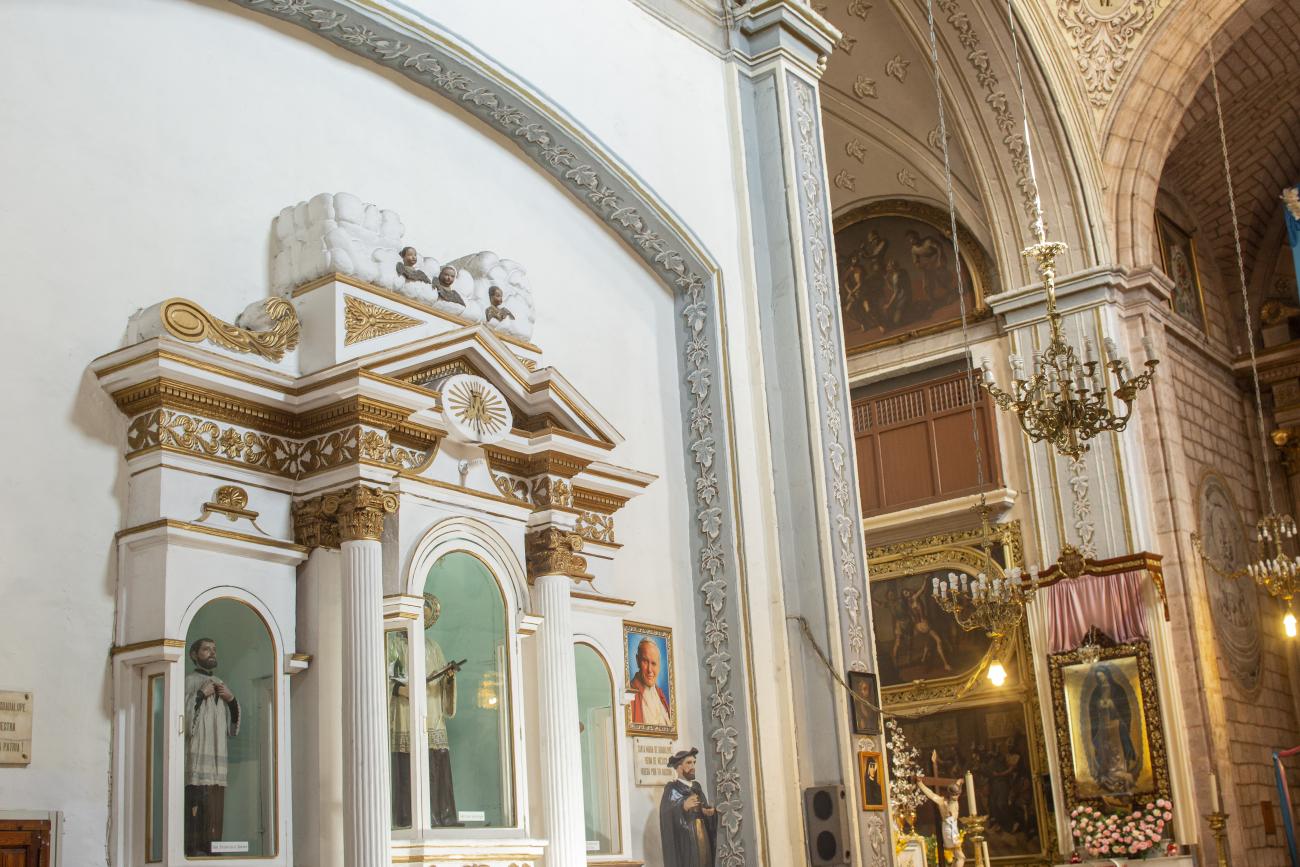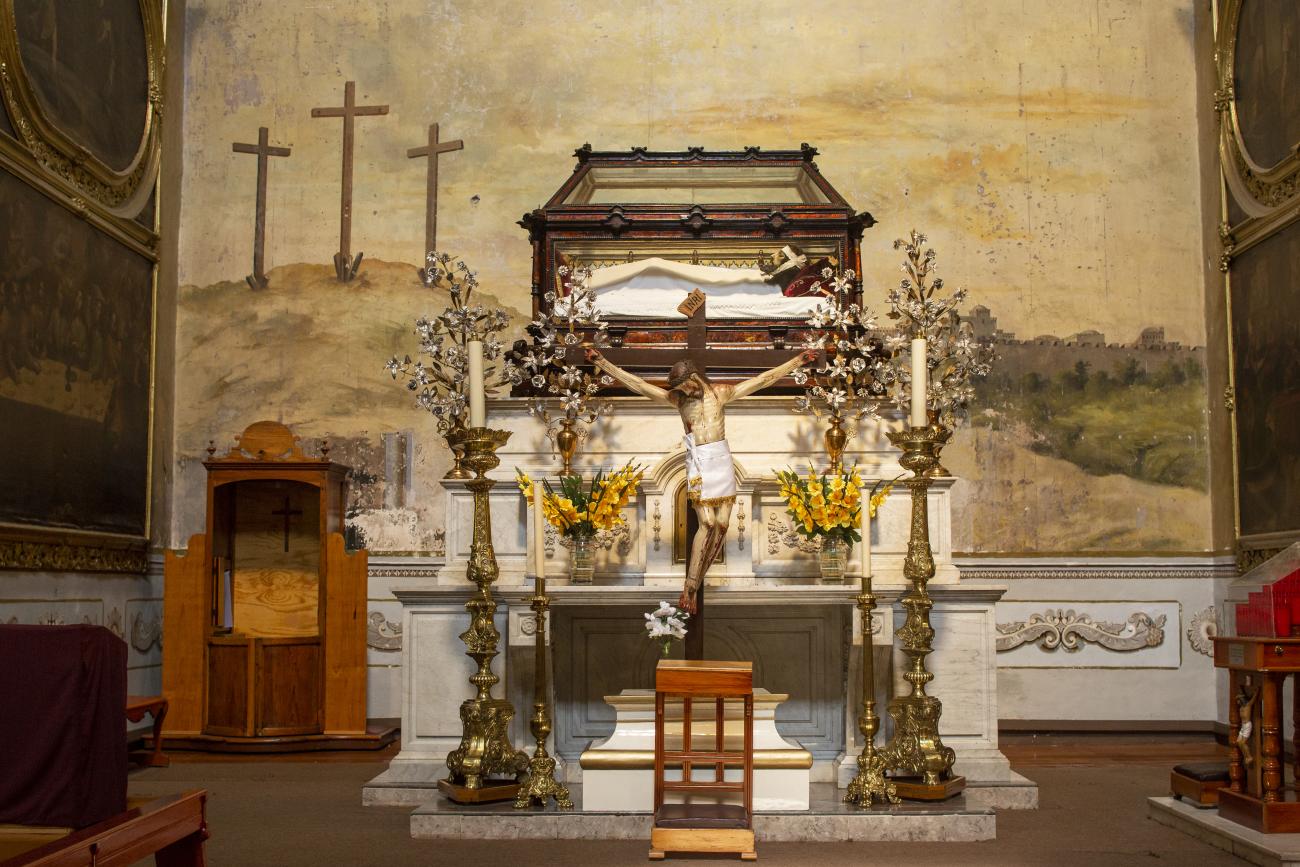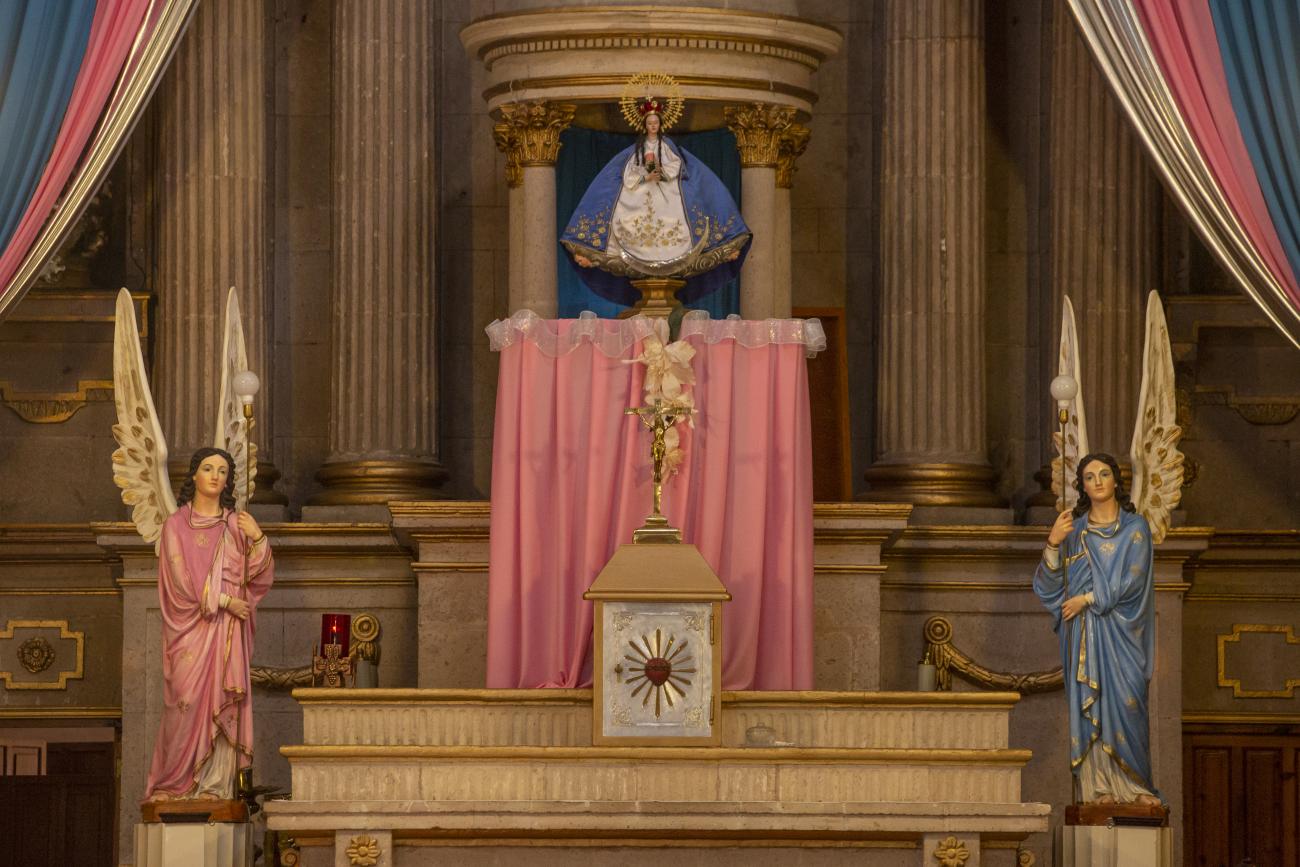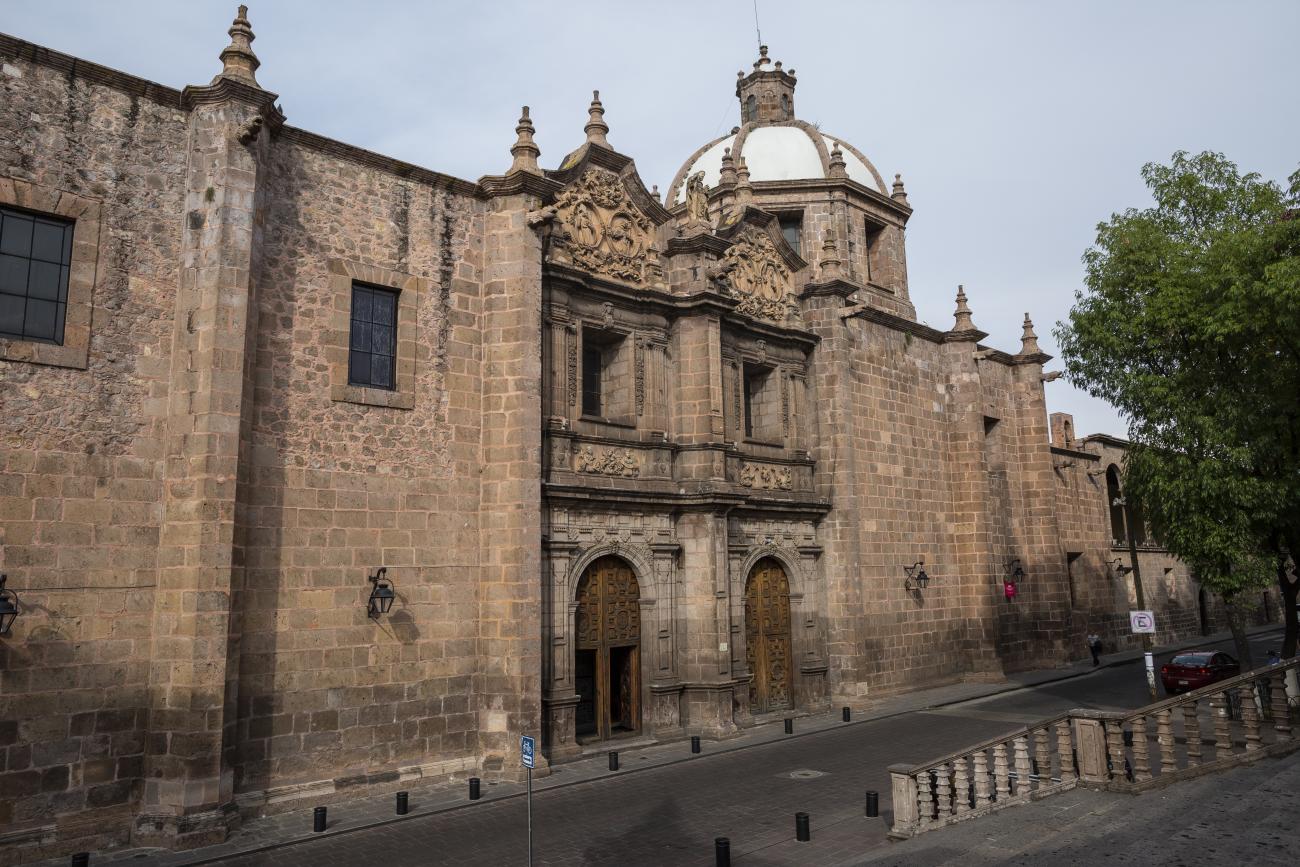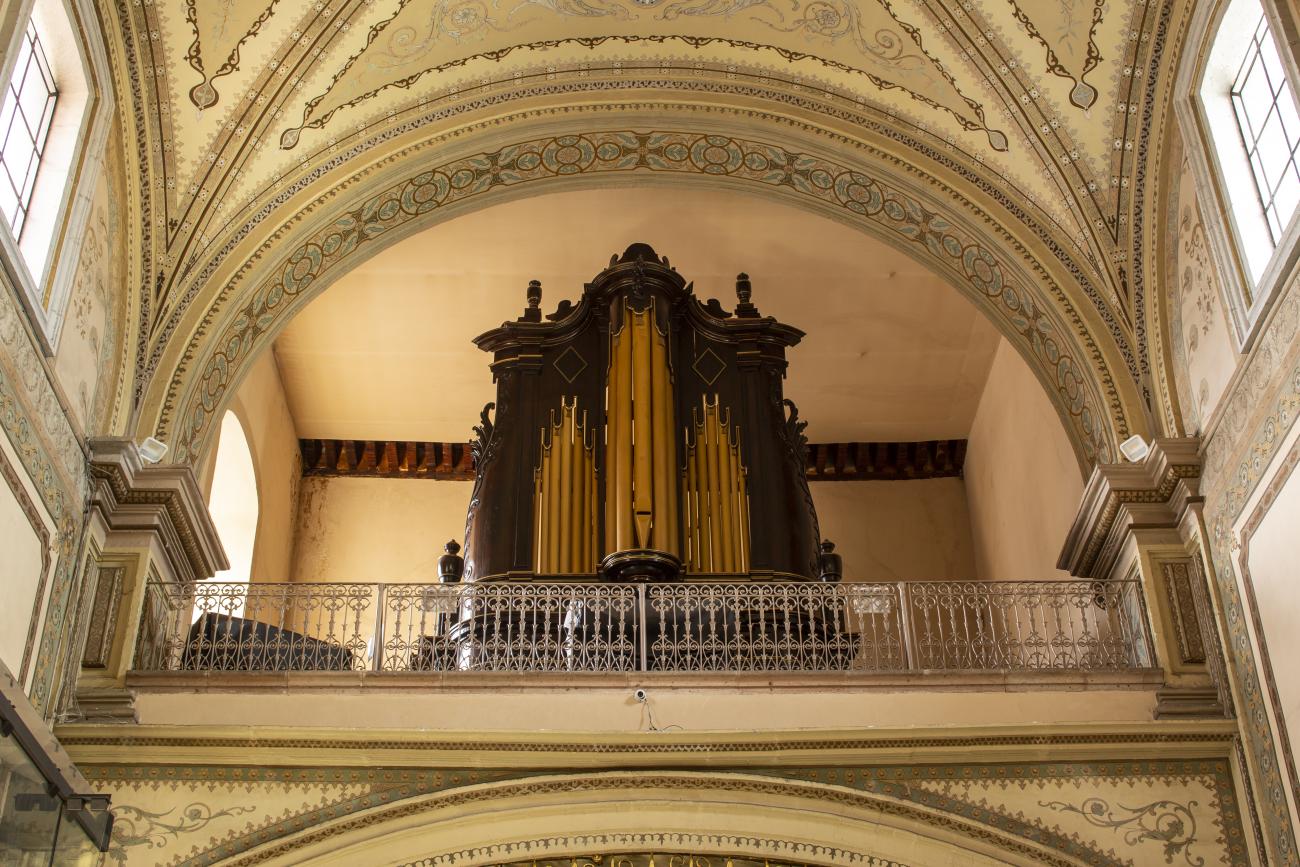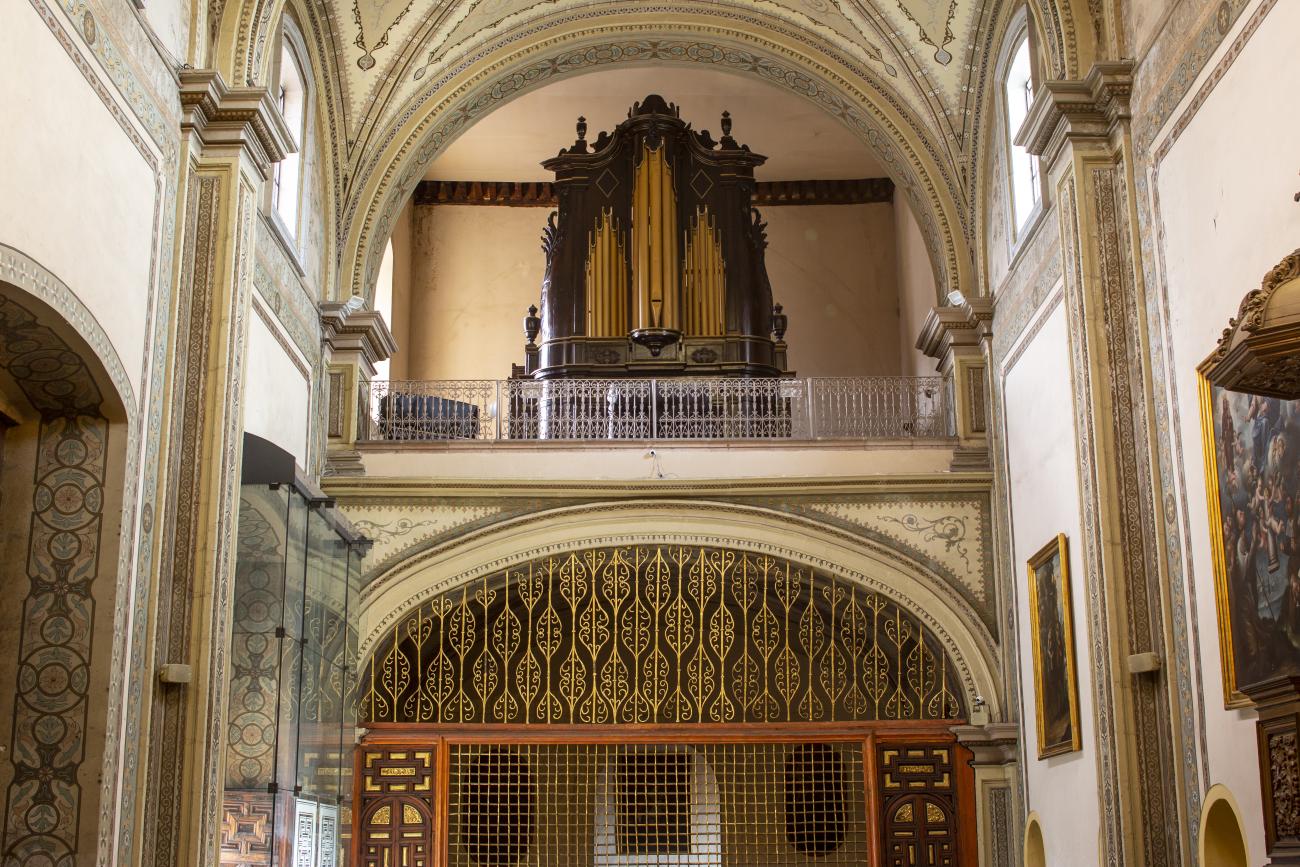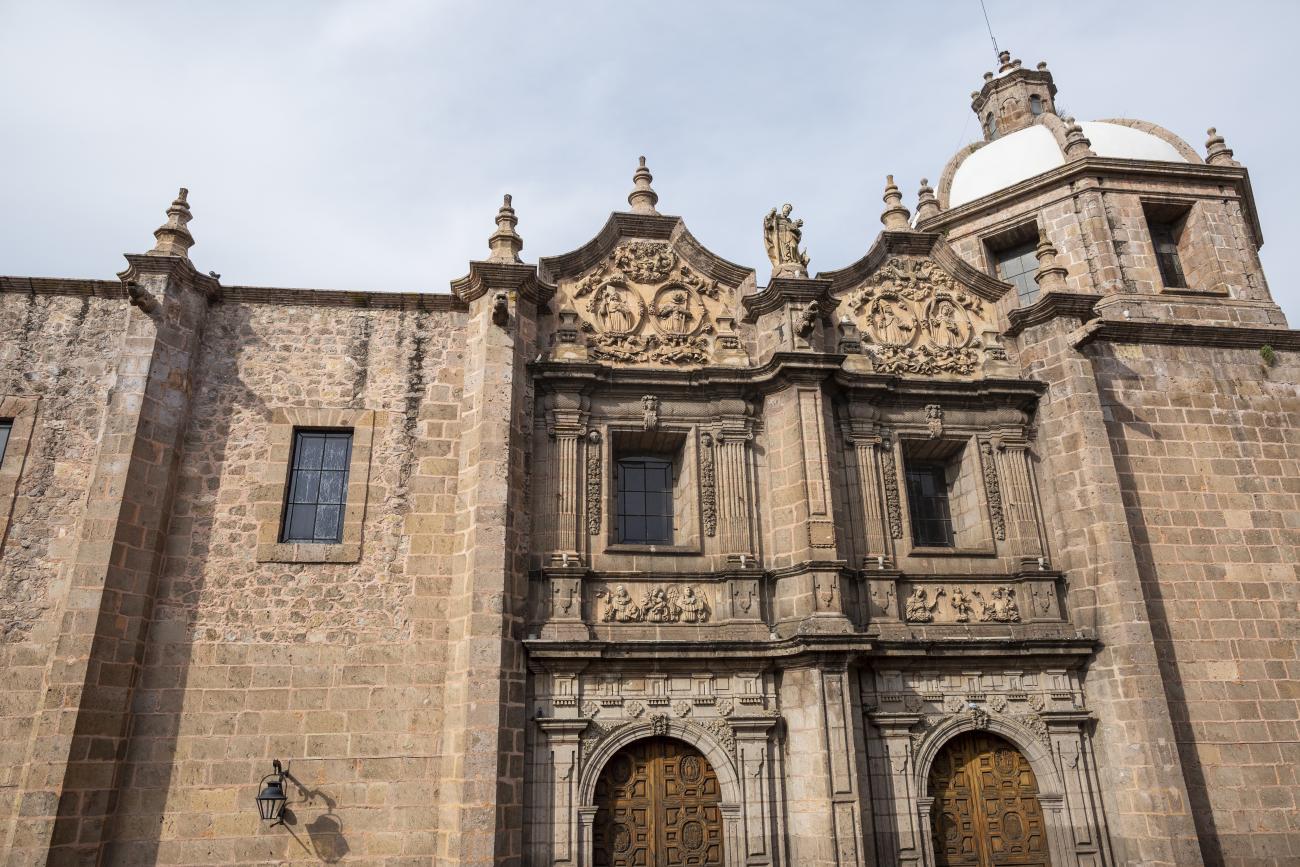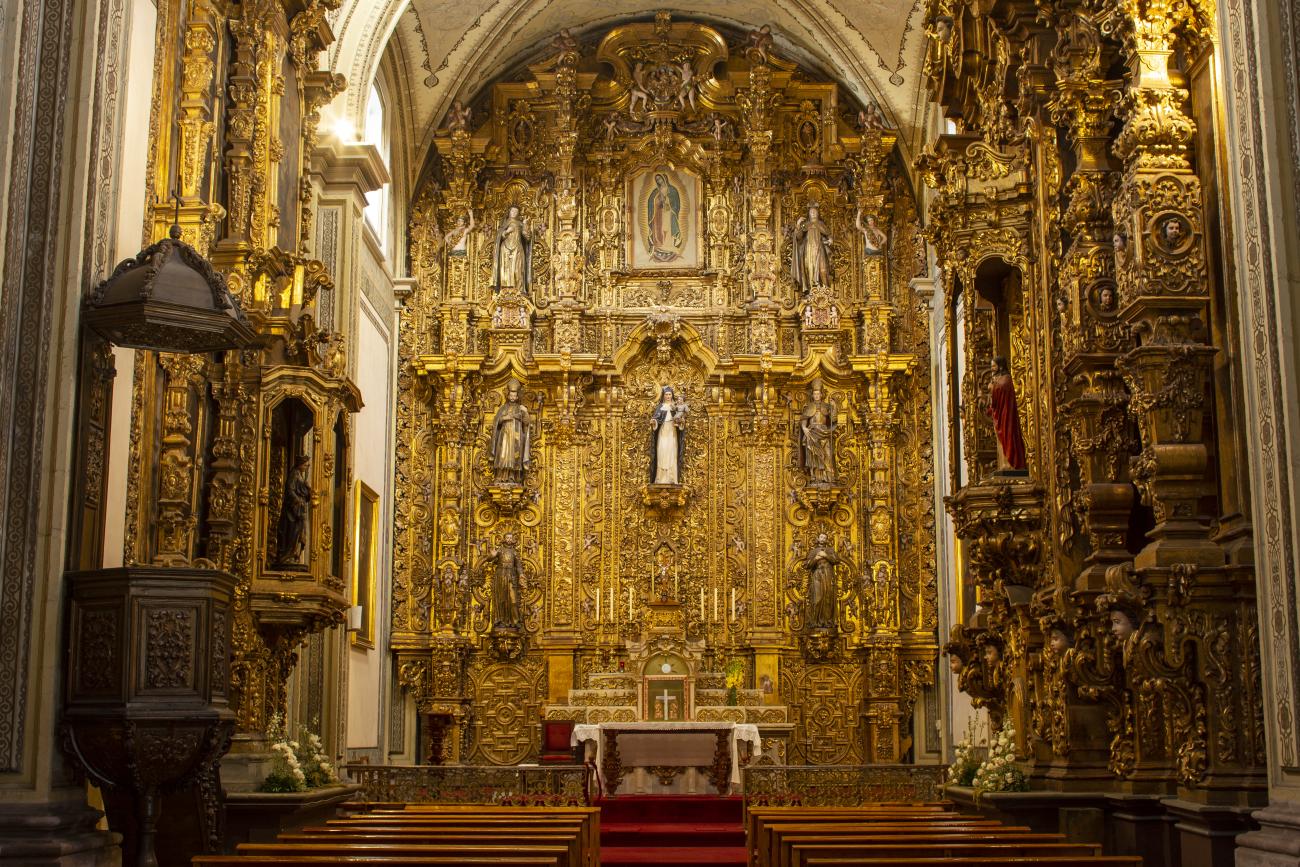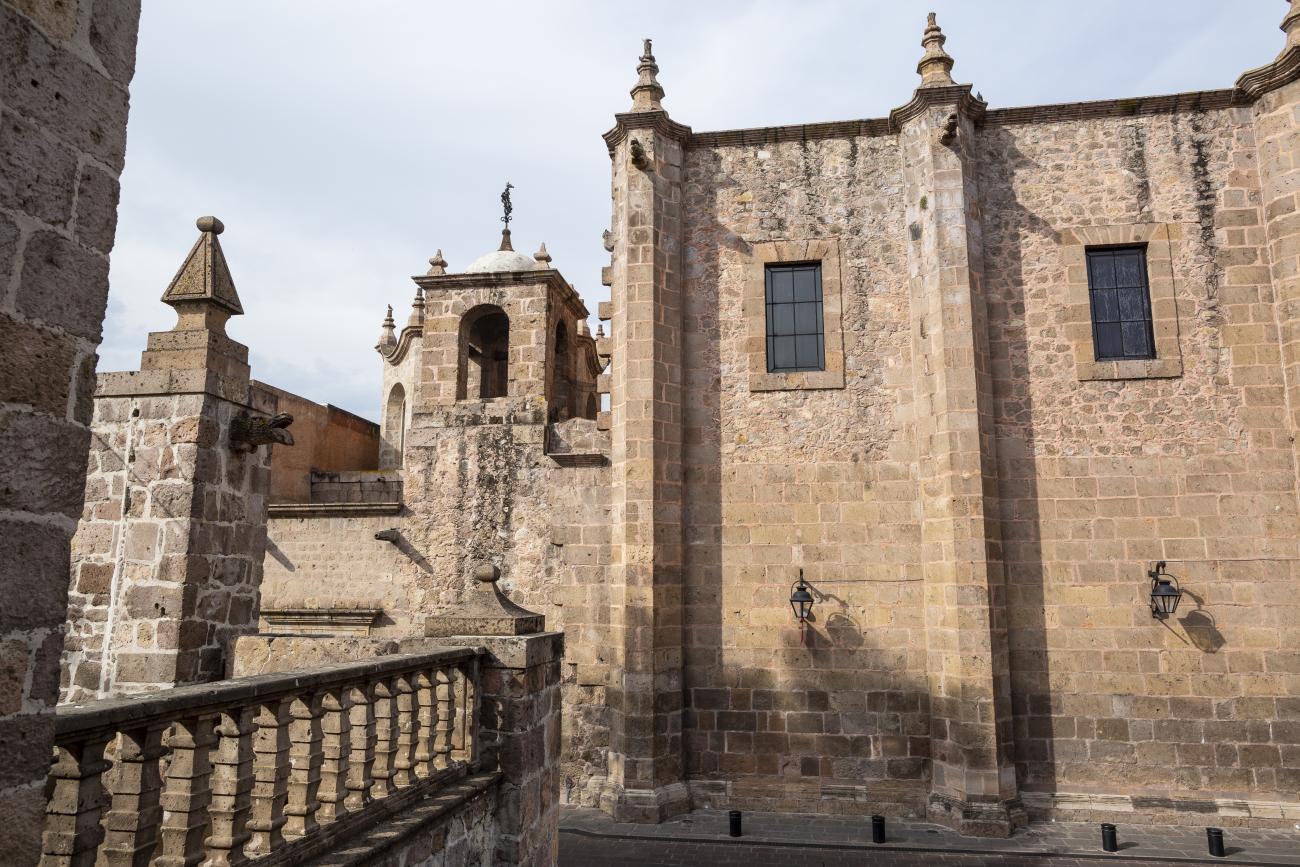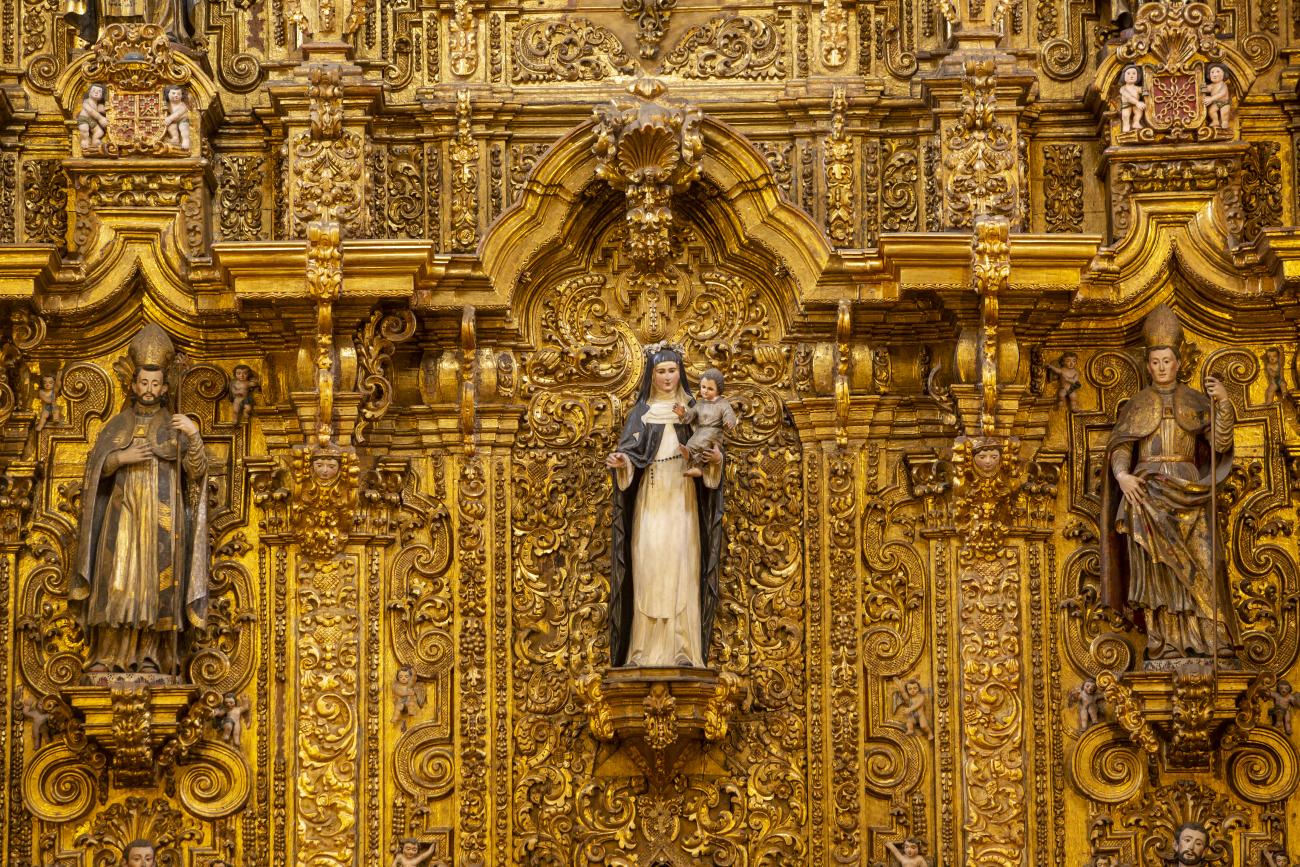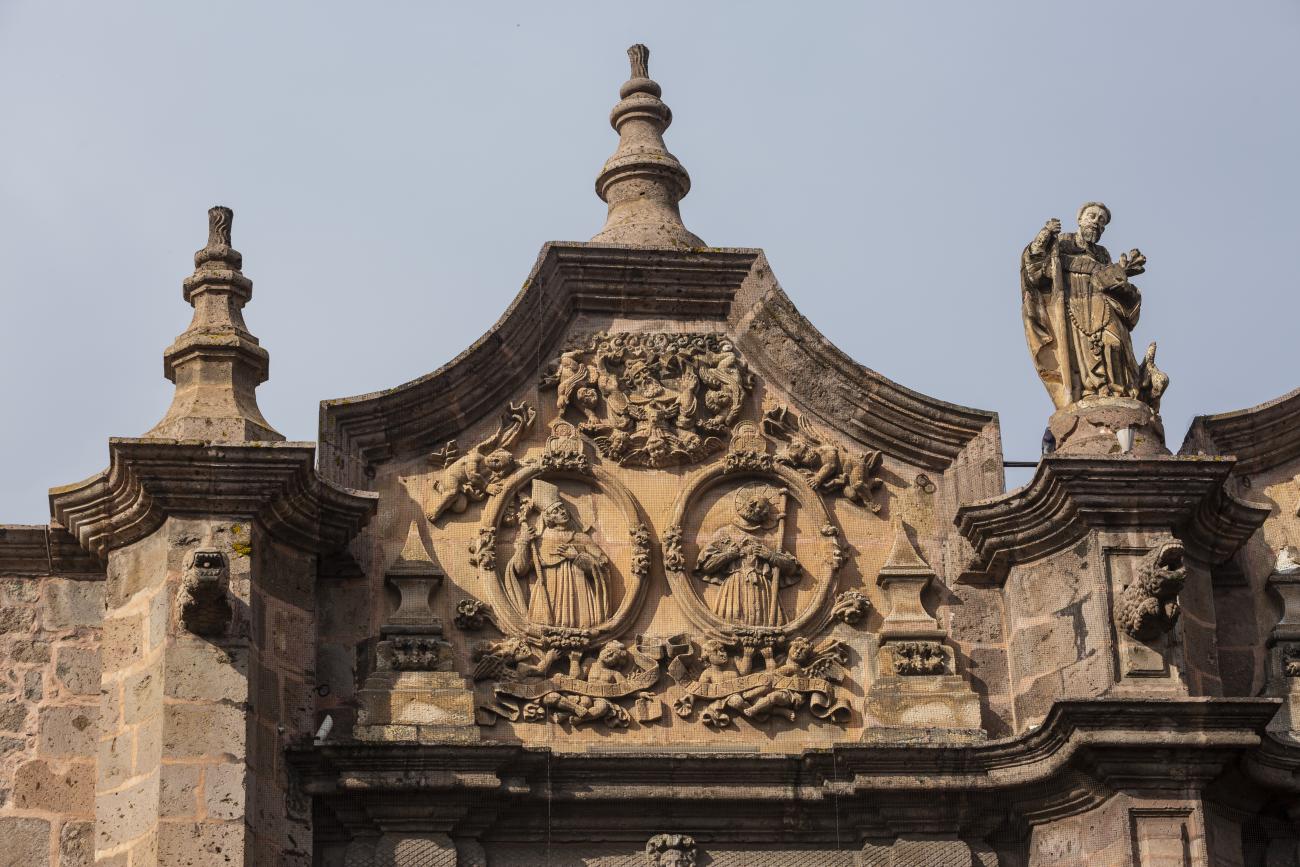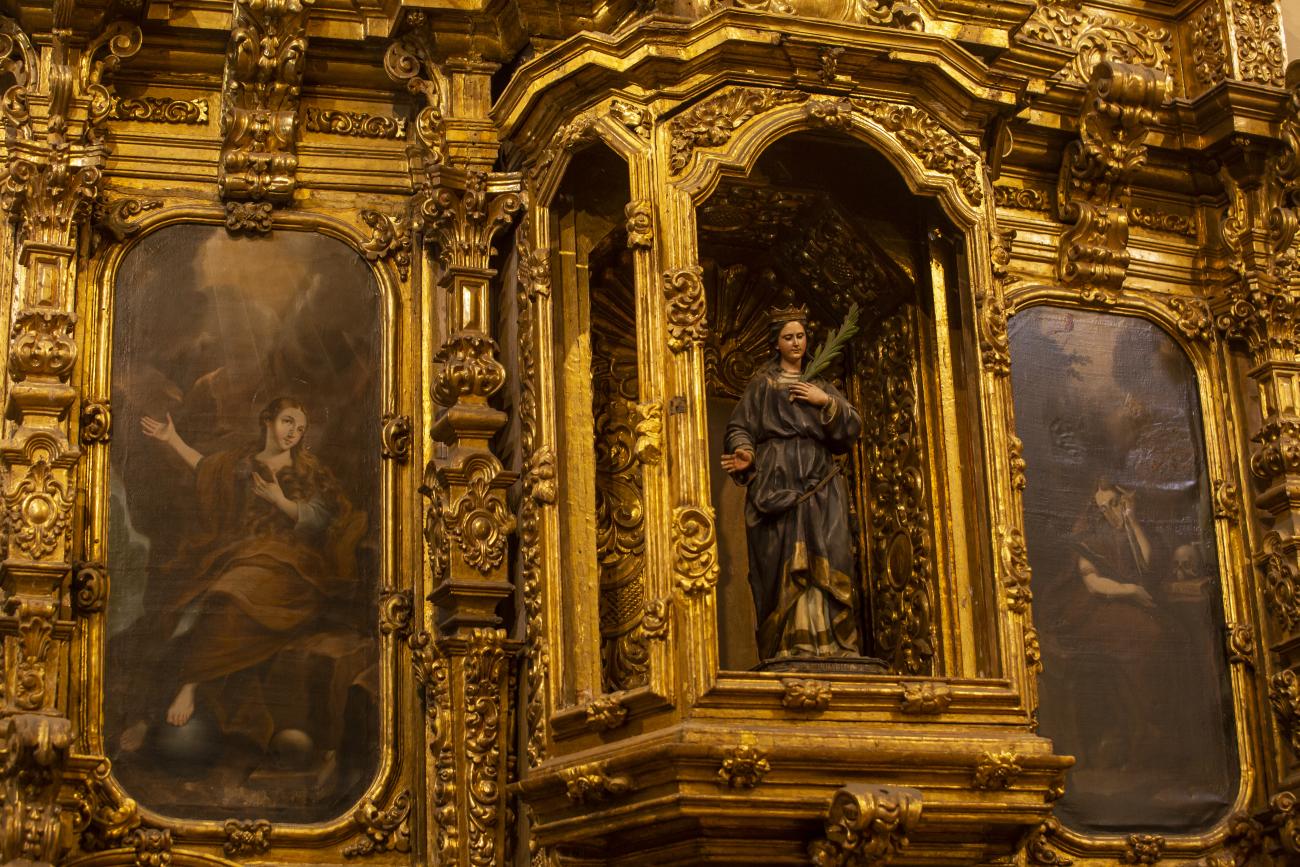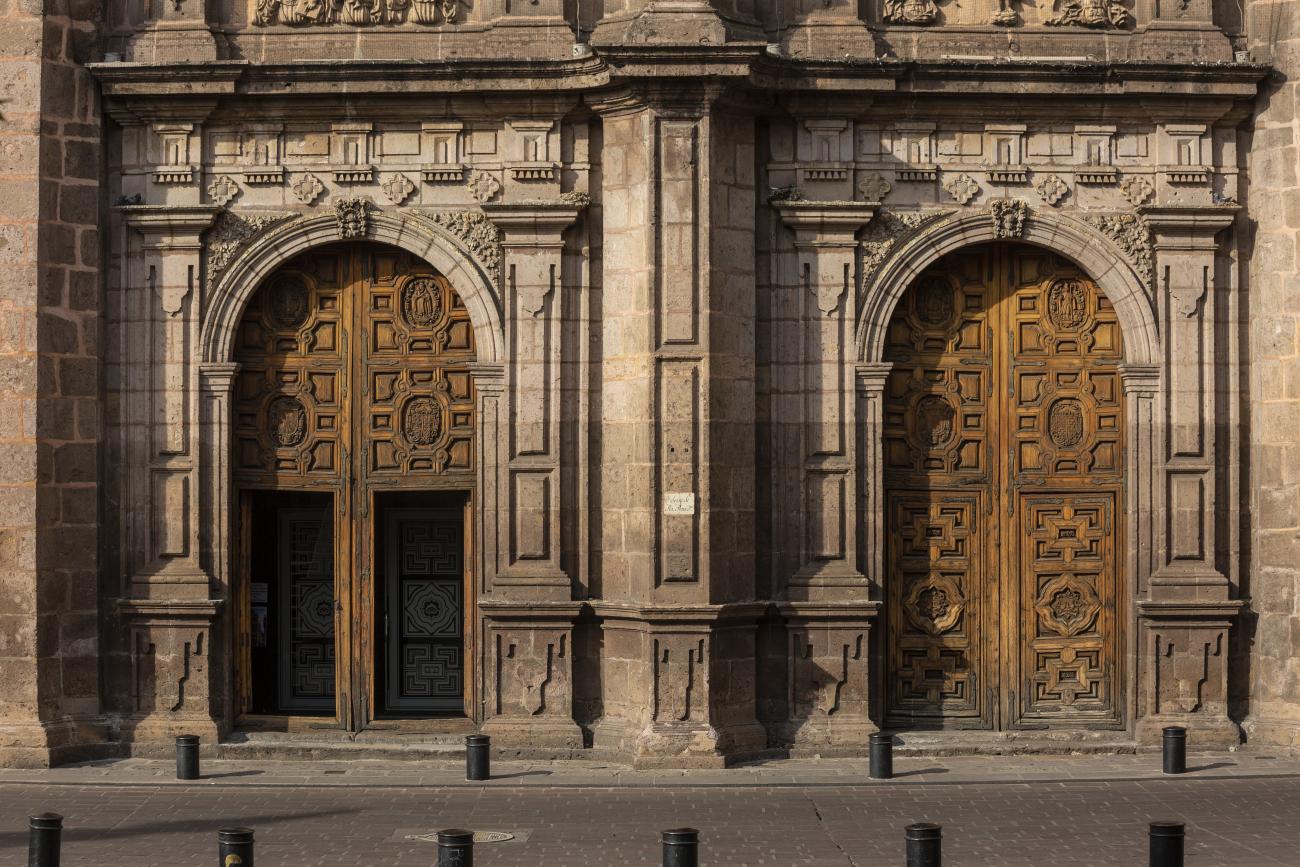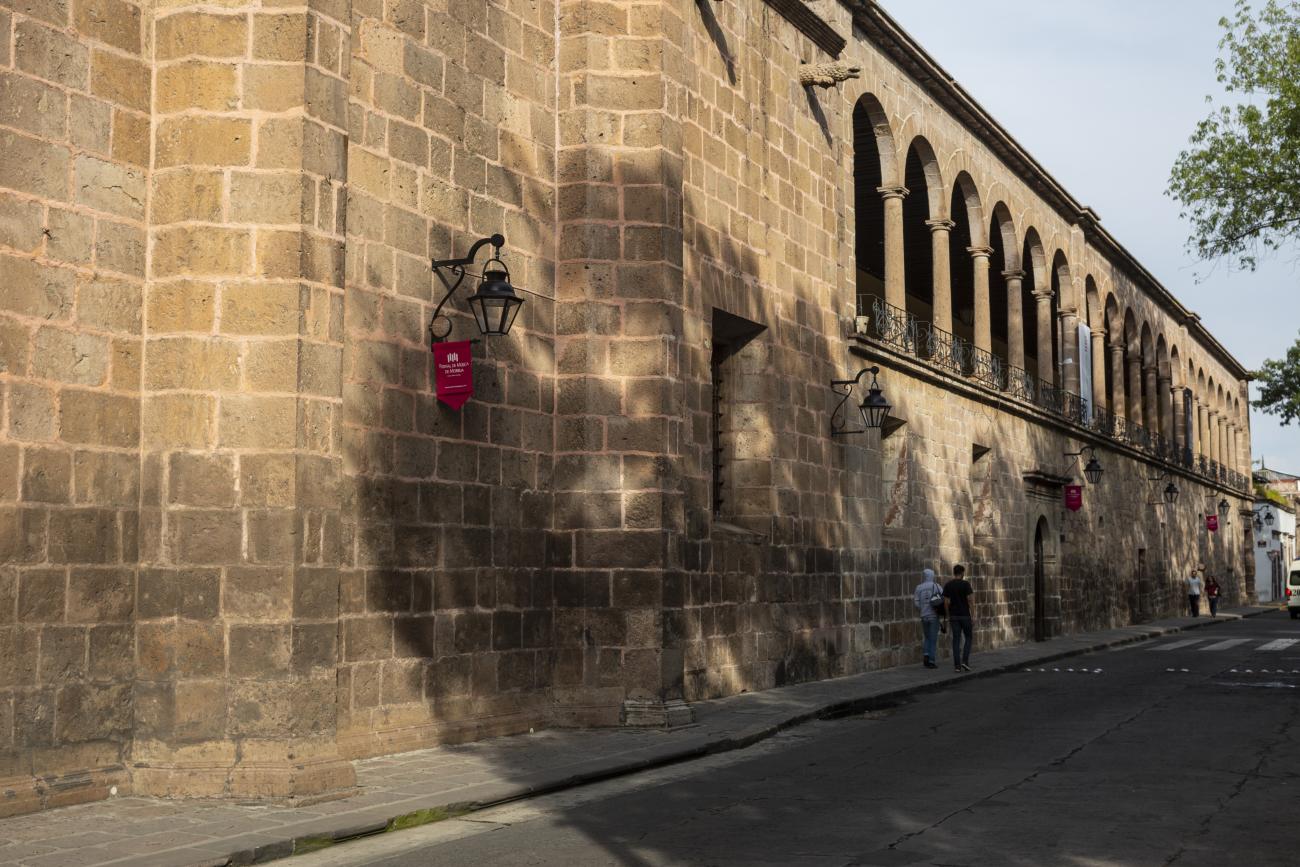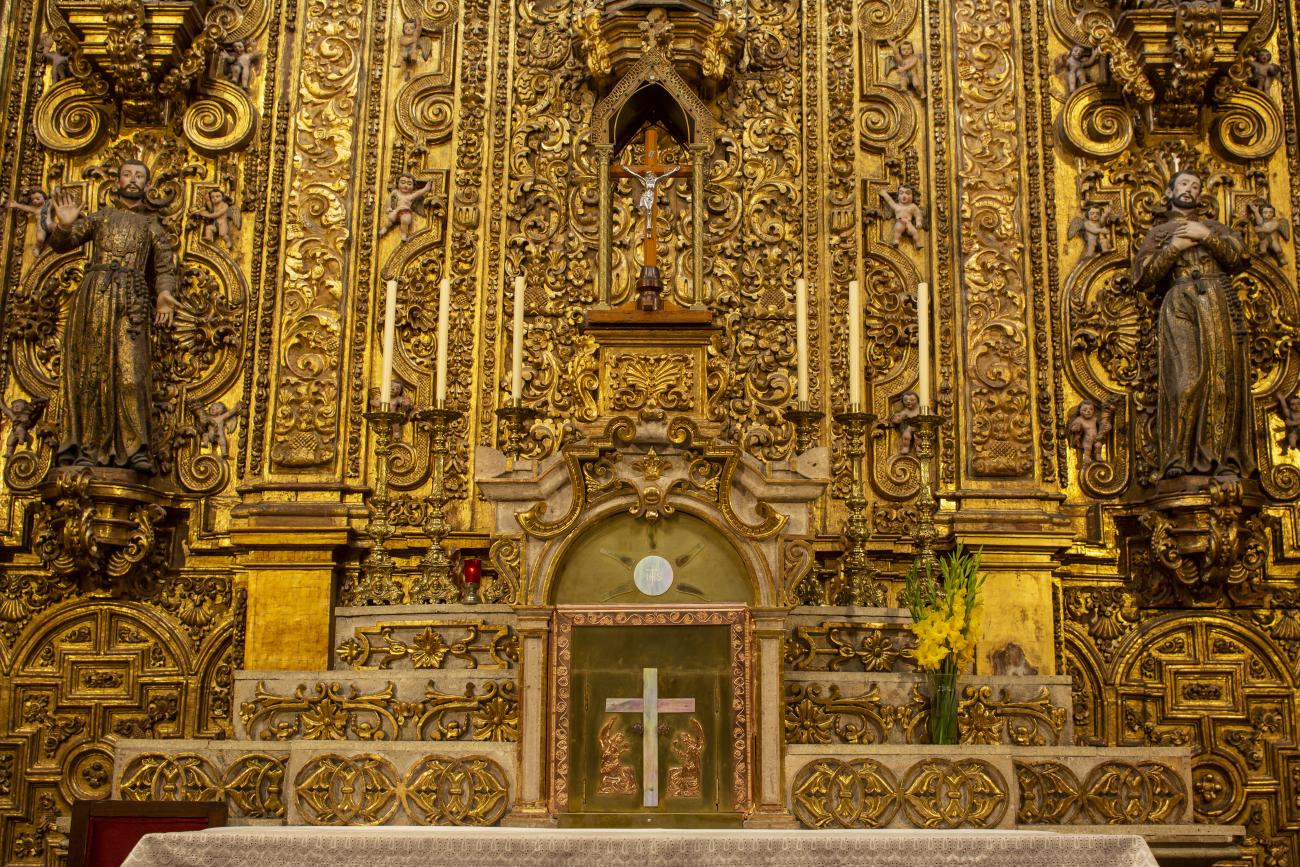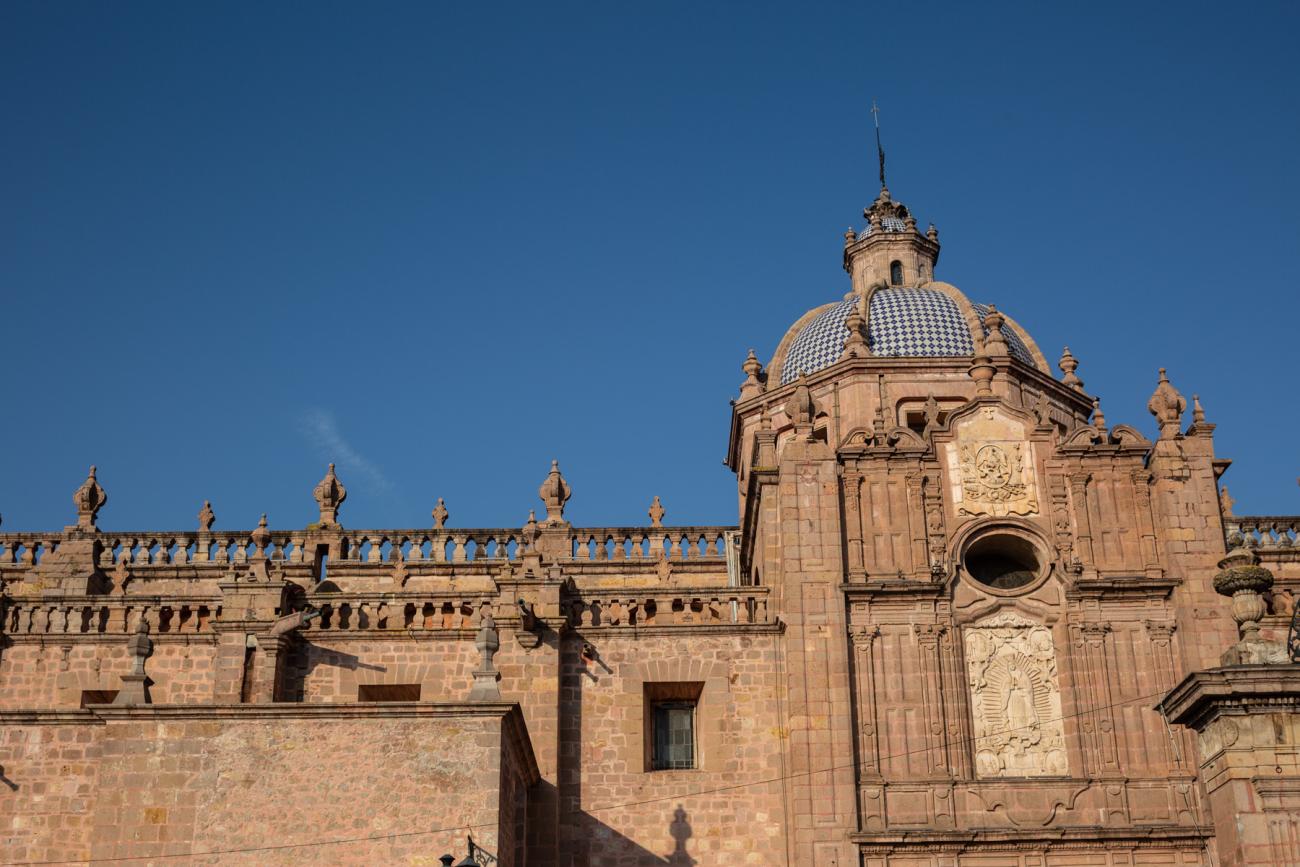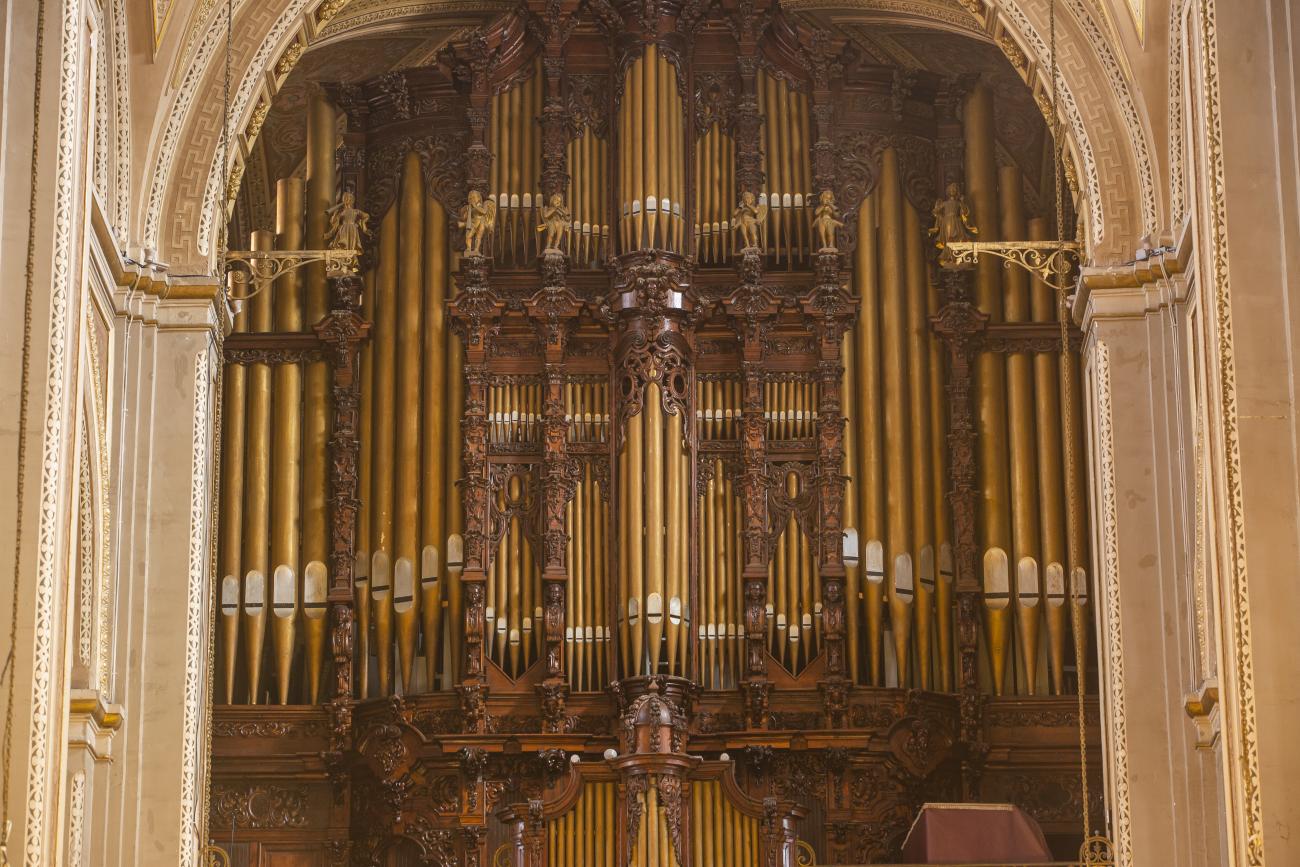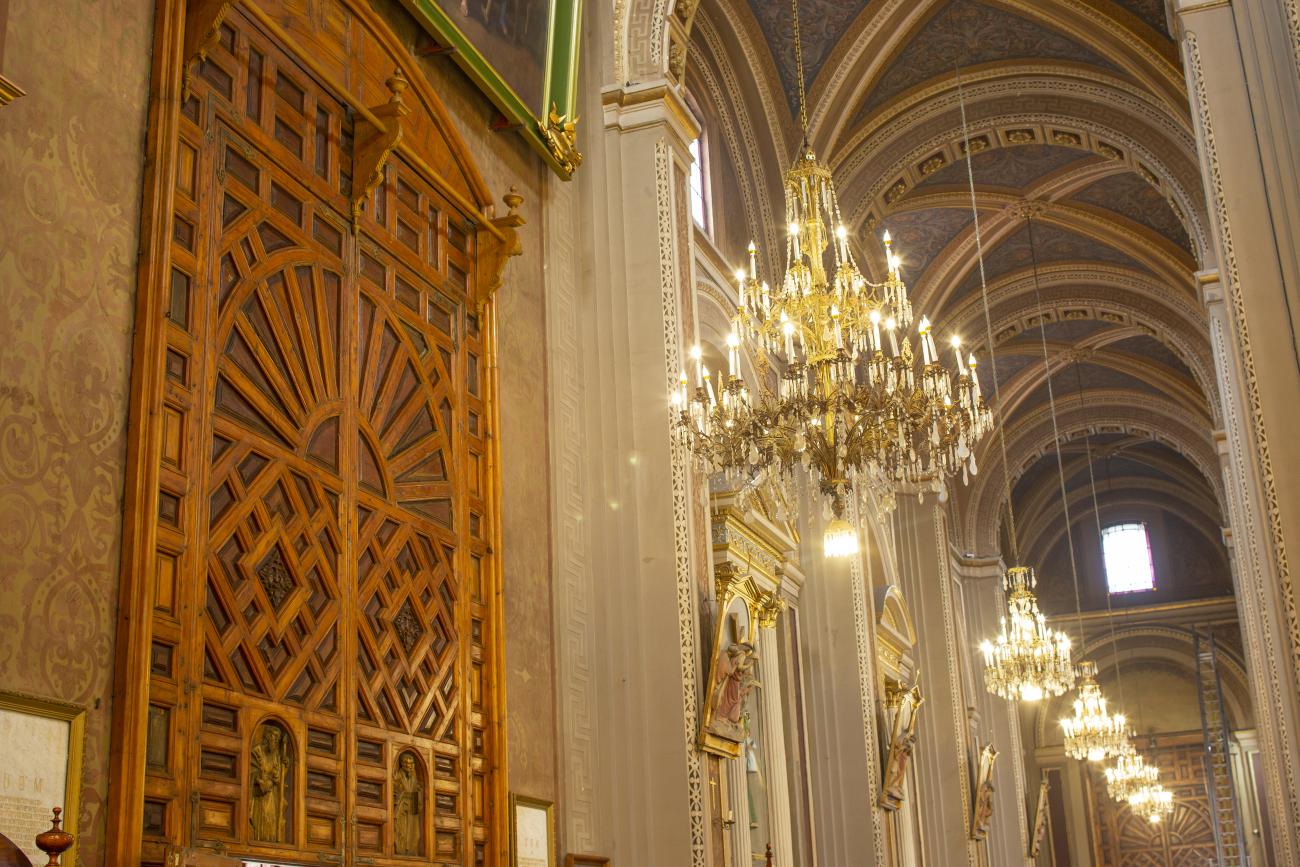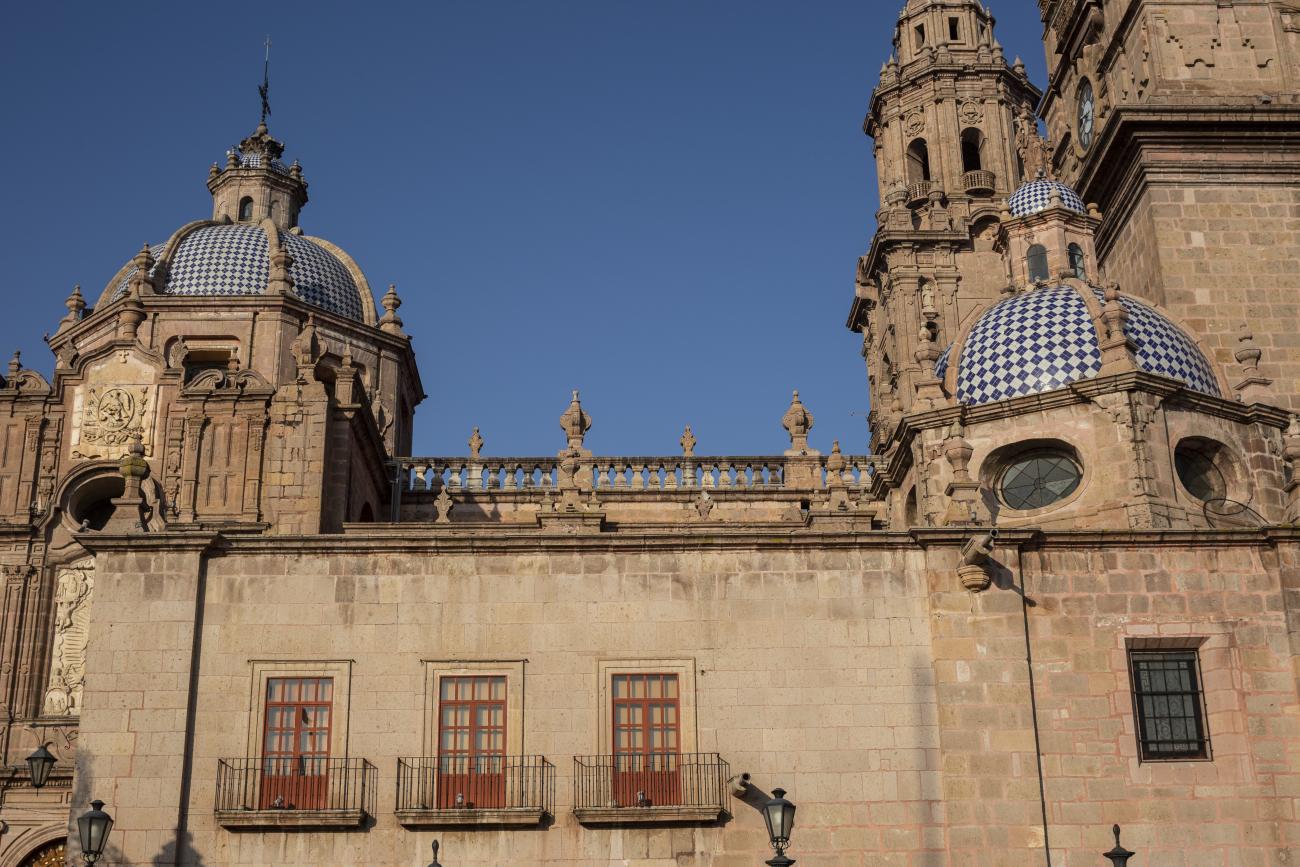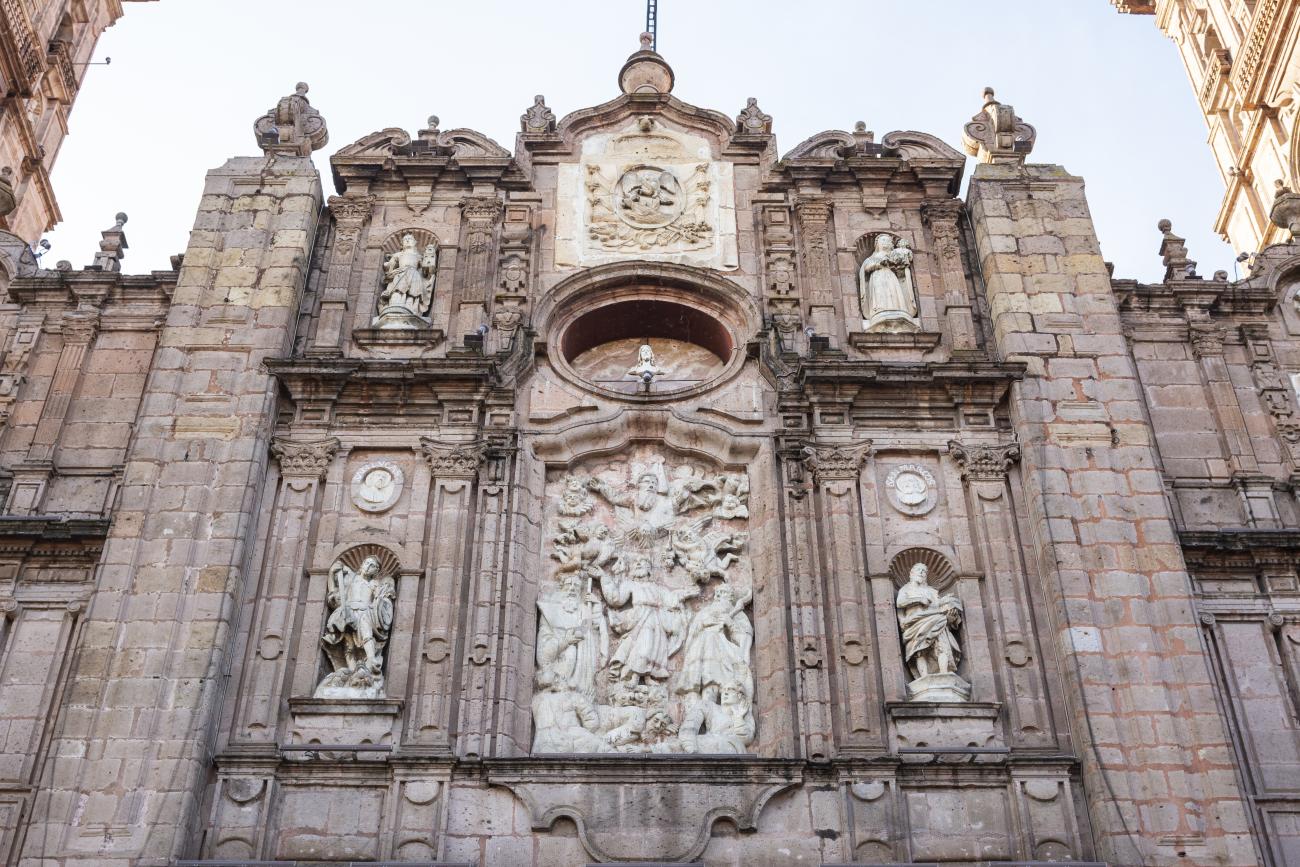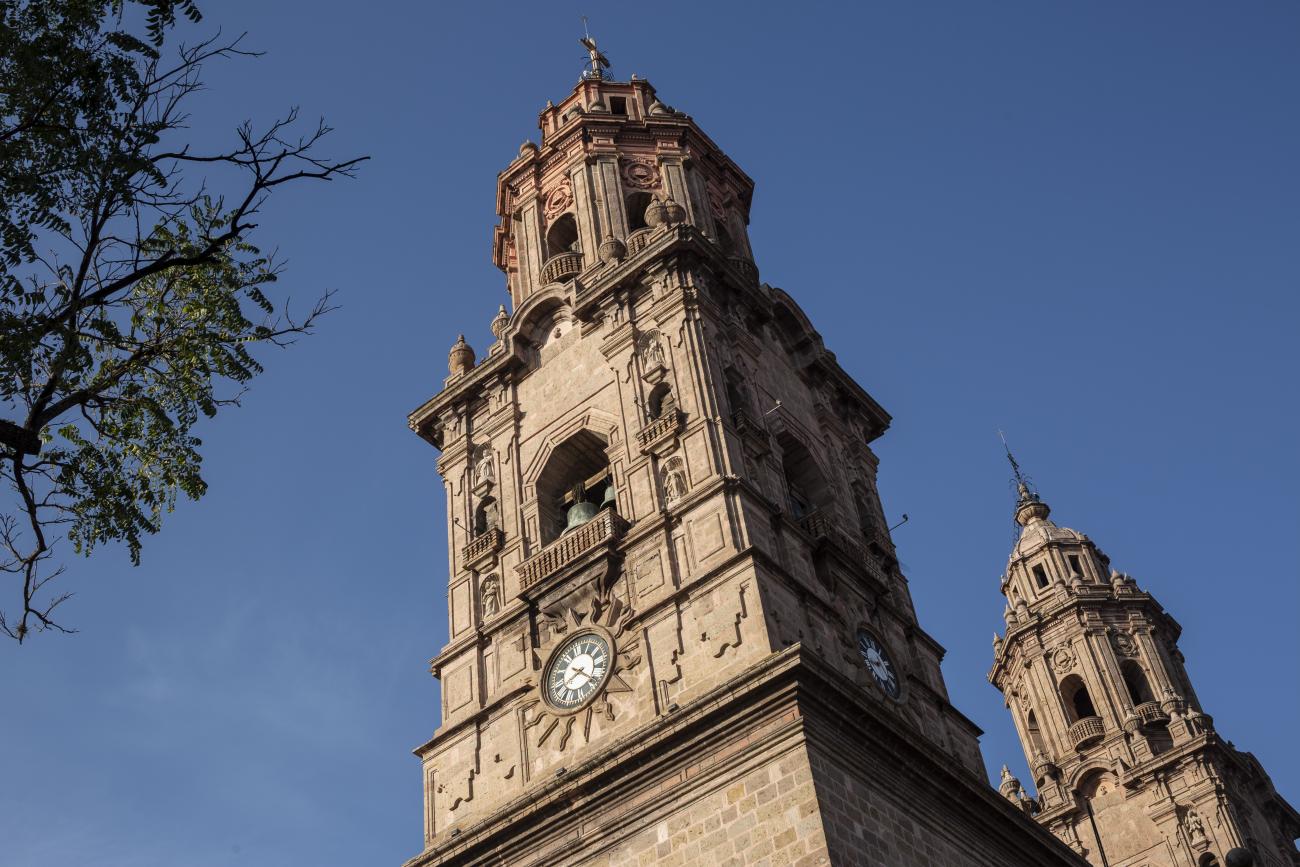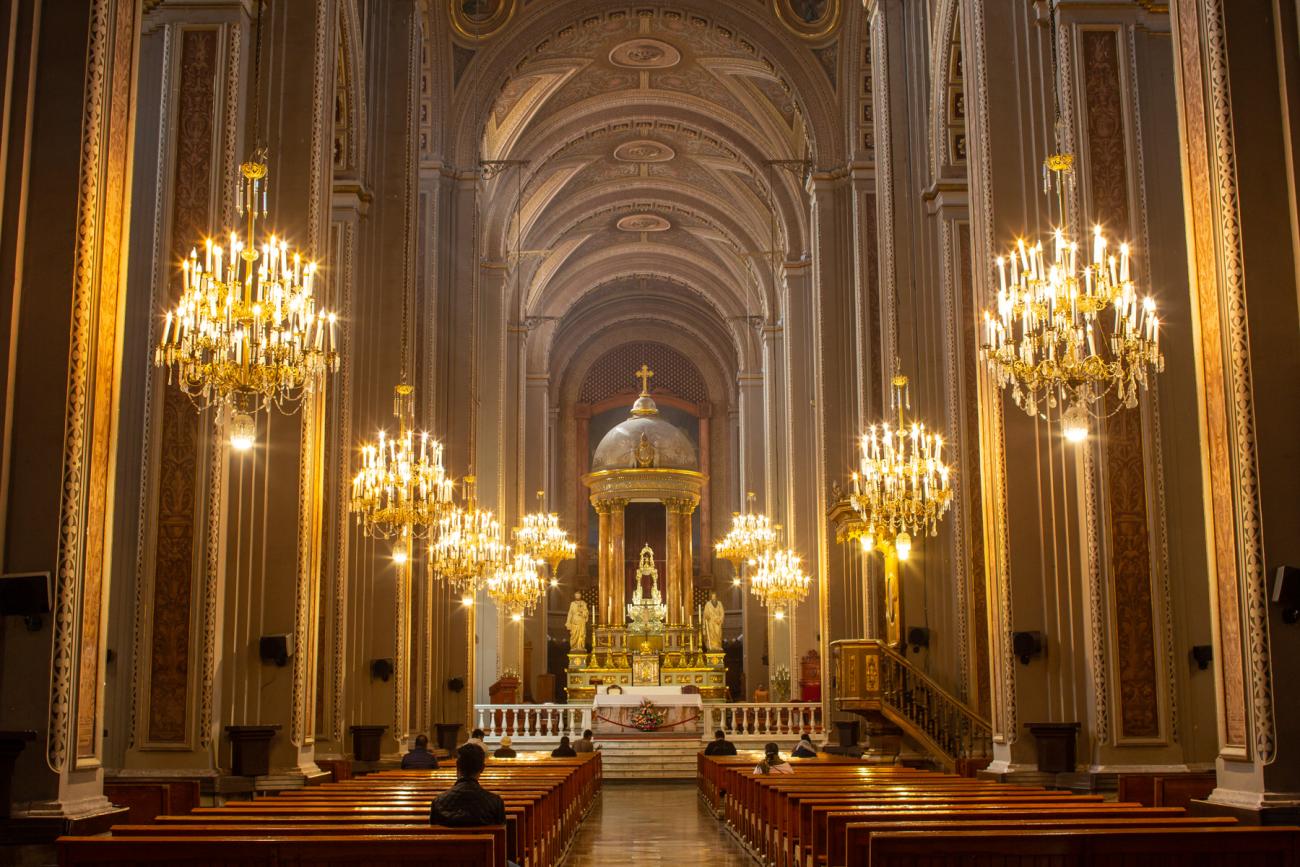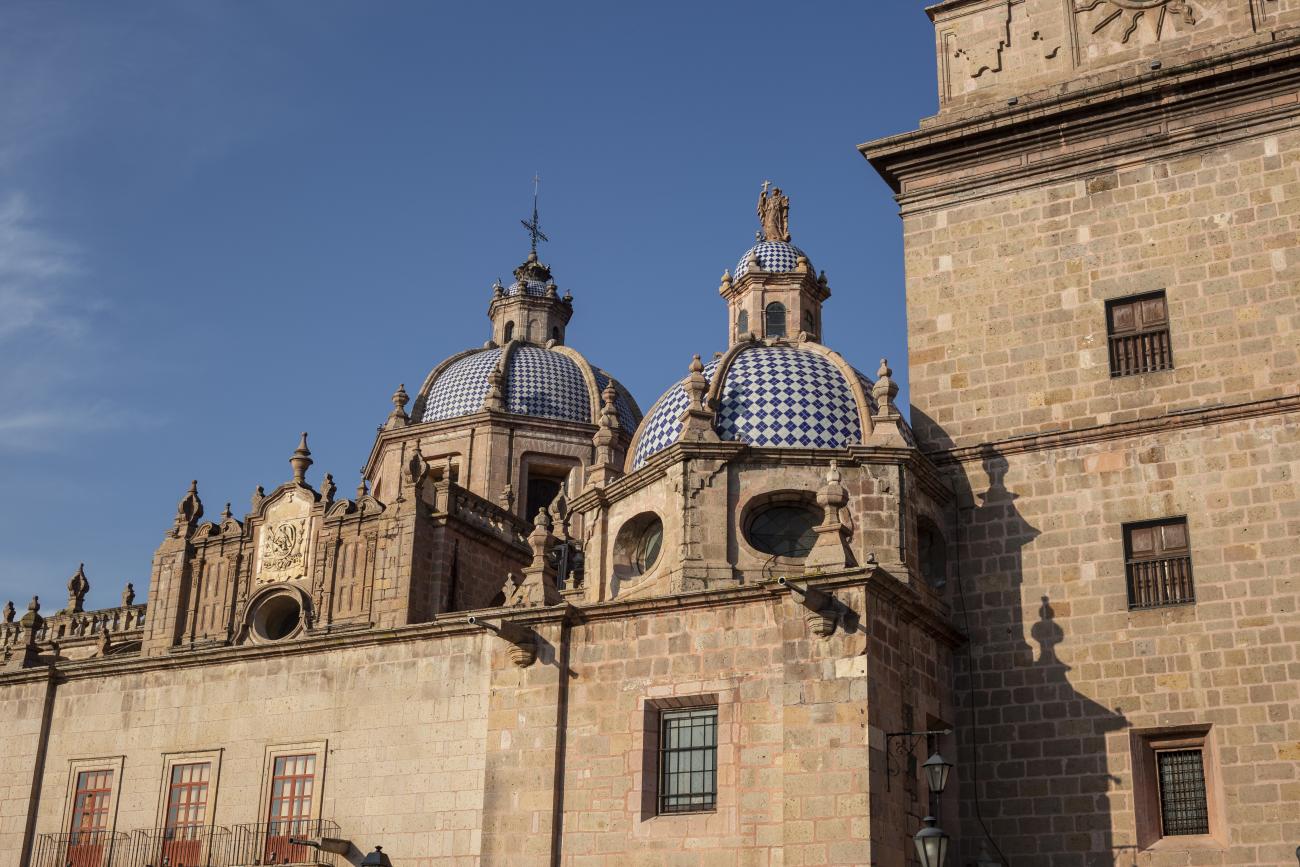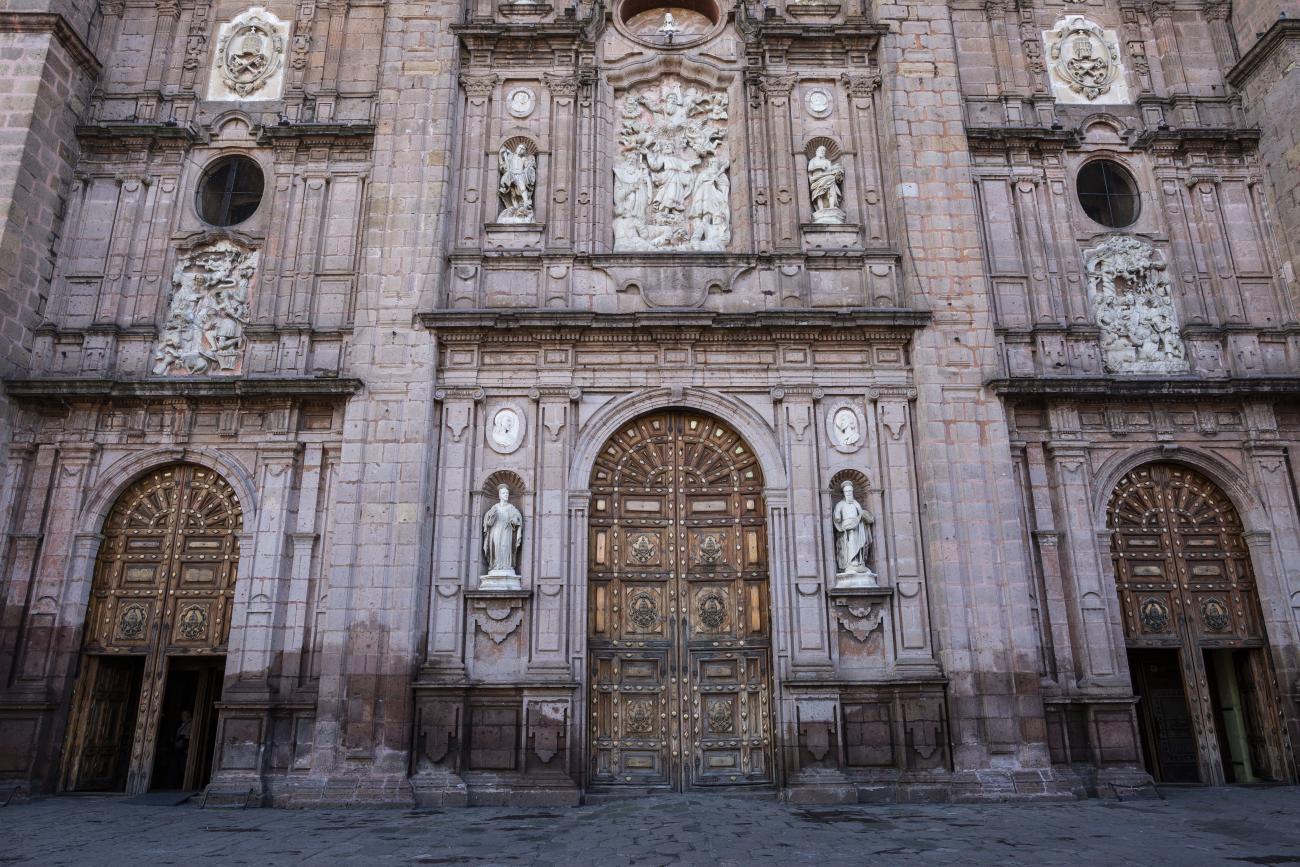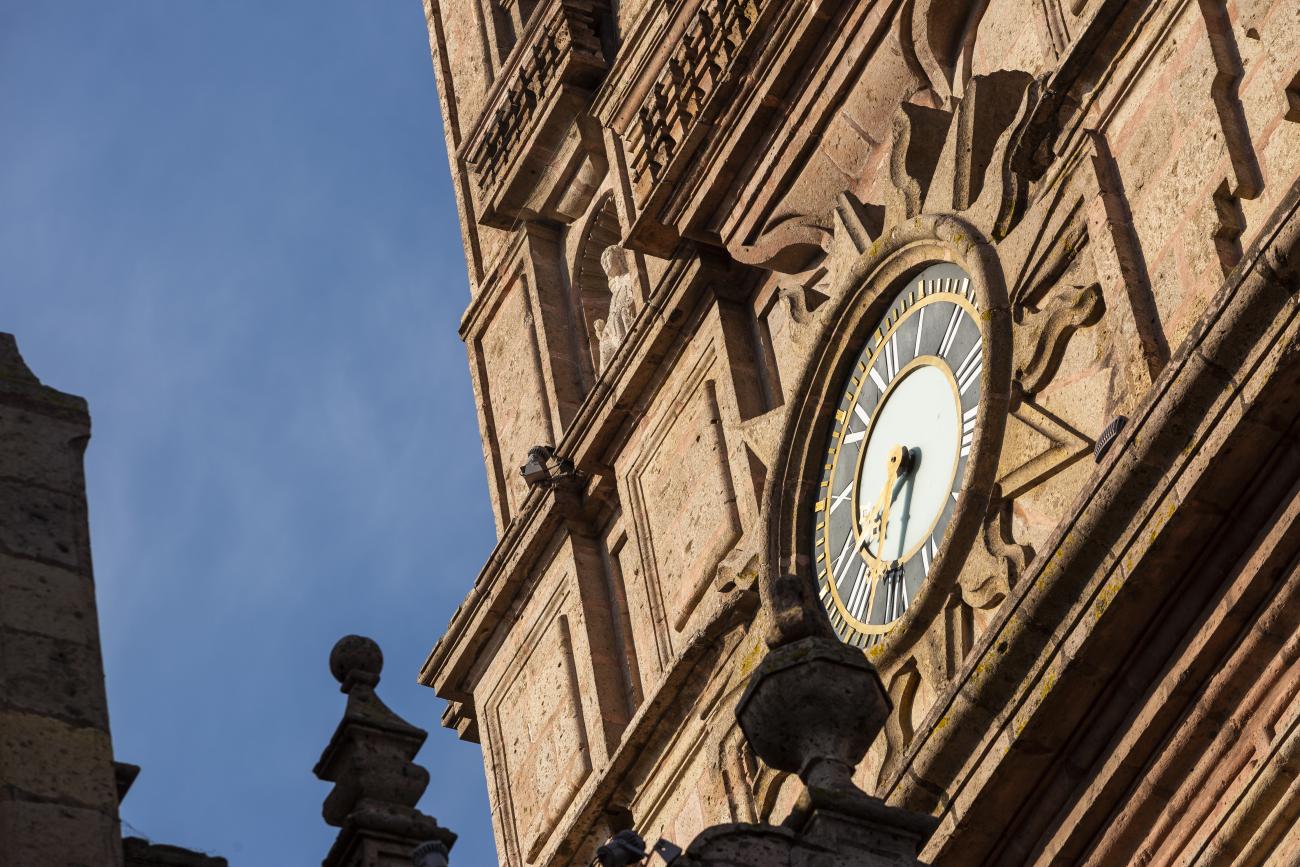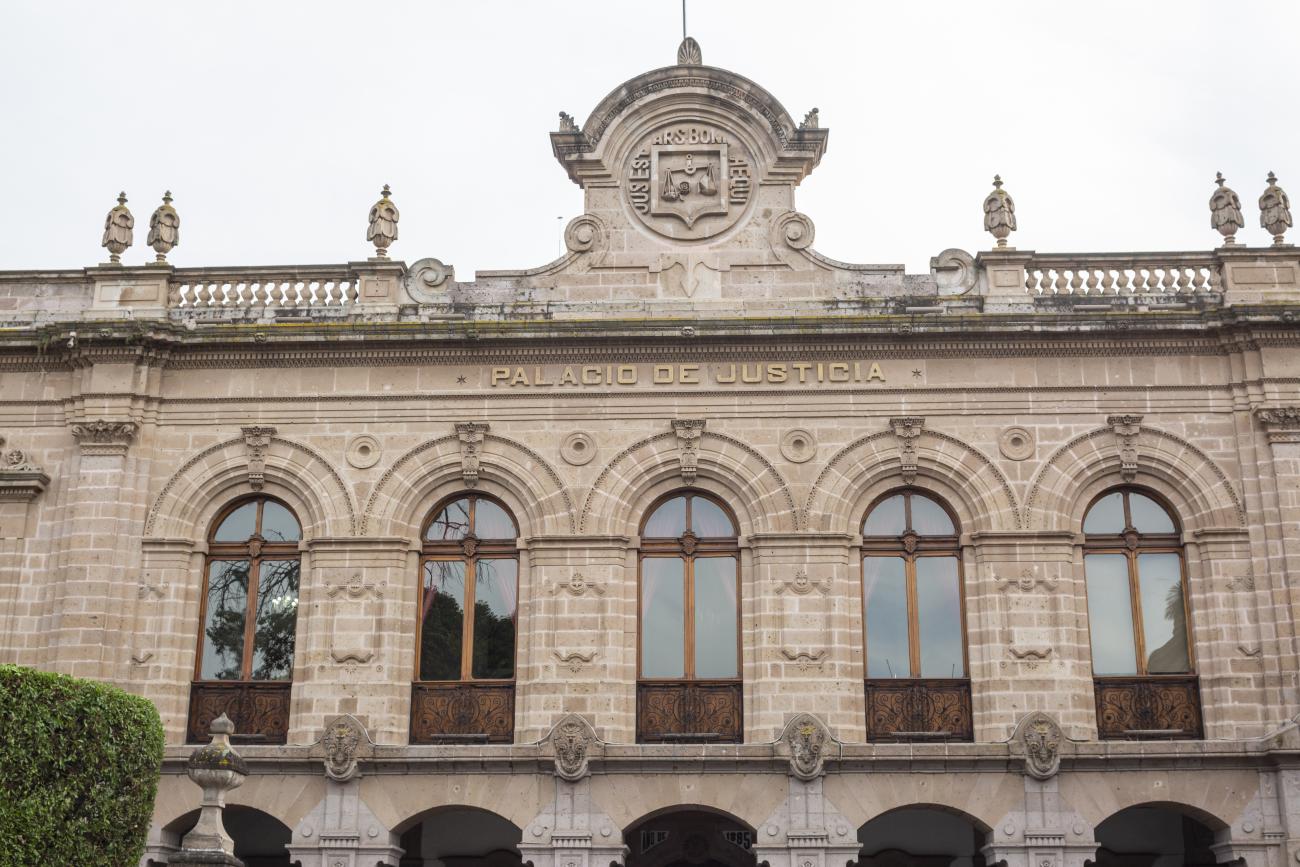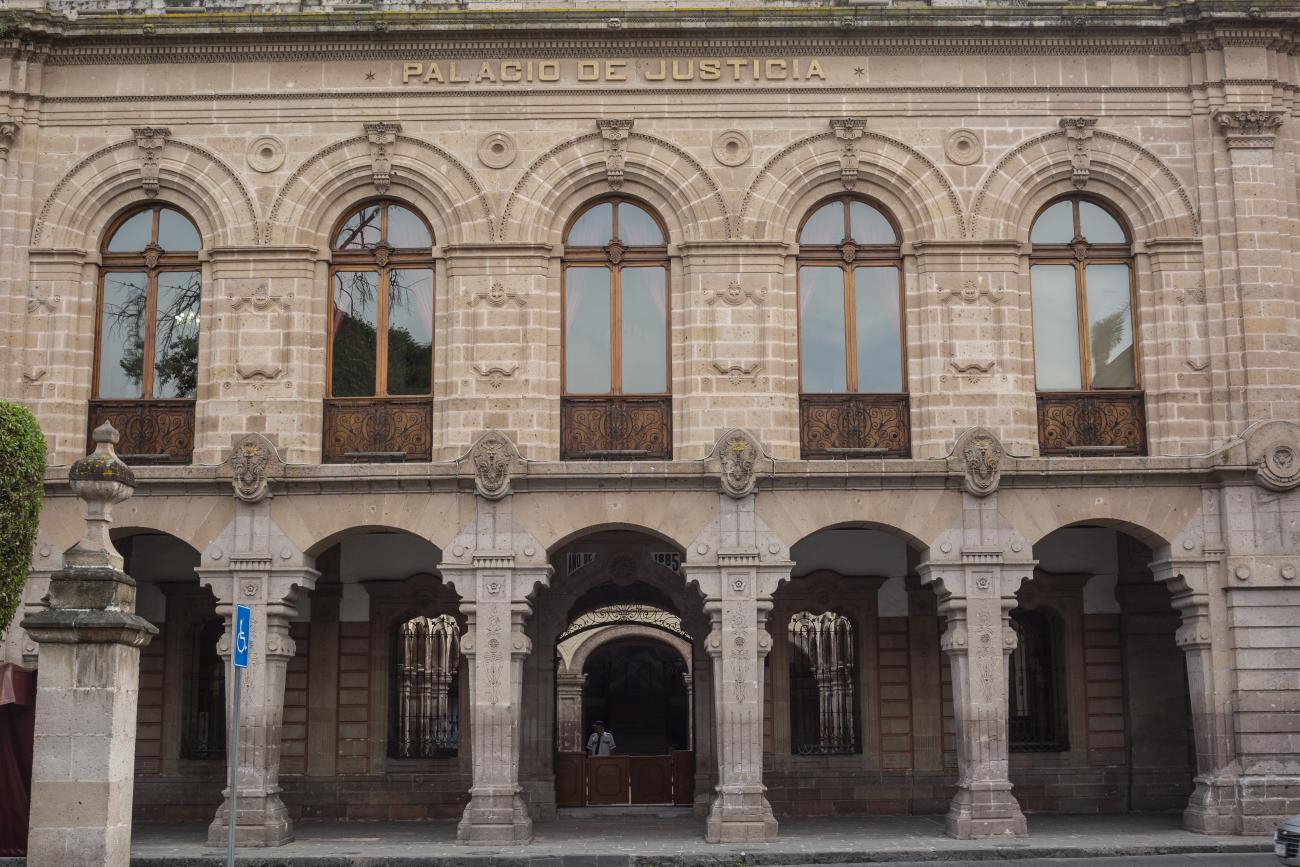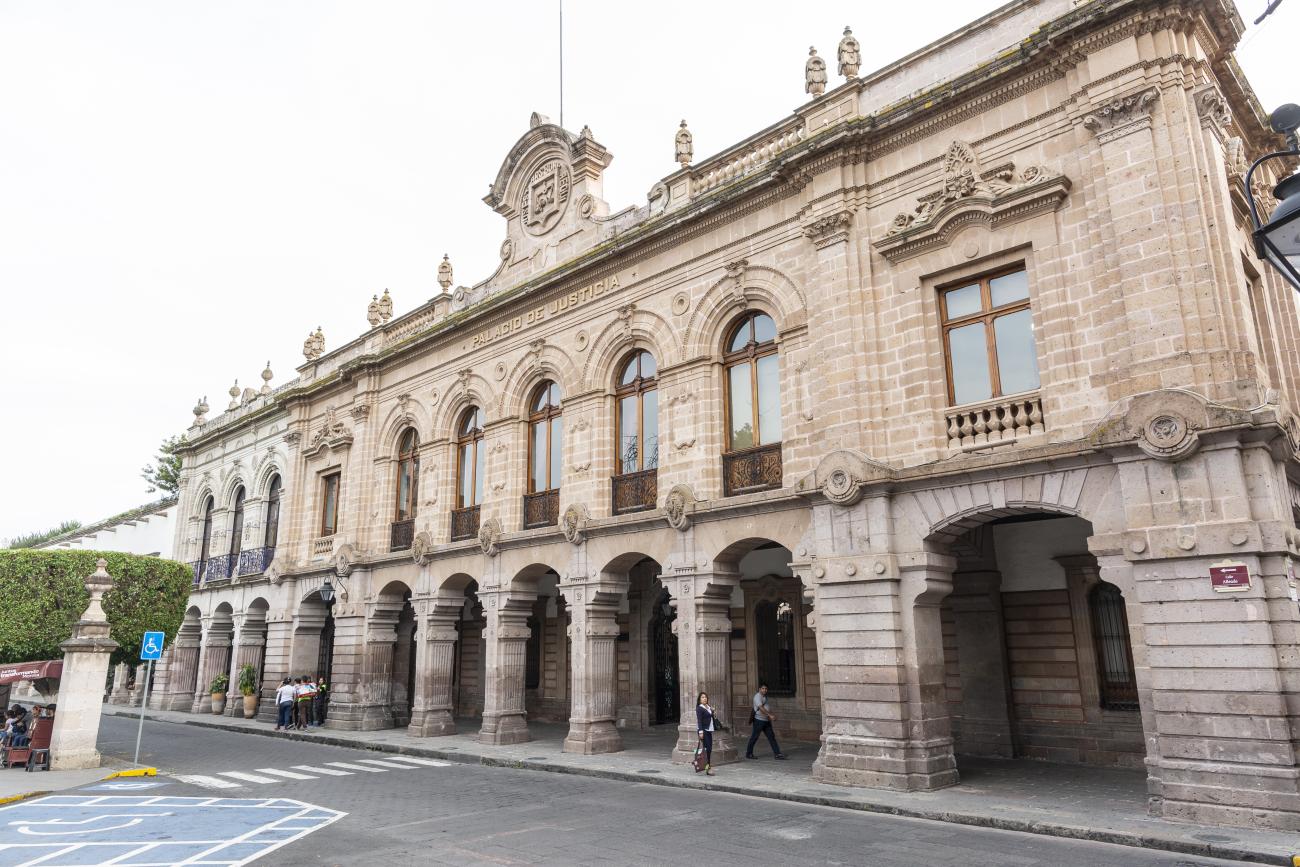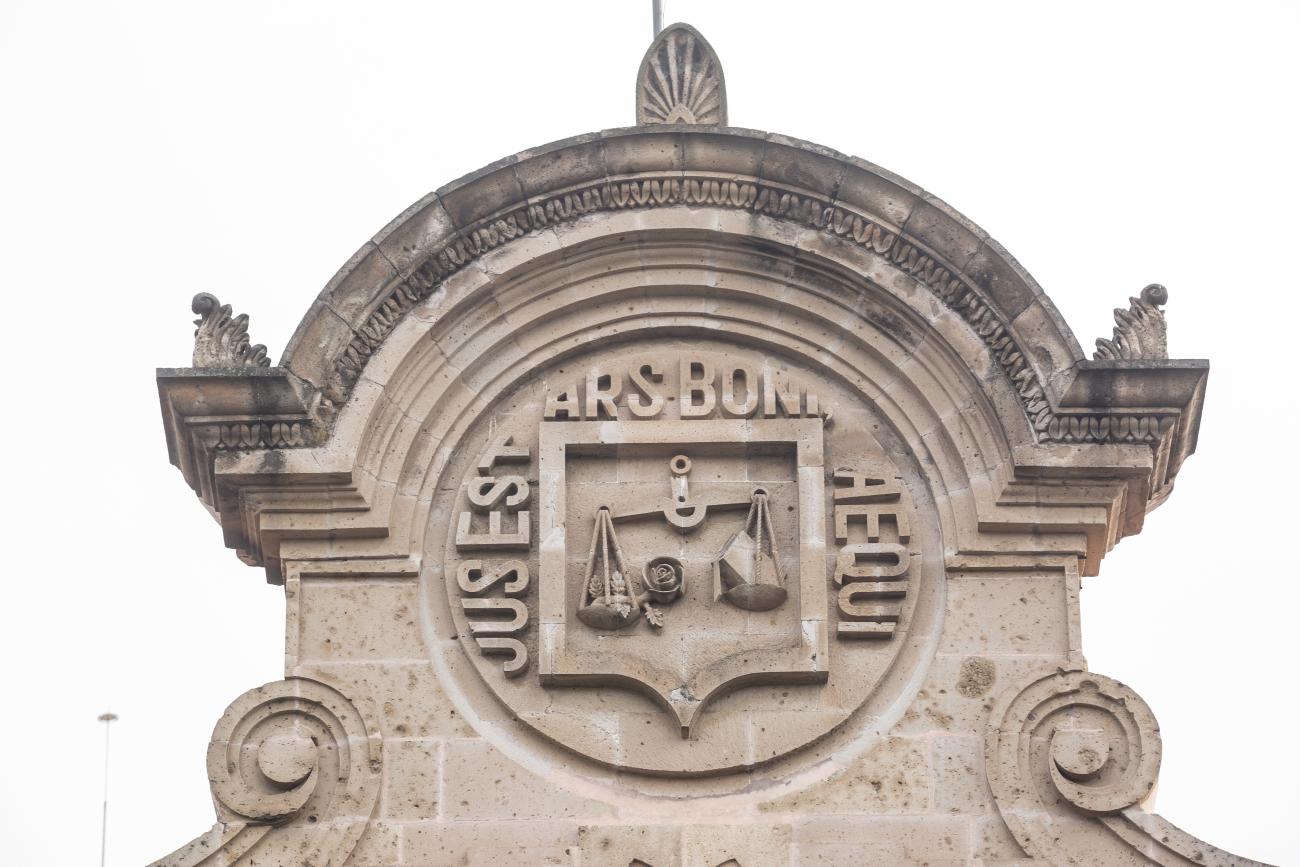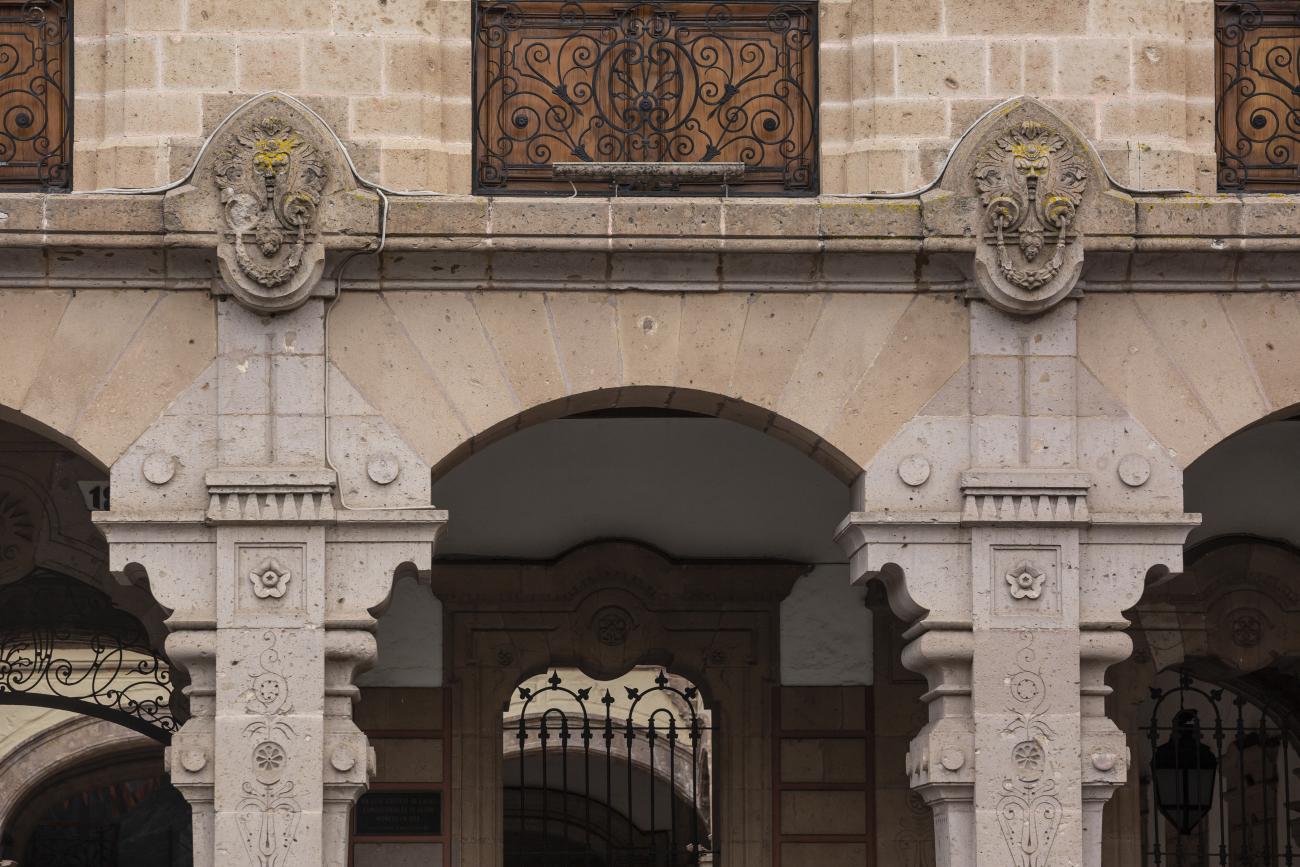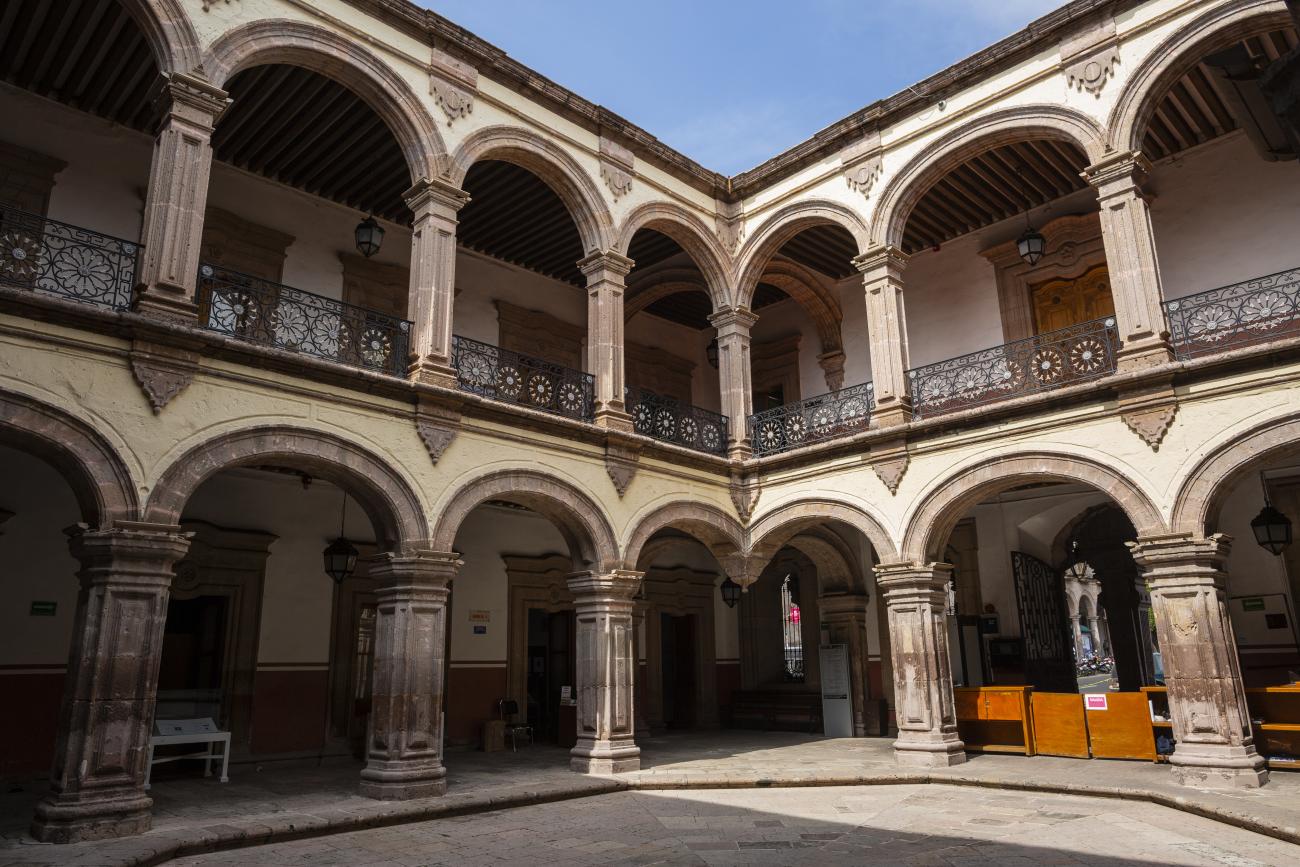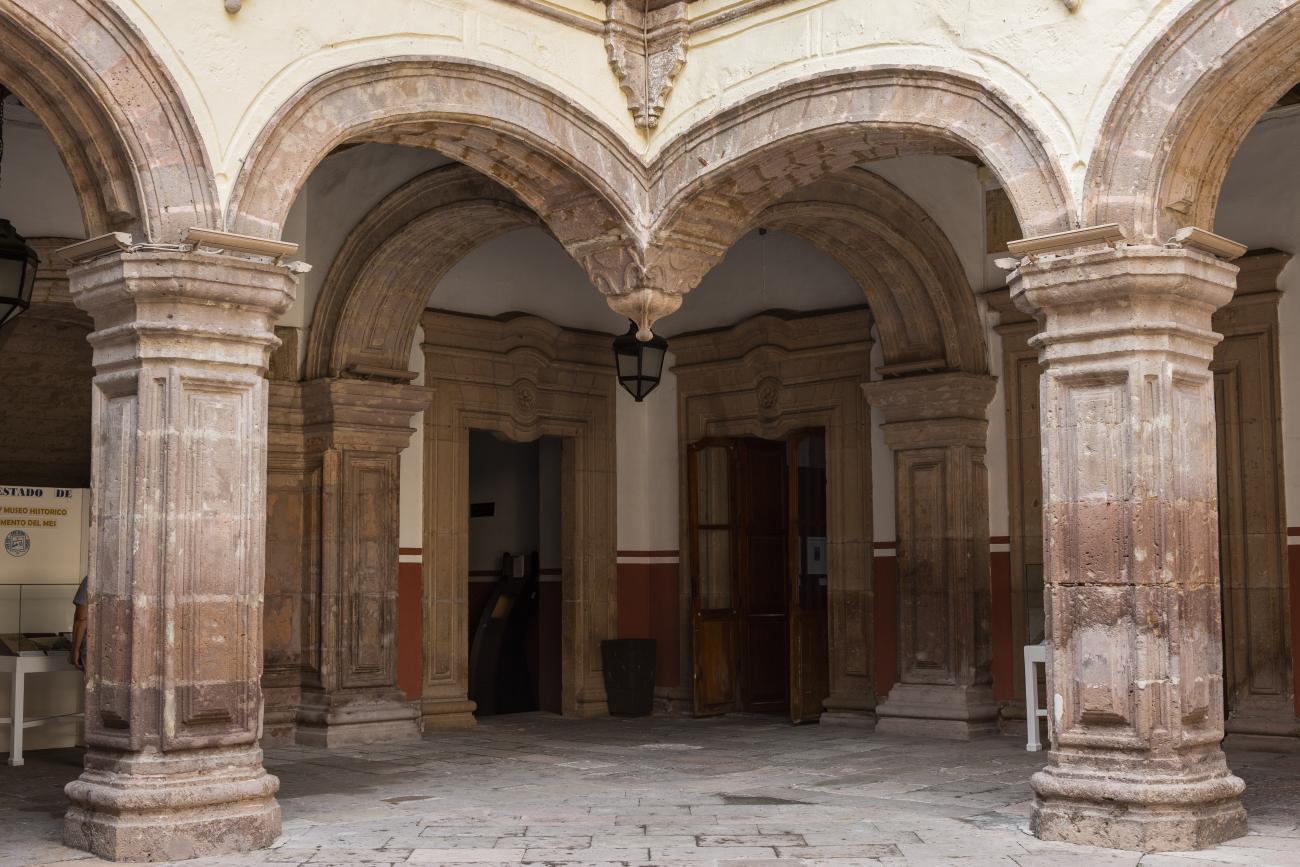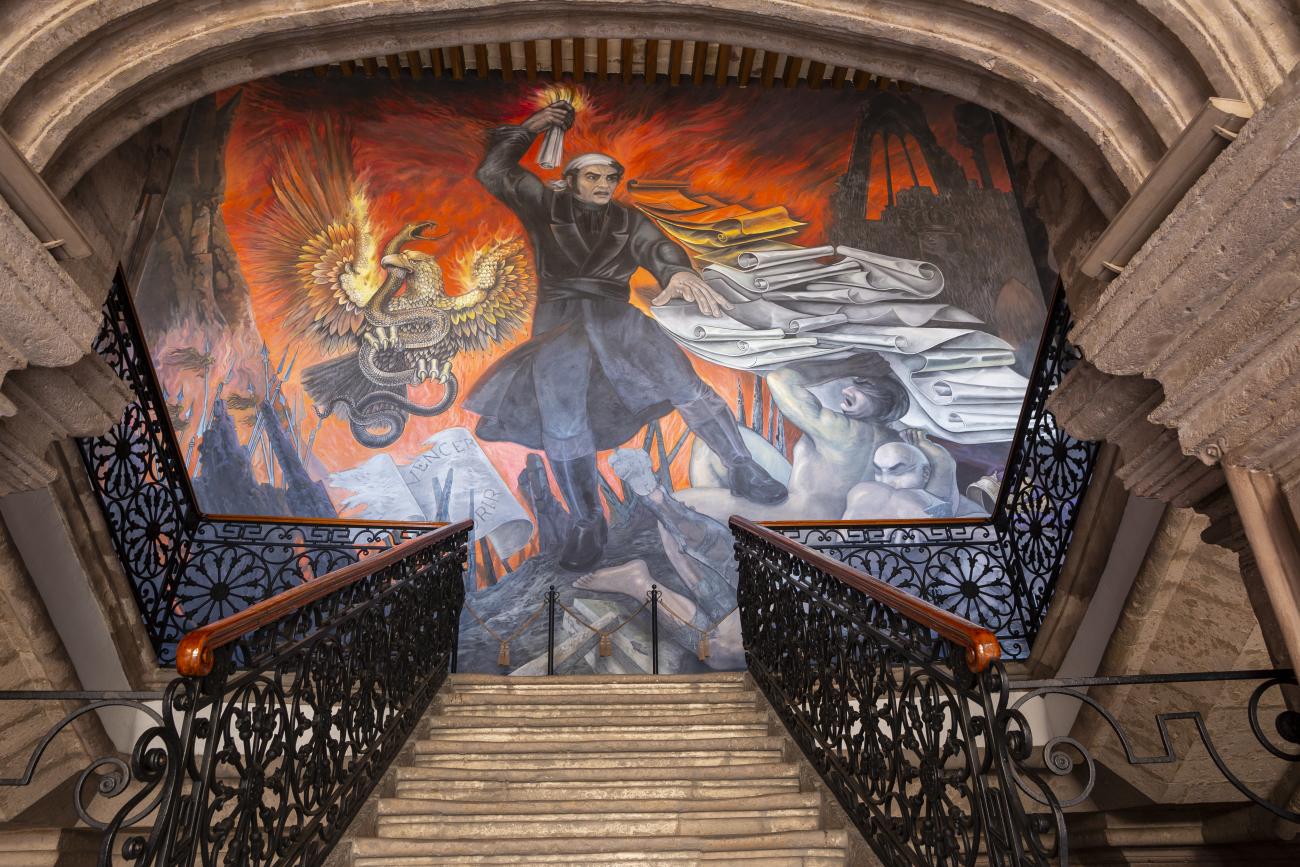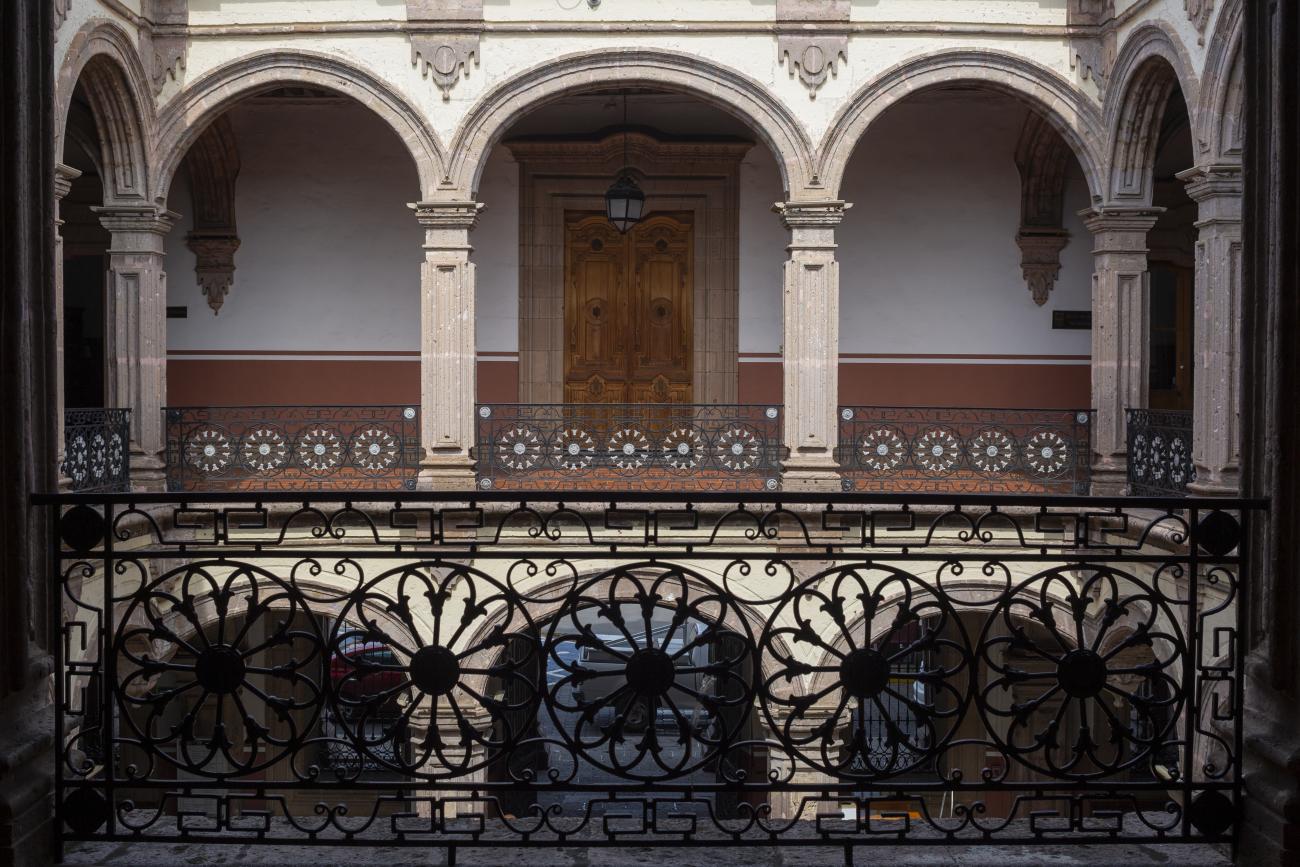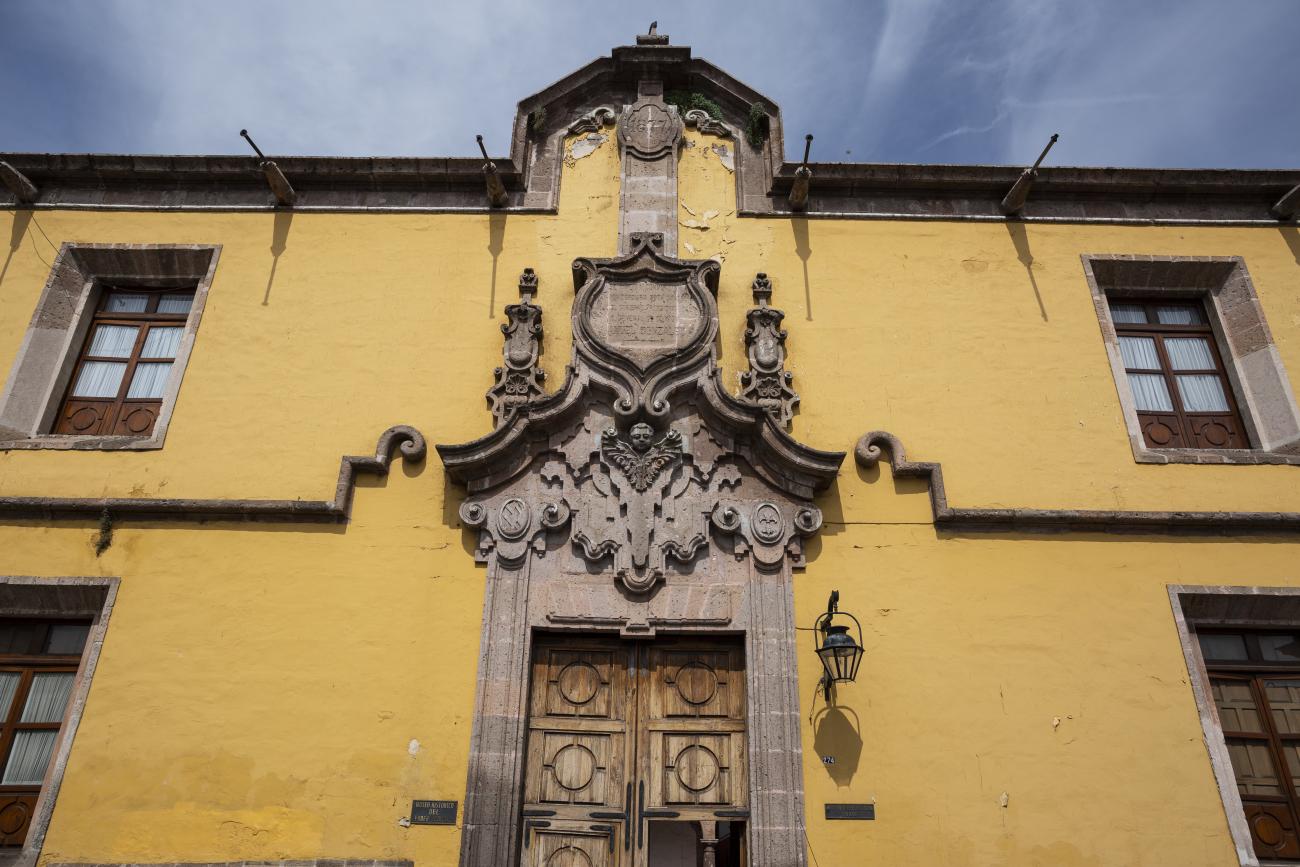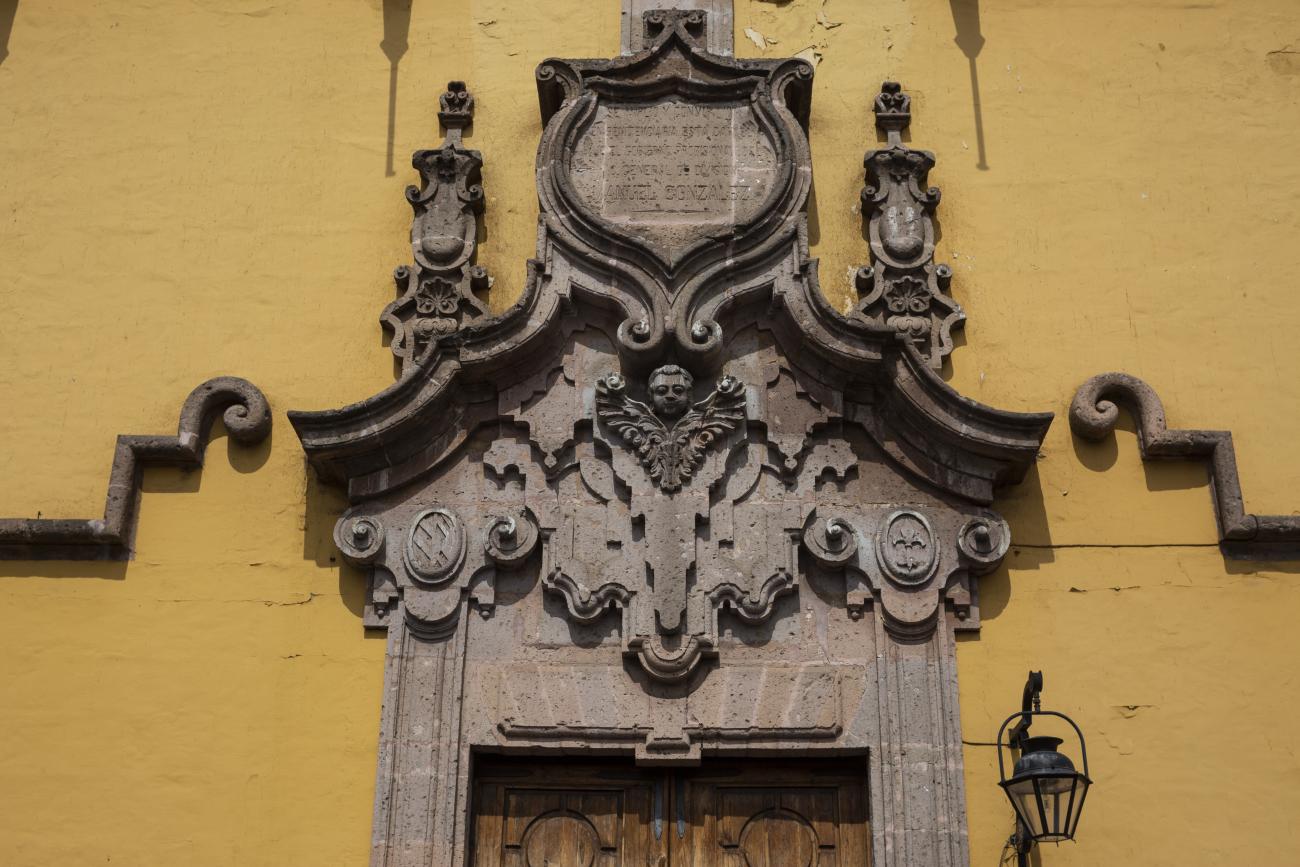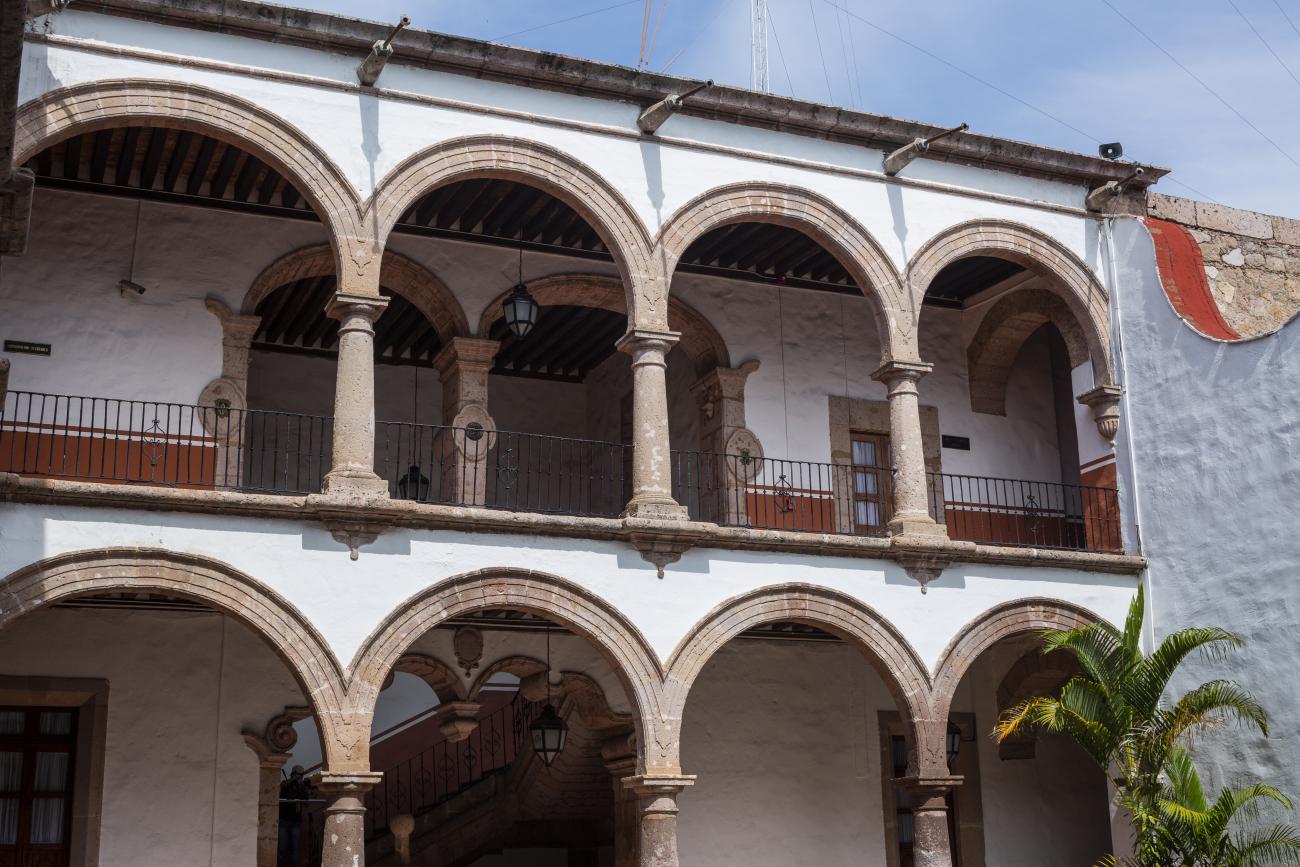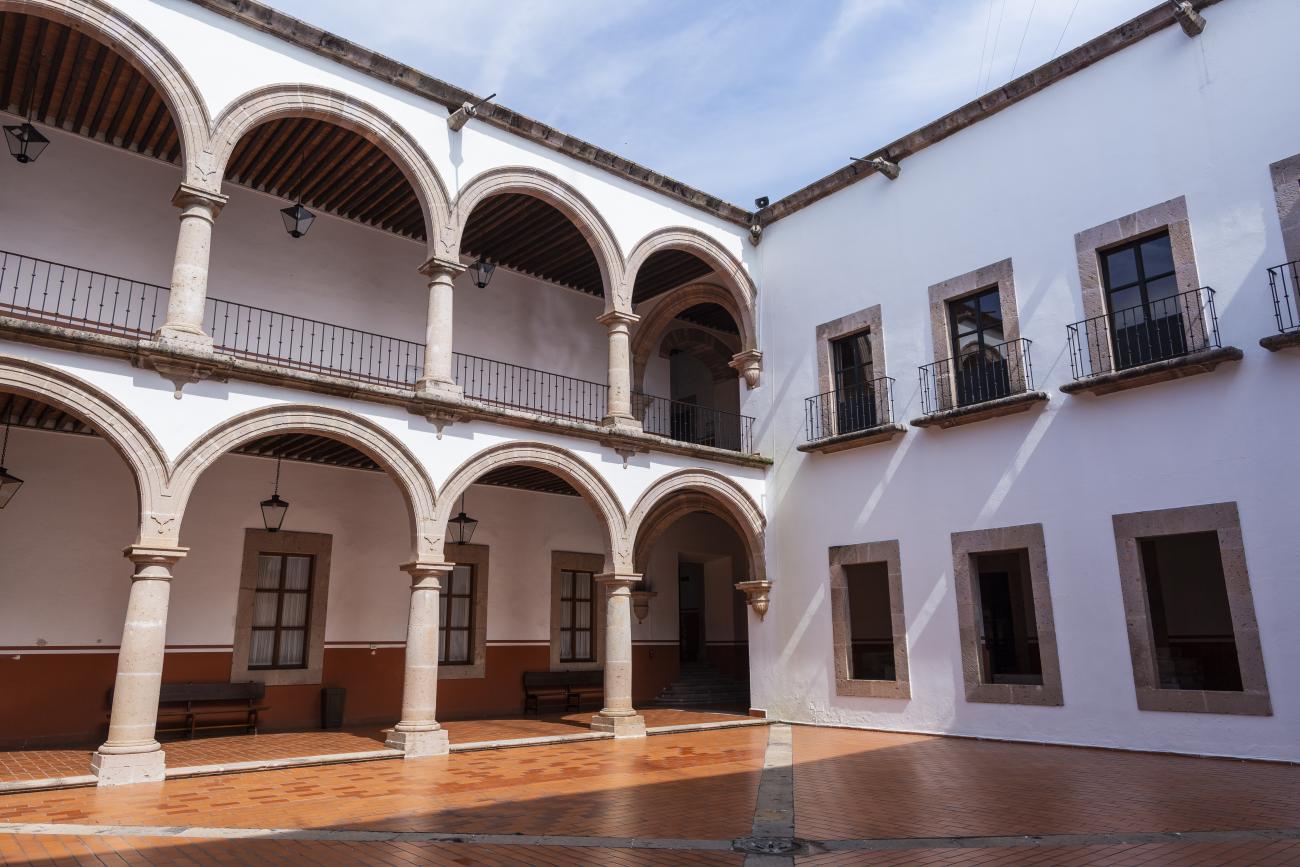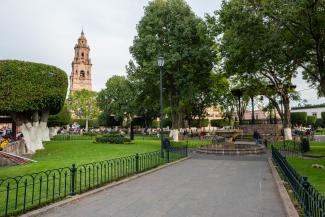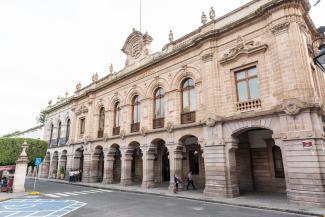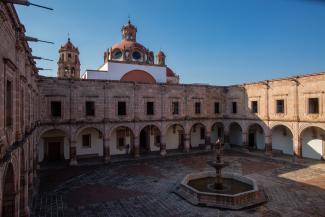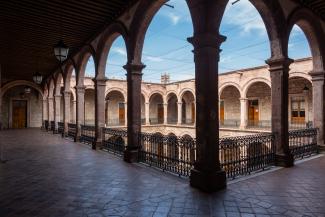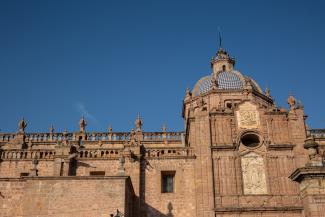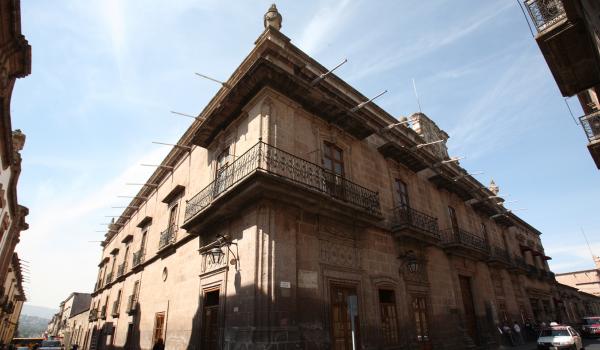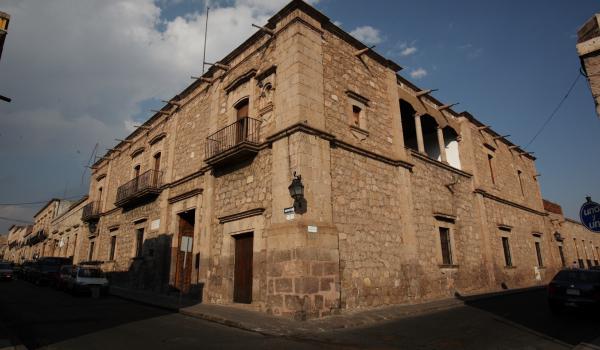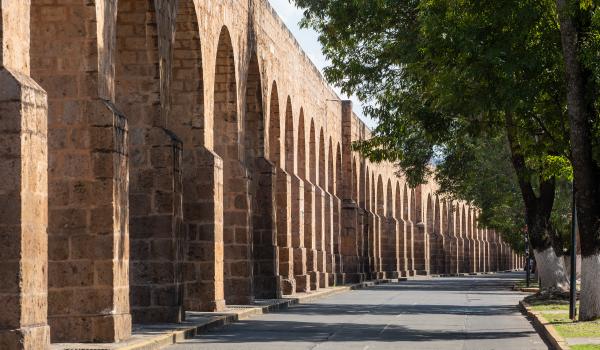Morelia
Historical Monuments Zone
Abstract
City of pink stone laid out around its Cathedral. It preserves the layout of the 16th century, a character marked by its 17th-century monasteries, and an imposing aqueduct from the 18th century. It bears in its name the pride of having been the birthplace of José María Morelos y Pavón, one of the leaders of the independence movement in Mexico.
The “city of pink stone,” named for the color of the stone used in the construction of its buildings, was established in the Guayangareo Valley in a site near a pre-Hispanic settlement of Pirinda Indians. In 1531, the Franciscan friars Fray Juan de San Miguel and Fray Antonio de Lisboa arrived in this valley and established a settlement where they began the evangelization of the indigenous people of the region. This is the earliest evidence for the existence of the city.
During the viceregal period, Morelia was called Valladolid, although in early times it was known as the “City of Mechuacán,” a title it vied for with Pátzcuaro, which was then the seat of the bishopric and the powers of the viceregal government, and was also the larger settlement, mostly of indigenous people, until the last third of the 16th century.
The city of Valladolid was founded by order of the viceroy Antonio de Mendoza on May 18, 1541, as a result of the political pressure exerted by the encomenderos of Michoacán, who repeatedly demanded the founding of a Spanish city to challenge the dominance of Pátzcuaro, and the transfer of religious and civil powers. This transition took place in 1580.
In addition to the Franciscans, the Augustinians, the Jesuits, the Carmelites, and the Mercedarians, the female branch of the Order of Preachers all established bases in Valladolid, meaning the city was full of monasteries and convents during the 17th century.
Valladolid was a settlement that emerged from a Spanish-led project. For the location of the Cathedral, whose construction commenced in 1660, the highest point of the valley and a spacious site were chosen. Likewise, the old Calle Real (now Avenida Francisco I. Madero) was laid out by cord, from east to west, as the main axis of the city. Using this as a starting point the other plots were distributed in a more or less regular manner, and were allocated to monasteries, churches, government buildings and private residences.
In the grounds located to the south of the cathedral, the city hall, the jail, stores and houses were located. The sumptuous Spanish and criollo houses were established near the cathedral and the main street, while the rest of the population was grouped into neighborhoods located on the periphery or in the agricultural estates that surrounded the city.
Throughout the 18th century, the civil, religious, landowner and merchant authorities agreed to improve the appearance of the city as a means of displaying their power and wealth. However, the city lacked an adequate drainage and water distribution system, so in 1705 the construction of the aqueduct began. However, by the end of the 18th century it already presented many deficiencies, so in 1785 the bishop paid for its reconstruction, resulting in the monumental structure that has become one of the symbols of the city.
The city of Valladolid is also recognized nationwide as the birthplace of a number of central figures of the independence movement in Mexico: José María Teclo Morelos y Pavón, a clergyman and military man who laid the foundations of the first liberal Constitution of Mexico, was born here on September 30, 1765, and Agustín de Iturbide, one of the key figures who signed the act of Independence and who became Emperor of Mexico, was born in the city on September 27, 1783.
A very notable event that even predates the beginning of the independence movement was the formation of the so-called “Conspiracy of Valladolid” that took place in 1809. This was a meeting of a group of wealthy criollos who sought to establish a junta or congress to govern the viceroyalty of New Spain on behalf of King Fernando VII, since the Spanish throne had been usurped by the French and the king was imprisoned. This group was led by Mariano Michelena and José María García Obeso, officers of the infantry regiment. The “Conspiracy” was discovered and its members were arrested, however, they had already established contact with criollos from other cities such as Querétaro, where the plan that would fire up the independence movement was devised. In 1828, with Mexico already an independent country, the city of Valladolid changed its name to Morelia, in honor of its prodigal son José María Teclo Morelos y Pavón.
By the mid-19th century, there was a change in mentality towards more liberal ideas that brought with it major and rapid transformations in the city. As of 1856, with the enactment of the Ecclesiastical Property Confiscation Law, church property was “taken by storm” to demolish the walls and transform the old cemeteries into new urban spaces, to divide properties and open up new streets, and to sell their assets. Likewise, the names of the streets were changed and new urban infrastructure was built.
During the second half of the 19th century, the city grew and new construction styles and new urban planning concepts of European origin were introduced, which brought about a transformation in the use of spaces. They also ordered the removal of numerous coats of arms that adorned the facades of the houses because it reminded them of “the past of viceregal oppression.” New technologies for communication such as the telegraph, the railroad, electric lighting and the tram were also introduced. The streets of the city became tree-lined promenades and the old cobblestones were changed to smooth paving slabs in 1910, the new municipal cemetery was established and that same year work began to install a piped water network.
In 1917, the Michoacan University of San Nicolás de Hidalgo was created as an heir to the Colegio de San Nicolás Obispo, first founded in 1540 by Bishop Vasco de Quiroga in Pátzcuaro and transferred to Valladolid in 1580. The illustrious Miguel Hidalgo y Costilla was rector of this school and distinguished figures such as José María Morelos y Pavón, José María Izazaga and Ignacio López Rayón studied there.
Today, Morelia is the capital and the most populous city of the State of Michoacán. It hosts a number of international festivals: the “Miguel Bernal Jiménez” music festival, the Organ Festival and the Film Festival, and others related to the arts that have gained great importance internationally.
The Zone of Historical Monuments of the city of Morelia was declared on December 19, 1990, and was inscribed on the World Heritage List by UNESCO in 1991. The protected area covers 3.43 km2, which includes buildings from the 16th to 19th centuries, distributed over 219 city blocks. The oldest is the former Franciscan monastery complex dedicated to Saint Bonaventure, while the Cathedral, the former Bishopric and the clerical jail also stand out; the churches and former cloisters of San Agustín; of Our Lady of Mount Carmel; of Our Lady of Mercy; of Santa Rosa María or “Las Rosas”; of “Las Monjas” (of the Catarine nuns); of the Capuchin nuns (Indias Cacicas); of the Dieguinos (Sanctuary of Guadalupe and the Faculty of Law); the Church of the Cross; the parish church complex of San José; the neighborhood chapels such as the Virgen de Lourdes (formerly the Señor del Rincón chapel), the San Juan, the “Señor de La Columna” and the “El Prendimiento”, the “Santo Niño” and the “Soterraña” (former chapel of the Virgen de las Nieves).
Other significant buildings include those destined for educational, welfare, service and public decoration purposes or for the use of the civil and military authorities, among which may be noted: the Former Tridentine Seminary, currently the State Government Palace; the Town Hall and the Alhóndiga, currently the Historical Museum of the Judicial Power of the State of Michoacán de Ocampo; the headquarters of the Colegio de San Nicolás Obispo, now known as the “Primitivo y Nacional Colegio de San Nicolás de Hidalgo”; the Jesuit College, dedicated to San Francisco Xavier, also known as the Clavijero Palace or the Clavijero Cultural Center; the Colegio Teresiano de Guadalupe, currently the Federal Palace; the Former Diocesan Seminary; the House of Tithes, today a bank; the Episcopal Palace; the Juaninos Hospital; the Tobacco Factory, today the Municipal Palace; the Mesón de San Agustín, and the Mesón de la Soledad, among many others.
In terms of private civil architecture, the residences of the following families remain: Huarte, Michelena, Anzorena, García Obeso, Lejarza y Unzaga, Iturbide, Foncerrada, Peredo, Vélez, Alzúa, Oviedo, Gómez, Mauleón, Pagola, De los Ríos, Abad and Queipo, to name only a few, among the more than 1,100 constructions of private civil architecture that are still preserved.
The urban landscape of Morelia alternates with 14 plazas large and small, gardens and fountains, among which are of particular note: the Plaza de los Mártires; the Plaza de Armas; that of Rayón; that of San Agustín; that of the Agrarian Reform, formerly San José; “P. Bocanegra,” formerly Del Carmen; “Vasco de Quiroga,” formerly Plaza de Capuchinas; Melchor Ocampo, formerly Plaza de la Paz; Revolution; Villalongín; of Carrillo; “Heroes of 1947” formerly I. Huarte square; the “Luis González Gutiérrez” gardens, formerly the Roses; the Morelos circle, the fountains in these plazas and that of “Sorinne.”
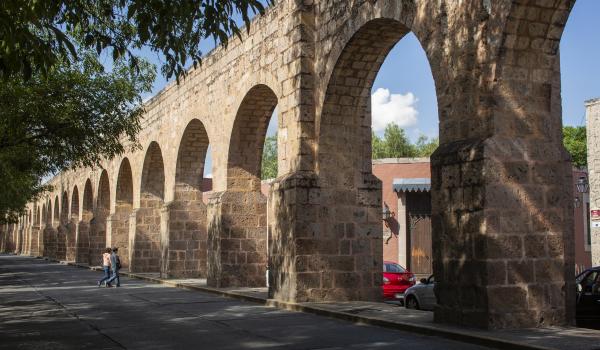
Acueducto de la Ciudad de Morelia
Since the city's inception, a pipe made of wood, clay, and straw was built to carry water from the east to the center.
Acueducto de la Ciudad de Morelia
Since the city's inception, a pipe made of wood, clay, and straw was built to carry water from the east to the center. In 1598, Mayor Tomás González de Figueroa ordered the construction of a more resistant pipe made of lime, stone, earth, and sand, but it was not until 1705 that Bishop Manuel Escalante appointed Antonio Altamirano as the builder of the quarry archway. Between 1785 and 1789, Fray Antonio de San Miguel, bishop of Michoacán, ordered the reconstruction of the aqueduct, which had been damaged by earthquakes. The work consists of 1,700 meters composed of 253 arches and two water tanks.
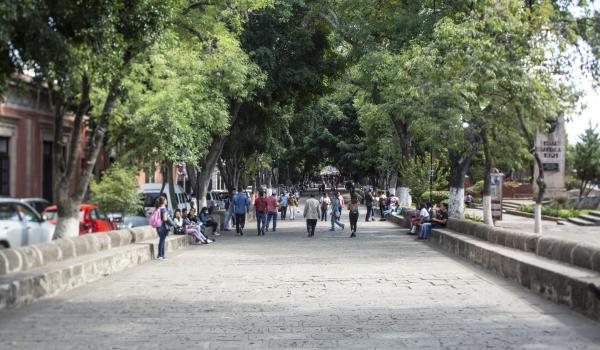
Calzada Fray Antonio de San Miguel
When it was built, it connected the city with the Chapel of Our Lady of Guadalupe, located where the Temple of San Diego now stands. This is why it is also known as Calzada de San Diego or Calzada de Guadalupe. At the end of the 18th century, stonework with benches and ash trees was added.
Calzada Fray Antonio de San Miguel
When it was built, it connected the city with the Chapel of Our Lady of Guadalupe, located where the Temple of San Diego now stands. This is why it is also known as Calzada de San Diego or Calzada de Guadalupe. At the end of the 18th century, stonework with benches and ash trees was added. Surrounding it are summer houses from the 18th and 19th centuries.
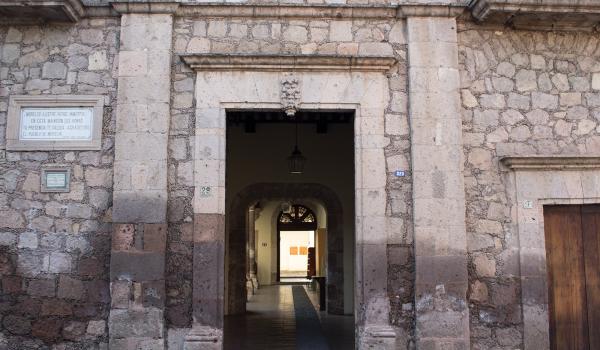
Museo de Sitio y Archivo Histórico Casa Morelos
This single-story house was built in 1758. Anastasio Martínez bought it in 1774, and in 1801 José María Morelos, then priest of Carácuaro, acquired it and added a second floor, two corridors leading to the courtyard, and a kitchen on the terrace.
Museo de Sitio y Archivo Histórico Casa Morelos
This single-story house was built in 1758. Anastasio Martínez bought it in 1774, and in 1801 José María Morelos, then priest of Carácuaro, acquired it and added a second floor, two corridors leading to the courtyard, and a kitchen on the terrace. During the insurgency, the royalists seized the property and almost destroyed it. The heirs recovered and rebuilt it, altering the original style. In 1910, the federal government acquired the house and restored it in 1934 to return it to its former appearance. It currently functions as a museum.
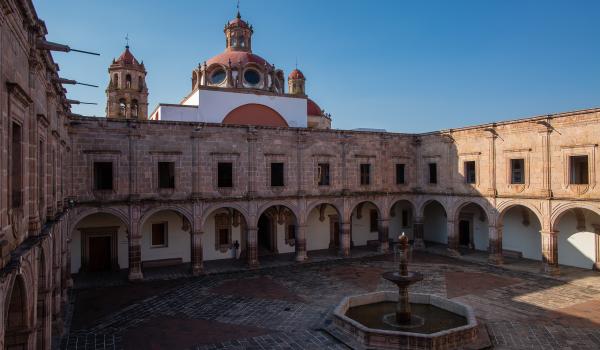
Centro Cultural Clavijero
This property was donated to the Society of Jesus in 1581, and the College of San Francisco Javier was established there until June 25, 1767, when they were expelled from New Spain.
Centro Cultural Clavijero
This property was donated to the Society of Jesus in 1581, and the College of San Francisco Javier was established there until June 25, 1767, when they were expelled from New Spain. Since 1773, this building has had multiple uses, including as a college for secular clergy, a correctional facility for priests, and a prison during the War of Independence. In August 1824, the Constituent Congress of the State of Michoacán and the Court of Justice were established there.
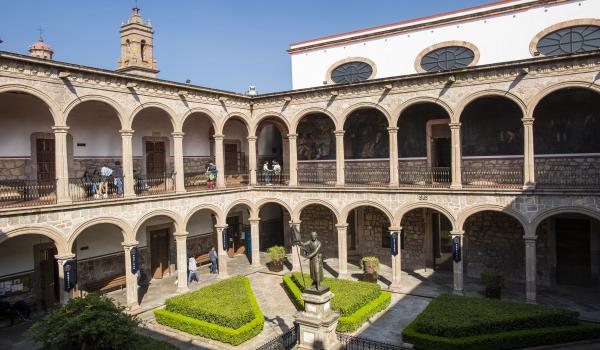
Colegio Primitivo y Nacional de San Nicolás de Hidalgo
The school was founded in 1540 in Pátzcuaro by Vasco de Quiroga. It moved to Valladolid, merging with the school in San Miguel. Miguel Hidalgo was a student, teacher, treasurer, and rector at this school. In 1790, Morelos began his ecclesiastical career.
Colegio Primitivo y Nacional de San Nicolás de Hidalgo
The school was founded in 1540 in Pátzcuaro by Vasco de Quiroga. It moved to Valladolid, merging with the school in San Miguel. Miguel Hidalgo was a student, teacher, treasurer, and rector at this school. In 1790, Morelos began his ecclesiastical career. It was closed by the viceregal government in 1810 as a result of the independence movement. In 1847, it resumed its educational work as a secular institution, becoming the predecessor of the Universidad Michoacana.
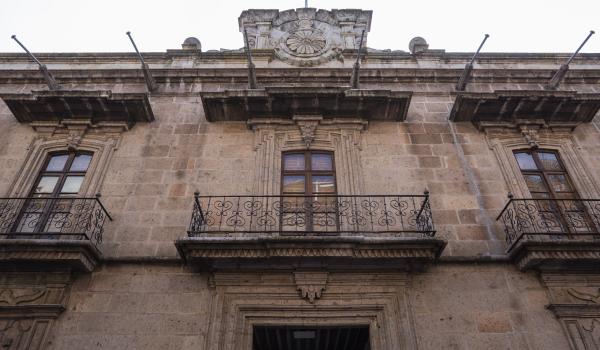
Museo Regional Michoacano
During the 18th century, this palatial house belonged to Isidro Huarte, a wealthy merchant and politician who became the father-in-law of Agustín de Iturbide. In 1864, it became the property of Francisca Román and was visited by Maximilian of Habsburg.
Museo Regional Michoacano
During the 18th century, this palatial house belonged to Isidro Huarte, a wealthy merchant and politician who became the father-in-law of Agustín de Iturbide. In 1864, it became the property of Francisca Román and was visited by Maximilian of Habsburg. It later housed the Girls' Academy and then the Normal School. Its magnificent architecture is notable for its flying buttress located at the entrance to the staircase, in the center of the south corridor of the main courtyard; it appears to be double but is a single structural arch. On the walls of the staircase are murals with historical motifs painted by Alfredo Zalce, and in the corridors on the upper floor are paintings by Federico Cantú, Grece Greenwood, and others. It currently houses the Michoacán Regional Museum, whose collection includes a section dedicated to Michoacán's ecology and five others that showcase everything from pre-Hispanic times through archaeological objects to the Cardenista period, including the colonial era, independence, the reform, and the Porfiriato.
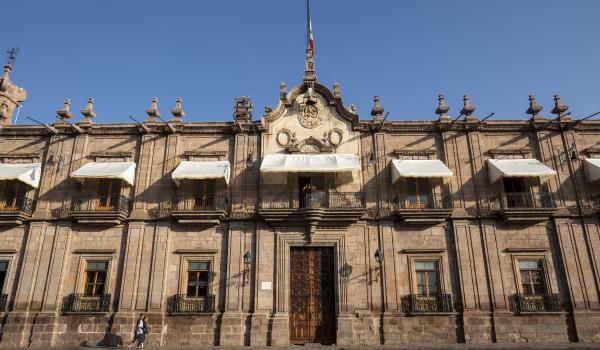
Palacio de Gobierno
Construction on this building began on January 18, 1761, and it was inaugurated on September 29, 1770, as the Tridentine Seminary of Valladolid, dedicated to Saint Peter the Apostle and governed by Agustín Francisco de Esquivel.
Palacio de Gobierno
Construction on this building began on January 18, 1761, and it was inaugurated on September 29, 1770, as the Tridentine Seminary of Valladolid, dedicated to Saint Peter the Apostle and governed by Agustín Francisco de Esquivel. In August 1811, the school was closed and the building was occupied by royalist army troops. On November 4, 1819, it reopened as a seminary, but was closed again on May 12, 1859, becoming government property. Engineer Guillermo Wodon de Sorinne refurbished the building for use by the state government. In 1961, Alfredo Zalce painted the murals on the staircase and walls of the upper floor with scenes from the history of Mexico and the founding of the city of Morelia.
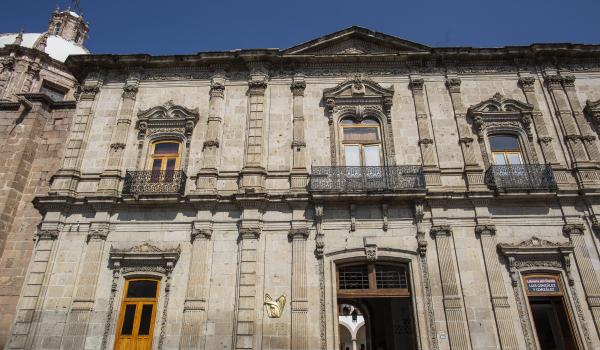
Palacio Federal
Archbishop José Ignacio Arciga commissioned the construction of this building in 1891, entrusting the project to French architect Adolfo Tresmontels.
Palacio Federal
Archbishop José Ignacio Arciga commissioned the construction of this building in 1891, entrusting the project to French architect Adolfo Tresmontels.
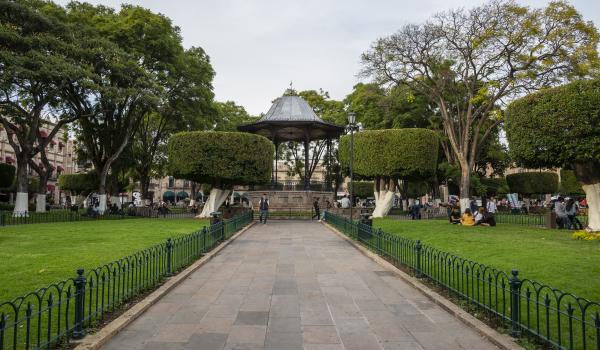
Quiosco y fuentes de la Plaza de Armas
The square was a 296 by 130 m esplanade where civil and religious festivities were held, as well as a market. It is currently divided into two squares: Melchor Ocampo (formerly La Paz or San Juan de Dios) and Los Mártires or Juárez (formerly the main square).
Quiosco y fuentes de la Plaza de Armas
The square was a 296 by 130 m esplanade where civil and religious festivities were held, as well as a market. It is currently divided into two squares: Melchor Ocampo (formerly La Paz or San Juan de Dios) and Los Mártires or Juárez (formerly the main square). The fountains in this square were built in 1870 during the refurbishment of the gardens. Their reservoirs are circular with molded parapets and cup-shaped spouts.
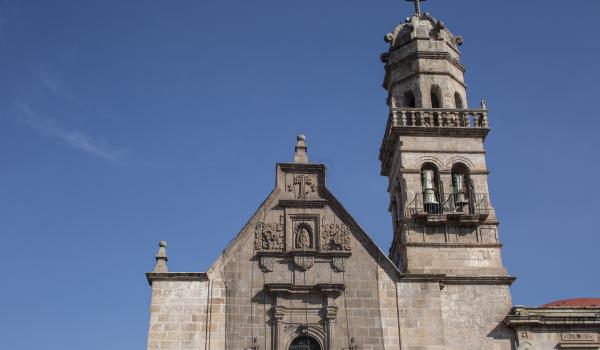
Santuario de la Virgen de Guadalupe
Construction of this building began in 1708 with the sponsorship of Bishop García Felipe Legaspi. It was donated to the province of the Discalced Franciscans of Mexico in 1747.
Santuario de la Virgen de Guadalupe
Construction of this building began in 1708 with the sponsorship of Bishop García Felipe Legaspi. It was donated to the province of the Discalced Franciscans of Mexico in 1747. In 1748, it was donated to the province of San Diego de Alcalá, also belonging to the Discalced Franciscans, and its name was changed to “San Diego.” Between 1769 and 1777, Tomás Huerta added a transept and presbytery to the nave, giving the building a Latin cross layout.
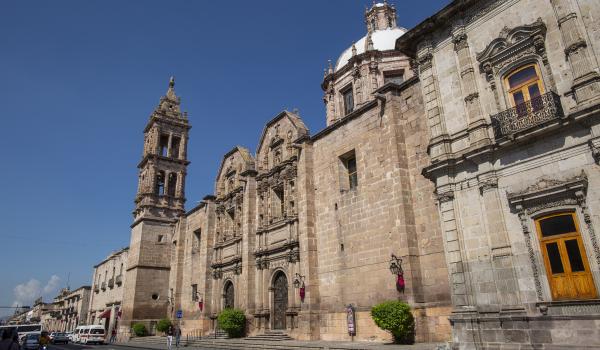
Templo de las Monjas
The temple was built at the end of the 16th century, but by the beginning of the third decade of the 18th century, it was in a state of serious disrepair, so Bishop Escalona y Calatayud ordered a new church to be built for the Dominican nuns.
Templo de las Monjas
The temple was built at the end of the 16th century, but by the beginning of the third decade of the 18th century, it was in a state of serious disrepair, so Bishop Escalona y Calatayud ordered a new church to be built for the Dominican nuns. On May 3, 1738, the nuns were transferred in solemn procession to their new convent and temple, which was dedicated to Saint Catherine of Siena. They remained there until March 30, 1863, when they were secularized by the Juárez Law. They returned during the Empire, but had to leave after the triumph of the Republic in 1867. When the civil government took office, the property of the convent and temple was divided up, with some parts remaining in private hands.
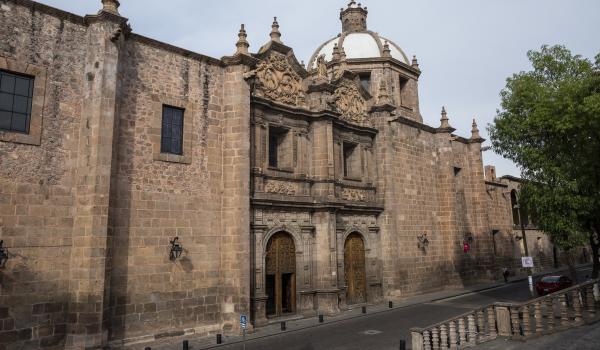
Conservatorio de las Rosas
This building, which currently houses the Conservatorio de las Rosas, belonged to the Dominican Convent of Santa Catalina de Siena and, later, to the Colegio de Niñas de Santa Rosa de Santa María, both institutions noted for their musical activities.
Conservatorio de las Rosas
This building, which currently houses the Conservatorio de las Rosas, belonged to the Dominican Convent of Santa Catalina de Siena and, later, to the Colegio de Niñas de Santa Rosa de Santa María, both institutions noted for their musical activities. In 1757, Martín de Elizacoechea rebuilt the temple and expanded the school. It was confiscated in February 1812, and it was not until 1863 that the school reopened.
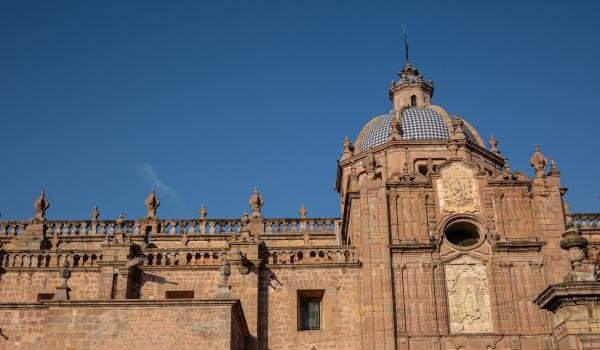
Catedral de Morelia
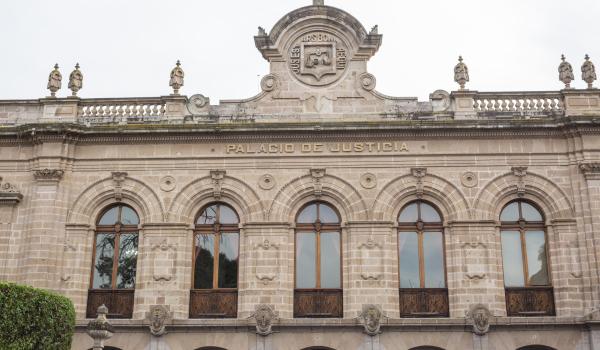
Palacio de Justicia
During the viceroyalty, this building housed the royal residences, which were rebuilt at the end of the 17th century. After independence, it was used as the Government Palace and later as the Municipal Palace.
Palacio de Justicia
During the viceroyalty, this building housed the royal residences, which were rebuilt at the end of the 17th century. After independence, it was used as the Government Palace and later as the Municipal Palace. During the Second Empire, it was the headquarters of the San Rafael school and, from 1867 to 1869, the San Nicolás school. At the end of the 19th century, it was restored by the engineer G. Wodon de Sorine.

